Taboo (1995) #1-9 edited by Stephen Bissette
Only the last two issues of this was published by Kitchen Sink, so I wasn’t sure whether to just (re-)read those issues, or do the entire series.
On the one hand, I almost did Taboo in the Aardvark-Vanaheim & Renegade blog series, because Taboo was kinda-sorta published by Aardvark-Vanaheim. (It was planned as an Aardvark One publication, but then Dave Sim got into a fight with the distributors, and his non-Cerebus publications were held hostage. So Taboo was self-published by Bissette (and Totleben)… allegedly. Accounts differ, but Sim has claimed at least once that he published the two first issues. But on the down low.)
On the other hand, I remember the series being really grisly, and did I want to subject myself to one thousand pages of this stuff? In particular, I vaguely recall one piece with babies being tortured…
I think I stopped buying Taboo after that thing back in the 90s, but I’ve picked up an issue here and there over the years, and then I decided to just go with the flow and read them all now.
So you get snaps from the entire series here, and if you’re squeamish, you should probably close this browser window now, because there’s no way to talk about Taboo without including some pictures of torture and stuff. (But I’m not including the grisliest stuff.)
Another reason I wanted to cover Taboo is that it’s a sort of interesting thing in itself, publishing wise, and got a lot of attention at the time — for better or for worse. It was published at a time when self-publishing had become this whole ideological thing, and would go on to ruin most people in the cohort whose name wasn’t Jeff Smith.
But we start off with an introduction from Clive Barker, the biggest name in horror at the time.
And Bissette (presumably; it reads like it’s by him) provides an introduction to every piece — one page minimum.
Which makes for a bumpy reading experience when some of the pieces are just a page or two long, like this S. Clay Wilson thing.
Bissette had been talking up Taboo before publication about how this was going to be a totally different kind of horror anthology: Instead of the old EC horror retreads, we’re going to get really horrifying things. New horrifying things. Which makes this an odd choice, because it’s an old-fashioned O. Henry twist ending sort of thing, and would have been perfectly at home in any EC-like horror anthology.
Bissette has a lot of things to say about some of the pieces.
But it’s by Alan Moore (and Bill Wray), so it’s understandable. It’s good.
Charles Burns stops by with a four page Teen Plague vignette — I think this was expanded into a longer piece later? Or is this just a reprint?
Bernie Mireault isn’t a household name in horror comics, and it’s not that horrifying.
Oh, I remember this one. I mean, I remember the artwork, but not the story. It’s Throat Sprockets by Tim Lucas and Mike Hoffman, and it’s properly creepy and mysterious.
Bissette explains why Eddie Campbell’s story wouldn’t have found its home in a traditional horror anthology.
Probably because it’s not a horror story, but perhaps I’m just nitpicking. I’m always up for some Campbell, but this is not his best work.
Bissette contributes a piece himself, and is probably the most gruesome thing in the issue. But I’m not actually sure what it’s about. Doctors that don’t wash their hands?
Wow! Keith Giffen shows up in his most Muñoz-looking style ever in a story written by Robert Loren Fleming. It’s good.
And… a couple of older strips by Chester Brown?
So that’s the first issue. I’m not quite sure it’s 100% successful — the verbose introductions and the general shortness of the pieces (there are no long stories at all) makes for choppy reading. But on the other hand, the number of top rate creators they’ve managed to entice into contributing is amazing.
The second issue has longer pieces, which is nice, but it’s also got less compelling work (Tim Lucas and Simonida Perica-Uth).
And stuff that doesn’t feel quite at home in this company (Rick Grimes).
I do like these mini-bibliographies they include on the introduction pages, though.
And possibly the first penis of the series! Cara Sherman Tereno does a 25 page thing about gay vampires, which sounds fun, if derivative. Unfortunately, it’s pretty unreadable.
Yay! Richard Sala.
The main thing Taboo is remembered for is that this is where the serialisation of Alan Moore and Eddie Campbell’s From Hell started.
Bissette is interviewed in The Comics Journal #185, page 61:
Anotherissue I saw at Tundra was a refusal to work tothe
strengths of a product. I want to mention that because you and
I both agreed that there was a real identity to the books that
Mark Marti n had a hand in. Iremembera numberofmeetings
I was involved in where I tried to impress upon them the value
ofhaving a separate imprint: Ifthey had an imprint that would
link Mark’ s humor books, that might have provided a strong
marketing tool. I had a personal stake in the issue, too,
because it was very upsetting to me, after the first From Hell
collection was put Out, that there was no attempt to link From
Hell and Taboo. It made no sense to me. Here’s Taboo
running the future chapters of From Hell, and yet they didn ‘t
even want to put these two things near the same page in the
catalog. In fact, they seemed to do their utmost to distance
them. That was another suicidal aspect ofTundra: They never
seemed to play to the strengths of the product that they had
already made a financial commitment to. That seemed non-
sensical to me.
The first From Hell collection was a real death blow to
Taboo. It killed our numbers because the people that were
picking up Taboo particularly to follow From Hell had no
reason to pick it up any longer. It didn’t matter that they
were missing out on new stuff by Charles Burns, S. Clay
Wilson, Eddie Campbell and other creators who were in
there. The other death blow was Neil Gaiman’s aborted
Sweeney Todd. Neil turned in the first prologue, the one
that saw print, and never wrote another chapter. To argue
on Neil’s behalf, I think Neil was able to perceive quicker
than I was that Taboo was already a dead, stiff, cold corpse
[laughs]. Why invest further energy into a failed venture
just as the Vertigo line was being launched with Neil as the
clearest star in their firmament? So I understand why it
went that way. Dave Sim had told me when Taboo #2
came out with that first chapter of From Hell, “This will
be the death of the anthology. Serialized adventures,
serialized stories kill anthologies.” And he was right.
Serialized stories tend to outlive and outgrow the anthol-
ogy. And yet, there they are, the backbone of that book.
The fact that Tundra was an accomplice in that, and yet
had made a very serious financial investment in both
properties — it was infuriating. They didn’t Want to see
what the consequences were gonna be; it was easier to just
scapegoat me, and ignore the issue itself altogether.
Sim had a point, obviously, but From Hell was the main draw for 99.7% of everybody buying Taboo, surely, so without From Hell, there probably wouldn’t have been many issues, either.
The Comics Journal #128, page 22:
Taboo #2 Finds New Printer
Green Mountain Press Of Westminster, Vermont, has agreed to print the second
issue of SpiderBaby Grafix’s Taboo horror anthology. The title had earlier been
refused by both Preney Print & Litho of Windsor, Ontario, and Wilcox Printers
of Ithaca, New York, for its graphic depictions of sex and violence.
SpiderBaby Grafix Co-Publisher Steve Bissette said Taboo will now ship
in early May rather than mid-April as originally planned.
“We lost a minimum of two weeks,” Bissette said. “It’s a setback, but we’ll
make do.”
Kim Preney, who printed Taboo #1, dropped the book after Bissette sent him
four samples Of the current issue’s most controversial pages, which comprised
work by Alan Moore and Eddie Campbell, S. Clay Wilson, and Cara Sherman.
Bissette said he then began “casting around for another printer,” initially fin-
ding Wilcox, which prints FantaCo’s Deep Red.
Bissette said, “Everything was ready to go with the book,” until he sent Wil-
cox those four sample pages, at which point Wilcox backed out.
Just the Hardcore, Please. Ironically, Bissette said solicitations for a toned-
down export edition, aimed at such strict markets as Britain and Canada, had
elicited only mediocre Orders — little, in hct, to fulfill his minimum.
“Even from England,” Bissette said, orders have been quite low: Titan ordered
1,300 standard, “uncut” editions but only 200 export, “toned-down” editions.
Thus, Bissette said, he may not even print the tamer version: “I can’t afford it.”
First Refusal. Preney said his shop has encountered trouble in the past with
the Windsor city government and local women’s anti-pornography groups for
printing allegedly obscene material, adding that some employees Of the com-
pany had themselves been uncomfortable with certain projects, and that a local
women’s group had “harassed” the company for once printing a Playboy-like
“magazine-style book.” Preney refused to name any of the former projects.
“I’d prefer not getting you involved or bringing the subject up again,” he told
the Journal. “It’s a dead issue.”
Preney also mentioned a mn-in his company had with city officials when prin-
ting jobs for a local distributor were wrapped in discarded interiors to Yummy
Fur #4 (the controversial comic book Preney once printed for Vortex Comics)
and given for delivery to young couriers.
Preney said parents of those children “went to the distributor, the distributor
went to the city, and the city came to us and laid the law on the line.” And Preney
stopped printing Yummy Fur.
Second Refusal. Wilcox representative Jim Leonard said the printer refused
the book because of its “explicit sexual content.”
“It’s definitely more exprlcit than anything that Taboo contained,” he said,
explaining that Wilcox had never agreed to print the book, but had offered quotes
and considered the project on the basis of the title’s first issue. He said “not
much in the first issue Of Taboo… would have prepared” him for the second
issue’s content.
Explicit sexual content!? Is he talking about the gay vampires cuddling? I bet he’s talking about the gay vampires cuddling — when printers get cold feet, it’s always when there’s a woman creator.
(Or it could be the four S. Clay Wilson pages, which are standard S. Clay Wilson fare.)
The third issue seems a bit exhausted, and is peppered by “will this do?” entries, like this Rick Veitch/Jack Weiner fumetti. Or as they present is as — computer artwork. Weiner has basically taken pictures and then photoshopped them a bit, and the results are underwhelming. (And Veitch’s story is a very traditional O. Henry one.)
Taboo had gotten some criticism for all the extreme violence towards women depicted, and this introduction to a story by Jim Wheelock seems to steel us towards something even more horrific than usual.
And indeed, it’s a nauseating story about (pretend) necrophilia and (not pretend) murder. It’s kinda vile — I think that’s what Wheelock was going for, but even so, it’s a bit much.
We get a continuation of sorts of Throat Sprockets, and the art is almost as sharp as the first outing, but not quite. The storyline is in soft focus, too — I’m not quite sure what they were going for here.
But the most vile piece here is the one by Rolf Stark and Marlene Stevens. It’s set during the Holocaust, and is about the camp commander torturing, raping and killing women while the wife and kiddies banter at home. It’s the sort of piece where the authors typically go “we want to shock people out of their complacency and really convey how horrific the Holocaust was”, but the results are, as they often are, just torture porn.
The printing on the issue is rather variable — many of the Eddie Campbell pages look unreasonably smudged.
While containing some of the most taboo pieces yet, it doesn’t feel like Taboo was in the best place with this issue — it seemed they’d lost some enthusiasm, and were including some stuff that was just padding.
The fourth issue changes that. It says “produced in association with Tundra”, but I guess that means that Tundra is really the publisher now, and handles the production, as well as the checkbook.
So we get a star-studded lineup, with some illustrations by Charles Burns, for instance, as well as the best cover of the entire series from Moebius, and a 160 page book.
Neil Gaiman and Michael Zulli do a piece about using babies instead of animals for testing, and it’s gruesome to the max, but not the baby torture story I was dreading — did I misremember where that story appeared, and it wasn’t in Taboo at all?
I’m pretty sure I haven’t read the Tundra issues of Taboo before. It’s weird, but it seemed like Tundra had worse distribution than the self-published Taboo? In any case, I did not happen to see these in the shops at the time, so I had to ebay them now for this blog series.
They’re not particularly expensive.
Most of the stories in Taboo are very traditional from a storytelling point of view — you don’t get many of the more modern storytelling ticks that had been developing over the last few years (except with From Hell). But there’s some bits that are more “modern”, like this by Molly Eyre, D’Israeli and Andrew Rowbottom.
Moving to Tundra has afforded them much better production values. The paper is better, and the printing is super sharp. (Mark Askwith/Richard Taylor.)
The centrepiece of the issue is the 50 page Eyes of the Cat by Moebius and Jodorowski — printed on yellow paper. It wasn’t done for Taboo — it’s about a decade old at this point, but it’s very pretty.
We also get some interviews and some articles about it all, so they’re treating this as the big deal that it is. I’m guessing Tundra money paid for this and set it up?
Spain also does a few pages in homage to Jodorowski.
And there’s even more French stuff in here — P. Foerster isn’t somebody I’m familiar with, but it looks very traditional, and it’s a simple twist ending story, so I’m not sure why they included it at all.
Hey! I missed this for my Elaine Lee blog series. Illustrated by Charles Vess, Morrigan Tales sure looks pretty, and while it seems slightly out of place here, when you have a 160 page book, you can play around a lot more than if you’re doing a smaller anthology.
Kids! Grr! (Mike Hoffman/Aiken.)
So, moving to Tundra seems to have given Taboo a new lease on life. The stories are longer, the production is better, and there just seems to be a new enthusiasm going around. (And the stories are less gruesome, but perhaps that’s just a coincidence.)
The fifth issue seems to be a retrenchment of sorts. I mean, printing an excerpt from Through the Habitrails by Jeff Nicholson seems really out of place, but this is the start of a serialisation.
And they start another serialisation — Lost Girls by Melinda Gebbie and Alan Moore in a colour supplement. Tundra $$$ in action, I guess. This fits quite well even if it’s not horror, because it seems to hint at taboos to come (even if the first chapter shouldn’t offend anybody much).
But now they have three serials going? That’s a bit… much…
Here’s another thing the anthology hadn’t done much before — text pieces. Jeff Jones here.
When you’re doing 32 or 40 page anthologies, you’re really restricted in what you can include. Here, they drop in this 25 page Michael Zulli thing, and it works perfectly. You get a feeling that the anthology is a cornucopia, that you can stumble across anything here. So long anthologies can be a delight. The danger is that the editor starts going “well, this is so long that I can just drop in a couple bad things in here and nobody will mind too much”, but that’s really dangerous: If the reader starts losing confidence in the editor, the reader won’t commit when reading — “is this piece gonna suck too?” — and that’s deadly.
Bissette runs a pretty tight ship — sure, there’s pieces that don’t quite work, but we don’t lose faith.
And I know that this is in the middle of a blog post where I’ve snapped pics of grisly pages, but people get squicked by different things, so here’s just a warning: New type of squick is coming up, so if you don’t want to see what the editor says that it’s informed by “homophobic nausea”, and which S. Clay Wilson describes as his most “satanic, twisted” piece, then page down fast past the snap that comes after this introduction:
Here it is. I AM CLUTCHING MY PEARLS HERE
The lettering is so tiny here that I’m not sure you can read it, but it presents itself as being a true letter from that guy who’s killed himself, and it’s… a lot.
The editor says that Wilson has tried to get it published a number of times (as getting it published was part of the commission — whoever wrote it, wanted it out there), but that everybody had balked except a San Francisco tabloid.
And there were reactions to the publication here:
In December 1991 the Royal Mounted Canadian Police seized copies of Wilson’s comic ‘This Is Dynamite’, published in the fifth issue of Taboo, because the imagery was considered too violent and obscene to be imported to Canada.
Uhm uhm… I thought I’d read From Hell before in its entirety, but perhaps I’ve never gotten around to it? I know I’ve read the collected From Hell starting with issue #4, but I have no recollection of this — perhaps I’ve missed a couple chapters? And this certainly makes things a whole lot less mysterious than I remember From Hell being: Queen Victoria straight up tells William Gull to go out and kill the four prostitutes that know that her grandson married a prostitute and has a child with her.
I don’t remember this at all! I vaguely remember Gull killing them for much more mysterious reasons, having to do with the Freemasons and London architecture and stuff…
How odd.
By the sixth issue, you’d have to say that Taboo had gotten pretty settled. I don’t think there’s a piece done solely by a newcomer? (There’s a couple of pieces where one of the people contributing is new, but…) So the feeling of a Horn of Plenty is totally gone — instead it’s “these people again”. But I mean, in a good sense — most of the contributors here are really good.
But perhaps not always delivering their best material. We get a long fumetti Charles Burns did in the 70s. I mean, it’s fine, but seeing Burns in the table of contents made me go “whee”, and the piece itself didn’t.
Campbell did half the chapter of From Hell in washes… looks great.
I thought they started a new serial here, but we get two chapters of this in one issue, and a “the end” at the end. So perhaps this was originally made for something else?
The serials have also really taken over Taboo now. There’s 85 pages of serials, which just seems excessive. But I understand the dilemma — Alan Moore does two of the serials, and are you going to say no to Alan Moore? And Neil Gaiman starts his Sweeney Todd? You’d be insane to say no to that. Which leaves us with the Jeff Nicholson serial, which… is… well, OK, I hate it so much — it’s trite and boring, so I’d ditch that for sure.
And is a Kafka adaptation by Kenneth Smith really advisable?
Hm, Campbell has started using a ruler on the shading?
Rick Grimes is in every issue of Taboo, and I find my enthusiasm waning, because it’s pretty one note — a kind of gross insanity that doesn’t really go anywhere. (And I have to say that my general negative tone here might be because I’m growing rather tired of reading all these horror comics over two days.)
The Neil Gaiman/Michael Zulli Sweeney Todd serial finally starts for real (with a prologue that’s just shows Gaiman and a friend looking at monuments) after an introduction that was included in a pamphlet with pre-orders of the previous issue — a move that seems to make absolutely no sense from a marketing or reader point of view. Surely that move pissed off a lot of readers? We’d all want to read that introduction, right? Instead that’s impossible to buy.
Bissette said that the serial wasn’t continued because Gaiman never delivered the script to the first chapter — I wonder whether that means that Tundra was late in paying him? (Pretty much the same thing happened with Miracleman over at Eclipse — they didn’t pay him, and he withheld the pages.)
There were a lot of “lost” comics around this time — Big Numbers (also co-published with Tundra) also broke down.
So we get… the announcement of yet another fucking serial!!! Bissette! Dude! Get real!
Bissette also includes his own 24 hour 24 page comic in the issue.
In short: Taboo was going… oddly… at this point. Issue 8 would have been more than 100 pages of serials, and very little else if it had continued.
Instead issue 8 never happened.
Until 1995, after Tundra had been merged with Kitchen Sink.
Bissette writes very passionately about what happened with Tundra, except that if you look closely, he doesn’t really say anything. It’s all vibes and vagueness, and this sort of thing really gets on my tits. I think the kids these days call this “vagueposting” on the socials medias — if you already know what he’s talking about, you may understand what he’s getting at, but you’d still be guessing.
So here’s my guess: Taboo was cancelled because it wasn’t selling? And the two final volumes, published in 1995, are the dregs that Bissette had lying around but not used yet because they sucked, or were things that were in progress for issue 8, but hadn’t landed yet. The latter sounds unlikely, because (as I said before), issue 8 would have been 80% serials as planned.
Bissette doesn’t contribute introductions to the pieces, either, so we don’t get any explanation of where they came from. Instead we get one-page embiggened images like the one on the left above.
But that’s totally understandable: I assume Bissette just wanted to wash his hands of the entire thing, and writing enthusiastic introductions was probably not possible for him at the time.
There’s some bigger names in these issues, though, like P. Craig Russell (with David Sexton). Unfortunately, it’s not really very Taboo (or taboo).
We get a thirty page Matt Howarth horror story, which is about torturing babies, and this may finally be the story I was talking about at the start of this monster of a blog post. But I’m not sure! The details in the storyline line up with what I was vaguely remembering, but the artwork definitely doesn’t.
Al Colombia is a welcome addition to any anthology, but his piece here isn’t among his best.
Dave Sim does the introduction to the final issue, and gets a dig in at Kitchen Sink’s new owners — Ocean Group.
We also get an overview of the sales of each issue, and I’m reminded that I’ve forgotten to buy Taboo Especial — I’ll get ebaying and add some text about it later.
Bissette notes under Taboo 6 that Tundra started a From Hell collection book, and that that crippled the sales of Taboo. And it dipped from 9K to 8K, but is that crippling?
I’m also wondering what the point of the Especial was — just to have an issue of Taboo without all the serials so that he could publish some other things? But note that the sales of the Especial was 6K: So people didn’t really want that.
Also of note was that distribution to Canada and the UK stopped, shaving 1-2K off the print run. (It ran into constant problems with customs.)
The final issue is pretty hard to read. I mean, there’s just a whole bunch of pieces that make little sense, and are rather amateurish.
Like, Stephen Blue’s thing is creepy and looks good, but what does it all mean?
Some things are just unreadable.
But! There’s one good thing here. The first chapter of the Dave Thorpe/Aidan Potts serial (which had an introduction in Taboo 7) is intriguing. The dreamlike atmosphere with this drawing style is pretty compelling.
And we get a short Angela Bocage piece, so it’s not a total waste.
Alan More writes a bit about how From Hell wouldn’t have existed without Taboo…
… and Bissette gives the harrowing horror story about the publication of Taboo 2. Not only did two printers refuse to print it, the typesetters didn’t want to typeset it, several colour separators refused to separate colours, and nine (9) different binders refused to bind it.
So there you go. Nine issues, more than a thousand pages. Was it a good anthology?
I’d say yes. With some reservations. Bissette has good taste in bad taste art, obviously: Most of the people published in Taboo are really talented, and some of the pieces are really strong. (And there’s From Hell — no anthology that has From Hell could be said to be “bad”.)
But I also have to say that I understand why it had such a hard time getting through customs: Some of the pieces are vile beyond the call of duty.
OK, to wrap things up, let’s see what the critics thought of it at the time… and see whether there’s any more interesting news stories.
Amazing Heroes #133, page 175:
Originally planned for release by Hal-
loueen, a delay on one of the contributed
stories has resulted in Taboo’s resched-
uling to a February or March release.
Packagers Bissette alid Totleben, how-
ever, took advantage of the delay and
incorporated into their horror anthology
book some material planned for a second
volume that had already been turned in.
Bissette also found the time to illustrate
a second story for the book, now set at
a firm 160 pages.[…]
Giffen and Loren Fleming re-
ceived the packagers’ award for the most
revolting story, Bissette says. “Their
story really did it to us! It’s done it to
everyone who’s looked at it!
“As you can tell from our lineup, we’re
reaching outside of the mainstream com-
ics community and we’re starting to
involve people who write horror fiction,
people who *work in other media who
have an interest in the genre. We’re really •
looking to keep Taboo on the cutting
edge.
“Our whole basis is we’re looking to
break the mold. Horror comics since
1954 have fallen in the footsteps of the
EC comics, either deliberately, such as
Twisted Tales, where Bruce Jones’
intentions were certainly honorable, or
just as a matter of commercial rote. Even
the pap like House of Mystery were still
basically the EC formula boiled down
to tasteless broth. We’re looking to
shatter that mold completely.
“What we’re looking to do is embrace
the spirit that those comics embodied in
1954. Back then they were subversive
and they were original and they were
shocking, but all that has been lost.
“We’re putting out red carpets to
people who have been doing their own
work, who obviously fall within the
genre or touch on it enough that John and
I felt the need to reach them. But their
veork hasn’t been appearing in so-called
horror comics. It’s been appearing in in-
dependent magazines, it’s been appearing
in books like RAW or Yummy Fur. No
one who has been doing a horror anthol-
ogy has really put any thought into re-
thinking the possibilities and the peri-
meters of the genre now that it’s 1987.”
Taboo will be squarebound, with an
embossed color cover designed by
Totleben. “It’s going to be exactly the
size and format, sans color, of the
Swamp Thing book,” adds Bissette,
“which is completely accidental.” (Bis
sette and Totleben were the art team on
Swamp Thing during Alan Moore’s
tenure on it.)
The book will be free of any adver-
tising. “The only thing that might be
construed as an ad, and it’s not really,
is we are donating two pages to infor-
mation about and an illustration from
Denis Kitchen’s benefit portfolio for
Friendly Frank’s.” Part of the reason for
running the information is as a service
to retailers, Bissette says, letting them
know they do have someplace to turn if
they run into any kind of trouble in
selling Taboo, which will not carry any
kind of “adult”, labeling. “The book is
named Taboo. The cover graphic is going
to make it very clear this isn’t Bambi.
It•s not an explicit or pornographic cover
graphic, but the cover is disturbing to
look at. It’s clear that this is an adult
horror book.”
The will sell through the mail for
$9.(X) plus mailing costs. “We’re selling
it with roughly the same system that
Dave’s using for High Society, Church
and State, and Cerebus,” explains
Bissette. “There are going to be three
sizes, ranging from one copy per box
for individual customers up to 50 copies
per box for retailers. There will be some
sort of discount with those 50 copies;
you’re not paying $9.00 per copy.”
Bissette and Totleben are still discuss-
ing with publisher Sim how they will
deal with the distributors, if at all.
“Dave’s attitude right now is we’re going
to piss off the distributors anyway,”
laughs Bissette. “What we’re leaning
towards is simply going with the
publicity that we’re mounting now,
putting out our own eye-catching ads
when the book is printed and ready, and
letting that gain its own momentum. If
the book something the retailers
are able to move, then it’s likely at some
point that certain distributors will want
to carry copies to supply to their retail-
ers. But that’s entirely their decision.
We’re not courting the distributors.”
There will be no cover price printed
on Taboo. “That leaves the retailer the
option of selling it for, say $9.95 (or
higher) if they want to.”
Although there had been earlier
discussions of a signed, limited-edition
hardcover, those plans have fallen by the
wayside. “Our whole attitude with this
is to make this material available to
anyone who wants it, at a reasonable
price.”
There has been some discussion with
a major publisher of producing a mass
market edition of Taboo a year or two
from now. “l hesitate to talk too much
about this,” says Bissette, “because I just
don’t know if it’s a reality. I don’t even
know if we really want to go that route.”
He notes that Sim is planning to keep the
book in print indefinitely.
Advertising for the will tE geared
towards two markets—-comics fans and
horror fans. Ads and articles will appear
not only in the Comics *Buyer’s Guide,
The Comics Journal and Amazing
Ileroes, but also in the horror press.
“Fangoria is giving us a full page write-
up in their January isue. And we’re also
hoping to get ads or articles into maga-
zines like Twilight Zone, the science
fiction pulps, the mystery pulps. We are
making an active effort to reach outside
the comics market. I think a lot of our
readership might be people who’ve never
set foot into a comics shop.”
Plans are already underway for a
second book, to appear by the end of
1988, hopefully.
Already in the works for Taboo #2 are
stories by Chester Brown, Jack Butter-
worth, Doug Wheeler, Mark Burbey and
Bill Wray, Tom Veitch, Bissette and
Totleben. “Our plum so far for the
second issue is the first comics story
written by Michael McDowell, a very
well-known paperback writer. And it’s
being drawn by Tim Burton, the director
of Pee-wee’s ‘Big Alventure.”
Ifthe two Taboo books do well, prom-
ised Bissette, “we will continue until we
die, the interest fades or Dave Sim pulls
the plug. My hope is, if it’s a success,
that it doesn’t stop here and end with us.
I’d like to see similar rethinking in other
genres. We’ve chosen to do it with hor-
ror, because that’s the bent of our nature.
I’d love to see somebody give it a try with
erotica or with romance comics.. ewes-
terns.. .anthologies!”
Well, much of those plans came to nought, and Taboo 1 was published in a pretty traditional way in the direct sales market.
Amazing Heroes Preview Special #5, page 117:
It appears that Taboo will be unusual by
many standards. Although Taboo is a
series, it will have no set frequency It will
not be distributed as other comics are—
the first printing of the book will be
available through mail order as was Dave
Sim’s High Society. It will not be solicited
as other comics are—copies of the book
will sent to distributors, who will order
additional copies based on the book itselt
The content of Taboo promises to be
unusual as well. As the title suggests, the
short horror stories that comprise ‘the
book will seek to tread on taboos
prevalent in our culture. ‘Almost everyone
will find something to disturb him,” said
Steve Bissette, who with John Totleben
conceptualized and co-ordinated the
project. The two hesitate to call them.
selves “editors” of the title, preferring to
be called “packagers” since “we either
accept or reject a story,” said Bissette.
“We didn’t have a pre-determined formula
for the material we’re publishing.” Bissette
does guarantee, however, that the stories
in Taboo will not be similar to EC titles,
which to many comics fans still are the
first and last word in horror. “We don’t
want to repeat the tried and true formulas
used in horror since the ’50s,” said
Bissette “We want to get away form the
twist ending. We want to get away from
the walking dead.” With these types of
stories, Bissette hopes to acquire readers
of Twilight Zone and Fangoria.
Slated to contribute to issue #1 are Alan
Moore, Bernie Mireault, Eddie Campbell,
Keith Giffen, Robert Loren Fleming, Cam
Kennedy, Chester Brown, Jack Butter-
worth, Charles Burns/ Bill Wray, Mike
Baron, Cara Sherman-Toreno, as well as
Bissette and Totleben. Horror writer Clive
Barker will write the introduction.
‘We’re not taking a standard approach
with Taboo,” said Bissette. “We’re
sending copies of the book to distributors
because of the lesson we learned with
Swamp Thing—the publicity generated
by the company means far less than actu-
ally seeing the project.”
Since distributors will see the title in
advance, no advisory will be present on
the cover although Taboo will contain
adult material. According to Bissette,
“The way it’s packaged, wetre making it
clear that it’s an adult book. A label would
be redundant with a title such as Taboo.”
Assuming most know what taboo means.
Bissette and Totleben are considering
omitting a cover price as well, charging
a flat rate for the book and allowing
retailers to set their own price. Although
they not yet decided for certain what they
wish to charge for the title, they believe
it will be in the range of $10 to $15. A
signed, limited edition is also planned and
will retail at $30.
Contributors are also given free rein by
Bissette and Totleben as they, in turn,
were given free rein by AV-I publisher
Dave Sim. Since contributors set their
own deadlines, the first issue of the title,
which was announced for a spring debut
in ’86, won’t make an appearance until
Halloween. Creator contribution is also
the reason the title has no scheduled fre-
quency. Said Bissette, “The anthology will
come out wheever we have enough mate-
rial. It’s not possible to schedule some
thing like this on a regular basis—it even
broke EC’s back to do it, and they had the
greatest stable of artists, and the writing
[in their titles] was at least competent. [EC
titles) still fell into formulat though; the
stories no longer surprised the readers.”
A second issue of Taboo is planned,
however. Raw’s Mark Beyer will be a
contributor; as will Clive Barker, fellow
horror novelist Michael McDowell, and
Tim Burton of æe-wee’s Big Adventure
fame.
Ooh. Mark Beyer was slated for the second issue? That would have been cool.
Robert E. Sandiford writes in The Comics Journal #158, page 63:
ACCORDING CLIVE Barker’s in-
troduction to Taboo I (1988), Taboos “healthy
purpose” as an anthology Of comics “stories,
anecdotes and Vignettes in all manner of modes”
is to be “apocalyptic and intimate, romantic and
cynical. farcical and tragig”; “to go further into
forbidden territory than most comic books have
ever dared, Errhaps even desired, to go before.”
Beyond the eclectic, beyond the unusual.
Within the five years it has been around,
Taboo has come to announce itself as “confron-
tational literature.” Featuring some rather emi-
nem comics Creators from the mainstream, alter-
native and underground, its speculative fiction,
fantasy, and especially horror stories are very
close to the edge and express a commitment to
social commentary Or, simply. to making a State-
ment. “Let us not neglect the forbidden,” wrote
Barker, whose latest novel, Ille Thief of Always:
A Fable, “puts the dark side back into childhood
fantasy.” “Let us not sophisticate ourselves out
of the cheap thrill and chill of it: the story told
for perversity’s sake, and all the better for that;
the image created because an artist gets tired
of reasons sometimes, and wants to dredge up
some picture he’s been haunted by, and parade
it like a new tattoo.” Between the covers Of this
irregular anthology created by John Totleben and
Stephen R. Bissette are found the shock of the
new, the shock of recognition, and plain shock.
Yet despite Barker’s intelligent introduction
and Taboo’s successful coming-of-age under
Bissette’s editorial direction, Taboos premise re-
mains fitful. Eight issues have proven Taboo to
be less in-your-face than all over the place.
Part of the problem is the questionable
quality of Tabods selections. “Monsters,” for
example, in Taboo 7 (the most recent available
issue from SpiderBaby Grafix & Publications/
Tundra Publishing Ltd.), is a two-page vignette
by Phil Elliot and Paul Grist about the physical
and metaphysical virtues of monsters over
maggots. “I had monsters living between my
toes,” says the narrator. “These ugly beasts ate
the maggots that grew within the hairs of my
legs. This seemed fair enough Maggots
spread infection whereas monsters merely
growl.” By story’s end, though, the reader is
left wondering: “What’s the point? Why am I
reading this?”
Unfortunately, many of Taboo’s short shorts
don’t tell a story. And a work of art — be it
painting, poetry or prose, be it born Of dreams
or some other form Of entropy — must tell a
story in order to engage and be understocxl. The
issue here is not the need for “conventional”
storytelling techniques, nor is it Phil Elliot’s and
Paul Grist’s philosophies as storytellers. The
issues are that Of recognition Of art as something
mystifying yet ultimately intelligible, and the
storyteller’s responsibility to keep readers inter-
ested and entertained.
Bissette is to be applauded for publishing
what he believes in; “A lot of you just don’t
seem to know what the hell to make of [Rick]
Grimes,” he writes in his introduction to
Grimes’ unrealized parable, “Breathing is for
Sissies.” “I don’t give a good rat’s ass and still
think it’s some of the most unsettling and amus-
ing Stuff I’ve ever read in my life.[…]
But Bissette falters when he promises more
than is delivered. In his introduction to chapters
five and six of Lost Girls, a serialized graphic
novel in color by Alyn Moore and Melinda Geb-
bie which debuted in Taboo 5 (1991), he main-
tains that as comics erotica, Lost Girls “moves
beyond the current state of the genre.” For one,
Bissette notes, it does not “[pander] to the usual
masturbatory, fetishistic fiction.” Moreover, he
continues, it is not merely “content to craft soap
operas exploiting and titillating… readers’
libidos with onanistic fantasies.” Presumably,
“exploration” is favored.
Nothing in these chapters, however, repre-
sents a significant departure from the norm. The
year is 1913, the setting ‘ ‘a remote, opulent hotel
on the Austrian border.” Lady Fairchild, Miss
Dotty Gale, Mr. Harold Potter, and his wife
form the cast. In alternating, overlapping chap-
tem Moore portrays the interaction between
Lady Fairchild and Miss Dotty Gale before,
during, and after dinner, then the interaction
between the Potters. Moore’s use Of this literary
device is fresh and interesting, and Gebbie’s or-
nate illustrations go a long way in commun-
icating the thoughts and emotions of each
character. Her women are real to the eye, and
the sexual tension both she and Moore build is
palapable.
Still, the characters never come alive —
partly because their relationships lack context,
and the
partly because they don’t ring true —
lesbian encounter between Lady Fairchild and
Miss Dotty Gale, so central to both chapters,
never appears more than a means to an end in
an otherwise clever artistic exercise. Besides the
use of opium and its hallucinatory effects on
Lady Fairchild and Miss Dotty Gale, little else
makes their encounter more than just another
sex scene.[…]
In Taboo 6 (1992), Neil Gaiman and Michael
Zulli previewed Sweeney Todd, The Demon
mrber of Fleet Street as a 16-page Sweeney Todd
‘Penny Dreadful. ‘ In this issue’s Prologue, they
are off to an intriguing, if unorthodox, start.
What Gaiman pens has less to do with
Sweeney Todd the graphic novel than with the
making of Sweeney Todd the myth. He recounts
his search for the ruins Of Sweeney Todd while
uncovering curious histroical lore. He contem-
plates the fact that informs all fiction and the
extent to which artists literally and figuratively
draw from real life. Therefore the Prologue is
but a glimpse of things to come: “Autumn
twilight. I can taste the fog in the back of my
throat… We walk back down the muddy path
through the twilight woods. And I think about
Sweeney. And about Mrs. Lovett; about the
journalist and the play, and the sacrifice.. ”
Besides Gaiman’s thoughtful attitude toward
his subject, the only other impression made
manifest is how Zulli will visually render the
story, which is to say darkly, demonically, in
black and white and all the shades in between.
And this is enough. As Bissette points out in
his introduction to this work:
Sweeney Todd is also about rhe telling of horror
tales: When and Rhy they are told, and how they
change With each telling. In each telling of
Sweeney •s tale, rhe barber ‘s mirror has reflected
a different age, each With its own and man-
ners and fears. The vulues and manners change,
bur one thing remains constant: the fear.[…]
It’s not always easy knowing what to make
Of Taboo. It is, like Other such anthologies, an
educational, insistent, frustrating read. Some-
times, Bissette’s enthusiasm for a story or artist
is justified. Other times, cliches and stereotypes
abound too carelessly in Taboo to take him at
his word.
Is Taboo “confrontational literature”? This
is debatable. If Taboo wants to engage in name-
calling, then Moore is a social realist, Gaiman
is a mythologist, and Nicholson is a satirist.
Perhaps closer to the truth is that, at heart,
Taboo is unavoidable literature about the human
condition. Like Gaiman’s Prologue to Sweeney
Todd, Taboo sets the stage and we•await the play.
We can’t help but watch. We can’t help but be
attracted. We can’t help but revolted. Because
the stories, after all, are about us.
That’s an odd review — it says that it’s about Taboo 1-7, but it seems to be about the seventh issue only?
WHAT TO EXPECT
As one ‘#’tould expect, being new to the
publishing game, Bissette has already
made his share of mistakes—in spite
of the guidance and council of Sim.
Perhaps the most egregious of these
has been the premature announce-
ments made about Taboo’s release.
Bissette’s initial intent was not to an-
nounce any story until the work was
in hand. Unfortunately, some stories
that were announced for issue #1 will
not be appearing until later issues.
One of these is a Steve Barron-John
Totleben collaboration entitled “Space
Invaders,” which Totleben now hopes
will appear in the second issue: “If
I don’t finish it Steve Barron will kick
my ass,” he jokes. Bissette also regrets
missing his two previously-announced
ship dates (last October and this past
May—current plans call for a late
October release, hopefully Hallow-
e•en). Although Tabods long lead time
has come to be regarded by many as
a typical example of self-publishers’
self-indulgence and disorganization,
editors of prose short story antholo-
gies will tell •you that spending three
years on a short story collection is not
only not an inordinate amount of time,
it’s almost considered rather rapid.
“I will stand by what we have in the
first issue of Taboo; ‘ Bissette said, “as
being the cream of what we were
offered and accepted over the two-year
period. We would have had a very dif-
ferent book had we put it out a year
ago. I don’t think it would have been
ase good a book. Some of the best
stories we have in the first issue of
Taboo only came in recently. By the
same token, a number of the very key
stories in the first issue were some of
the first we received.”
Originally announced as having 176
pages, it was trimmed to 112 because
this would a) allow for an accelerated
publishing schedule, and b) they were
getting into what Bissette refers to as
the rock band syndrome. “If you have
a rock band that has three members
and you have a gig that pays $.5(1), you
all go home with a good paycheck. If
you have a rock band that has 17
members and you have a full back-up
choir and incredible percussion crew
you all go home with $5.00.”
Andy Mangels writes in Amazing Heroes #161, page 61:
The long-awaited horror anthology,
Taboo, has finally hit the stands, and
for a book so touted by proponents of
freedom of speech/press, the results
are extremely disappointing.
Having heard about Taboo years
ago, and having read through •count-
less Amazing Heroes Preview Special
entries listing its much-lauded corf
tents and contributors, I was amazed
when the very slim paperback came
in, more amazed when many of the
creators supposedly contributing had,
indeed, not contributed, and most
amazed to find that much of the mat-
erial was either reprint or older inven-
tory material dug up from different
artist’s files.
To be sure, Taboo contains a litany
of names well-known throughout
comics’ limited horror field: Steve
Bissette, Alan Moore, Bill Wray,
Charles Burns, Bernie Mireault, Keith
Giffen, Robert Loren Fleming,
Chester Brown, Eddie Campbell, and
others. And it does contain a few
illustrations by horrormeister Clive
Barker, as well as a rather bland
introduction by him. In this piece,
Barker tells us we will be privy to the
forbidden territory of the Taboo con-
tributors’ imaginations, embarking on
a voyage into uncensored nightmares,
and going where angels fear to tread.
Sorry, Clive, I don’t believe it for an
instant.
Many of the pieces in Taboo are just
plain weird, not having much point or
content or plot; they’re just strange
doings. S. Clay Wilson’s “Kitty Killer
Kids” is a poor O. Henry twist-ending
two-pager, as is Tom Sniegoski and
Mike Hoffman’s 10-pager, “Tooth
Decay.” Jack Butterworth and Cam
Kennedy’s “Eyes Without A Face” is
even noted by the editor to be evoc-
ative of the Pre-Code horror comics,
with• the ultimate injury-to-the-eye
panels. I thought we were leaving
these type of stories to Tales of Terror
and Elvira ‘s House of Mystery, but I
guess I was wrong.
Giffen and Fleming turn in
“Chigger and the Man,” a poorly-
drawn, asininely incomprehensible
story, made all the more negative as
it was done in Giffen’s “Munoz-
borrowing” period (as has been de-
tailed to death in the Comics Journal).
Editor Bissette turns in a ghastly
tampon-revenge’ story in “Cotton-
mouth,” but it is a reprint, as are (I
believe) both of Chester Brown’s
“Dirk the Gerbil” contributions. Alan
Moore and Bill Wray’s “Come on
Down” is well-told, but a plot we’ve
seen done to death since America
went Vanna White crazy a few years
ago.
There are a few eminently creepy
sories, in Taboo, including Charles
Burns’s “Contagious” (particularly
frightening in •this age of AIDS),
Bernie Mireault’s unnerving “Cable,”
and Eddie Campbell’s true story, “The
Pyjama Girl.” Charles Vess’s “Scare-
crow” is beautifully illustrated, and
Vess’s moody linework brings out the
childhood fears which many children
have faced when confronting the
unknown.
Perhaps the best story in the book
is the erotic “Throat Sprockets,” by
Tim Lucas and Mike Hoffman. This
slow-paced unveiling of vampirism in
an adult movie and its transforming
effect on one viewer is much more
disturbing than any number of dis-
membered bodies or squashed eye-
balls. Hoffman’s practice of drawing
in the scratches and flaws of the film
when we see it projected on the screen
are welcomed; it’s obvious Hoffman
was paying attention to the feel of the
story. Also, Rolf Stark’s “Dawn at the
Crematorium” back cover is especial-
ly disturbing, as it comes from a
survivor of World War II.
Taboo promised to be an explora-
tion of the boundaries of our minds
and imaginations, an excavation of the
deep, hidden things that we keep
chained inside us too close to the sur-
face of our skins and our souls. It
promised to be exactly what the title,
Taboo, stated. Unfortunately, it deliv-
ers very little on it’s promises.
Maybe the creators still felt shack-
led by the constraints usually placed
on them in the comics industry, or
maybe they were just the wrong cre-
ators to work in this book. For what-
ever reasons it’s failed in its purpose,
Taboo has. Editor Steve Bissette
should, in the future, look for stories
which fulfill the promise and premise
Of the book’s title. Taboo implies all
the things you aren’t supposedno or
won’t talk about: social fatu pas, fam-
ily relationships, love, hate, personal
feelings, prejudice, bigotry, sexual
relationships and explorations, and,
yes, violence and death. Whereas the
first issue of Taboo contained lots of
the violence and death, and a light
smattering of sex, it contained very
little of the rest. Future contributors
(and any horror writer in general)
‘*ould do well to foll(N Clive Barker’s
(and many before him, not the least
of which was Edgar Allan Poe) exam-
ple and reveal the intricacies and hid-
den agendas of real people. There’s
enough taboo subjects in each of our
lives to create stories for years; why
concentrate on revenge stories and
mutilations?
Excepting natural disasters or
animal attacks, the only true monsters
in our lives are ourselves, and the only
real horrors come from within. Maybe
if future Taboo contributors delineated
their own taboos (as did Rolf Stark),
we’d have a magazine which lived up
to its title. As it is, we have a fairly
decent volume of fairly safe stories by
largely good creators for too high a
price and too infrequent a publishing
I would have expected better
from all involved, and hope that I’ll
get those expectations met in future
volumes.
I didn’t mean to included that review in total, and I disagree with much of it, but I thought it was an interesting analysis (and had some interesting titbits about where the pieces were sourced from).
Bissette is interviewed in The Comics Journal #185, page 48:
On an even more basic level. I found myself backing
away from the emotional knot that would build up over a
false sense ofpropriety felt toward another creator’ s work.
Case in point: I was at one of the New York shows back
when I was publishing Taboo — this would be ’89,
probably — and Steve Niles with Arcane Publishing was
there as well. I went up to say “hi” to Jeff Jones. Now, I
can’t say Jeff and I are truly friends, but at the time there
was a certain common ground between us. I’d recently
attended a horror writers convention where the Only per-
son I knew there was Jeff, and the Only person Jeff knew
there was me, so wejustended up talking. Back to the New
York convention: Jeff had a painting at the table that had
never been published. We discussed briefly the possibility
of it being a cover for Taboo. Well, I got excited. Later in
the day it transpired that Steve Niles also negotiated a
similar proposition, and Steve basically won the cover. I
really found the emotions I was wrestling with distasteful.
This wasn’t my property; I hadn’t painted, it, I had no right
to feel any proprietary impulse toward it, and yet I was
wrestling with those feelings. It’s a very basic thing. That
was an aspect of publishing that I found more and more
and more distasteful. Ultimately Jeff did a brand new
cover for us for Taboo #5, everything worked out, but I’ m
talking aboutjust those base emotions Of: “l want that! I’ m
going to get that!” being applied to another artist’s work.
Maybe it hits me harder because I am a creative person.
There’ s no reason I can ‘ t do my own covers if I so choose.
I found that impulse quite consistently seductive but
distasteful.
THOMPSON: In your last couple of editorials, that comes
through very clearly: both the resentments, and your
unease over the resentments.
BISSETTE: Exactly. My introduction to T #8 says it all.
From Hell provides the sterling ex ple. The whole
intention of Taboo was to set up a midwife to help gives
birth to all these wonderful, horrible, sick babies. From
Hell was one Of the great successes. Alan wrote it for
Taboo, it might not have been conceived without my
vehicle. I suggested to Alan the collaboration Of Eddie as
artist, and worked hard to implement it. I fronted money
when it was needed, even when to do so meant hard times
for my family. But it is in no way my creation or property,
nor should it be considered as such. I still wrestle with
those emotions, as I mention in that introduction. When
that marquee appears, if the film From Hell is actually
made. that’s going to bea real rough night for me. I feel I
have no right to have those feelings, Kim.
This page wouldn’t OCR, so I’m just including it in full.
Same.
Man, there was a lot of attention given to Taboo at the time…
Leon Hunt writes in The Comics Journal #127, page 43:
AGGRESSION,
REGRESSION,
AND TRANSGRESSIONThe horror anthology Taboo, from
Steve Bissette and John Totleben’s
SpiderBaby Grafix, seems determin-
ed to raise one’s expectations as high
as possible — a brave, if not rash,
move in a genre that thrives On at-
tempting to outdo itself. Not only has
it appeared one year later than origin-
ally intended, but its editorial mani-
festo (if it can be described as such)
has set itself a formidable task to live
up to — in the words of Clive Barker’s
hyperbolic introduction, “to go fur-
ther into forbidden territory than most
comic books have ever dared, perhaps
even desired, to go before.”
title, plus the cover depicting a de-
monic figure settling down to a din-
ner of two infants complete with salad
dressing, may lead one to expect the
work of those who confuse the forbid-
den with the mildly distasteful. But
Taboo is, for the most part, an im-
pressive achievement — intelligent,
provocative, and more genuinely dis-
turbing than one has come to expect
Of the tepid or inanely lurid horror
stories the medium has tended to
produce.
Bissette, who introduces most of the
stories informatively and incisively, is
knowledgeable and articulate about
the genre, and only occasionally lap-
ses into fanboy rhetoric about the ad-
mittedly enviable line-up Of con-
tributors — S. Clay Wilson, Charles
Bums, Alan Moore, Chester Brown,
and Charles Vess, to name a few.
While acknowledging the importance
of EC, Bissette largely eschews what
has virtually become the orthodox
comic book approach to Horror that
they embody, and is justifiably critical
of their imitators. Moreover,
Taboo embraces an admirably broad
definition of the genre, encompassing
Chester Brown’s black humor, Eddie
Campbell’s unclassifiable “The Py-
jama Girls,” at least tuo stylish “tales
of unease,” an injury to the eye motif
story (Butterworth and Kennedy’s
“Eyes Without a Face”), and One
complex and fascinating reflection on
the mechanics and pleasures Of the
genre, alongside the more predictable
are very good, indeed; one is a small
revelation; and even the book’s low
points are not without interest.
S. Clay Wilson provides the an-
thology’s opening with “The Kitty
Killer Kids,” which is short (two
pages), nasty, and uncanny in the
sense that Freud used the word in his
famous essay. The word unheimlich
derives from the word heimlich, be-
ing its precise opposite. Heimlich car-
ries tuo sets of connotations: both that
which is “homely” Or familiar, and
that which is hidden and secret. And
so it is the function of the Uncanny
both to evoke the unfamiliar and the
strange, and to bring out in the open
that which is unspoken and hidden.
It has been the talent of artists from
to Hitchcock to do this in the con-
text of the familiar and the known,
which slide irrevocably into the realm
of the biz.arre and the unconscious.
This is what Wilson does here, and
his landscape is all too familiar, from
Other stories if not from life. Bissette
describes it in terms of “pastoral am-
bience” and “Huck Finn Americana.”
Darcy Sullivan writes in The Comics Journal #137, page 51:
Horror comics have lived in the
shadow of Gaines and Feldstein for so
long that Clive Barker’s influence
seemed a happy change. Now that his
touches, if not his actual name, are
ubiquitous in the genre, Taboo seems
all the more welcome. This anthology,
edited by Stephen Bissette, cuts its
own path and assiduously avoids hav-
ing a house style or following trends.
This makes Taboo special, and
seemingly unmarketable. Horror fans
love the genre’s iconographic images,
the Gothic trappings, the fundamen-
tally Romantic notions of powerful
outcasts and special beings. Taboo
promises to ignore these cliches, to get
at more personal visions. In so doing,
it often strays far from anyone’s defini-
tion of horror. The stories in Taboo
#3 generally aren’t frightening, and
some aren’t even “taboo,” however
that might be defined. (The idea ofa
series of taboo works seems pretty
self-defeating.) Taboo reads more like
RAW than like Haunt of Fear or
Hellraiser; it’s hard to imagine
Fangoria readers cracking its covers
more than once.
That’s their loss. Taboo #3 rewards
more discerning readers, although
they, after appreciating the moody
covers, may have to struggle through
the first third of the book. The place-
ment of the weakest, most traditional
stories at the outset seems almost
deliberate, as if publishers Bissette
and Nancy O’Connor hope to lure
Freddy fans with the cheese, then
switch to the coq au vin.
To be fair, wedged in between the
more predictable fodder at the front
is a gem called “Vulnerable,” the an-
thology’s oddest piece. Its creators,
Glenn Dakin and Phil Elliot, neither
scare nor shock, but their three-pager
tone poem attains a level of mystery
worthy of Val Lewton’s films. The on-
ly “fear” of the story is the strange-
ness visitors feel in a new country,
here Australia, but Dakin and Elliot
brilliantly evoke this unease, trans-
form it into bizarre imagery worthy
of this volume, and then magically
disperse it. “Vulnerable” uses dream-
logic to express a common, real per-
turbation, without an ounce of stock
schlock.
Unfortunately, the three stories sur-
rounding “Vulnerable” all come off
as nastier EC stories. Bernie Mir-
eault•s “Poker Face” has legitimate-
ly unnerving moments — significant-
ly, they’re the subtler scenes. The
structure, though, is an EC staple: the
man in the lunatic asylum recalling the
ghoulish events no one else believes.
Only Mireault’s artwork, which
recalls both Spain and S. Clay Wllson,
lends it much interest.[…]
Bissette introduces “One Good
Trick” by saying “it is about misogyny
rather than being misogynistic,” and
then goes on to explain how he hopes
this works. He may get credit for try-
ing — many horror books treat
feminism as a disease — but Jim
Wheelock’s story doesn’t support the
attaatrrenAgain prized from the
mold, ‘ ‘One Good Trick”
tells of a girl whose boyfriend para-
lyzes her into a deathlike state with
cocaine so she can prostitute herself
to an alleged necrophile. However, the
trick is on her: the boyfriend and the
“trick” have conspired, and the drugs
kill her at the moment her invader
reaches orgasm.
The likely defense of this story
would run, “He’s objectified her, the
way men do to women, so this story
symbolizes the abhorrent way men use
and ruin women during sex.” This just
doesn’t cut it. The uoman is a whore;
she exults (wer her ability to stimulate
men; she is shown as passive (really
passive) in the sexual act, rather than
a participant; she’s a drug user (ad-
dict?); and she’s absolutely imbecilic.
What woman would trust herself,
drugged into numbness and paralysis,
with a man deranged enough to have
sex with corpses? Since she’s sup-
posed to be dead, why wouldn’t she
worry that he’d carve her up? Even her
procurer uouldn•t care, the necrophile
would have to figure.
The necrophile calls her “Maria”;
we’re not sure whether or not this is
her real name, but in any case, the
name symbolizes the stereotypical,
sexist -polarization of women into
whores and virgins, as in the Virgin
Mary. True, as Bissette points out, it’s
an ugly story, not a “sexy” one, but
that hardly lets Wheelock off the
hook. The neatness of the reversal at
the story’s end is meant to evoke a cer-
tain appreciation. Also, we’re set up
not to pity the woman, but to blame
her for being a whore, a junkie, and
so damned stupid. Why else the title,
whose unspoken second half is
“Deserves Another”?
By this time, Totleben had also
bowed out of the project, first as
co-editor, and then as co-publisher, for
he too was uncomfortable with his
dual role. “At first reading the horror
stories was fun,” Totleben said, “but
after a while it got boring. So I told
Steve that I didn’t want to edit the book
any more, which was okay with him
because he was really into it.” Totle-
ben also cited the great distance be-
tween them (Bissette lives in Vermont,
and Totleben in Pennsylvania). “You
really need to sit down face-to-face
and discuss things. Over the phone
just doesn’t work.”
Accepting Totleben’s ‘v decision.
Bissette geared up to take over the
whole show. “Our relationship was,
and still is, very strong and clear,”
Bissette stated. “The Puma Blues situ-
ation realized Dave’s worst fears,
which was someone threatening some-
one to whom Dave had extended an
invitation, and who had accepted the
invitation, and who was working in-
credibly hard on a project that they
believed in. (Puma Blues creators)
Stephen (Murphy) and Michael (Zulli)
were being threatened as complete
innocents.”
Even now rumors persist of in-
fighting within the group. To this
Bissette responds, “I stress that Dave,
John, and myself, Steven, and
Michael have worked this entire situa-
tion out between us and that we
(Bissette and his wife Nancy) are will-
ingly taking on the role of publishing
Taboo… We probably saved our-
selves many problems because if
Taboo had to switch from being a
Canadian-based publication to being
an American-based publication, we
would, for one thing, suddenly be
dealing with the enormous difficulties
of international tax laws. So the fact
that Taboo #1 is starting as an Amer-
ican-based outfit is actually going to
save us a lot of trouble.”
The Comics Journal #185, page 54:
Some other things were askew from day one. Much of
what was set up at Tundra was set up with this kind of
fishing-rod philosophy. “We will take ideas that sound
good or look practical from different sources.” For in-
stance, “Dave Sim says editors are bad. We won’t have
editors.” Okay. [Thompson chuckles. I Now you’re chuck-
ling, because you know if you’re going to be a publisher
putting books together, that’s absurd. Someone has to
fulfill some editorial function, if only to be sure the pages
are in order and the book’ s proofread. I had a problem with
it from day one because what was I doing at Tundra? I was
editing Taboo! [laughs] I was editing the H.P. Lovecraft
project! I knew what I was doing, I knew I was pouring a
lot of time, energy, money, and effort into what I was
doing, and here I was working with an entity that was
saying I wasn’t, by definition, doing anything! Instead,
they had “straw bosses” —in other words, editors without
autonomy.
As I said, Taboo #4 was done with the help of Tundra,
and Taboo #5 was the first co-published issue. There was
a very strange conversation I had with Paul Jenkins, who
was working at that time at Tundra, mainly on the produc-
tion end ofthings. Paul’s a good guy, a talented writer, but
he was also a bit of a pit bull at Tundra. We always got on
fine. Paul was trying to get me to say that Taboo #5 was
better than Taboo #4. I said, “Well, it is better, Paul,
because I’m working hard to make it better, I think there is
better material in here, etc.” His thing, of course, as
someone working within the company, was, “Well, it’s
better because we did it.” [laughs] That to me embodied a
lot of what was going sour up there at Tundra. These was
a misplaced and disproportionate senseof”company pride,”
based on purely cosmetic matters: varnished covers, slick
printing, and the Tundra logo in place.
The Sweeney Todd bits and pieces were collected, but not continued. It’s odd that the demise of Taboo would have stopped Gaiman from proceeding with the project — From Hell and Lost Girls soldiered on just fine, so perhaps Gaiman and/or Zulli just lost enthusiasm for the project? And it did seem a bit like “well, Moore is doing Jack the Ripper, so Gaiman is doing Sweeney Todd!?!?” So it was an odd project to begin with.
So will we ever see more? I wouldn’t bet on it, but that’s a step up from what I’d have thought a few months ago.
OK, this is the end! For sure! Until I get the Especial, and then there will be more text after this colon:
OK, got the Especial issue (from the UK, for some reason). As you can see, this is a pretty hefty issue — 150 pages — and many longer pieces. It doesn’t say why they didn’t just make this, say, Taboo #6, instead of calling it “Especial”, because it seems like a pretty normal issue of Taboo… except for the glaring lack of the From Hell serial by Alan Moore and Eddie Campbell.
So I’m going to go ahead and assume that that was exactly the reason for this especial: That they hadn’t got the next part of the serial in yet, and they… er… thought people would be angry? The result was a 30% drop in circulation: A normal Taboo issue sold about 9K issues while this one sold only 6K issues.
We get another introduction by somebody I’ve never heard of, and we’re (once again) assured that the stories herein are nothing like EC horror stories.
And indeed the Eddie Campbell story is very non-EC.
Glenn L. Barr contributes a 24 page wordless story that looks like it was drawn for another form factor. It’s fun, but it’s pretty slight. (And has that twist ending.)
I Allen Gladfelder’s page must have made the next family gathering rather awkward.
I don’t quite know what rendering technique Wendy Snow-Lang has used here — is this drawn with white pencils on black paper or something? Hm… no, that’s can’t be the case, surely. Hm… Oh, she also does the inside front cover, and her technique there is described as “prismacolor pencils on matte board”, so perhaps it’s the same here?
Anyway, it’s a really successful little story about being a vampire in lust.
Jeff Nicholson’s serial continues, but it’s a pretty free-standing chapter, even if many particulars must be quite incomprehensible to new readers.
A few of the pieces are total misses, like this thing by Ric McCollum.
And I’m not sure Mark Bodé’s story about the Ku Klux Klan encountering a deformed Black woman does what Bodé sets out to do. It ends up being more total gross-out than a Klan critique. But then again, this is Taboo…
The least scary bit in this issue is Scott McCloud’s first 24 hour comic. But it’s pretty good.
The weirdest piece is this one, by Dick Foreman and Pete Williamson. It’s very funny, though.
And the prize for Most Horrifying Story goes to… Jussi Tuomola.
So that’s Especial. It is, I have to say, one of the most successful Taboo issues. It’s a great mix of different stuff, and there’s some good’n’scary stories in here. And only a couple of misses — most of the stories are solid.
This is the one hundred and eighty-fourth post in the Entire Kitchen Sink blog series.

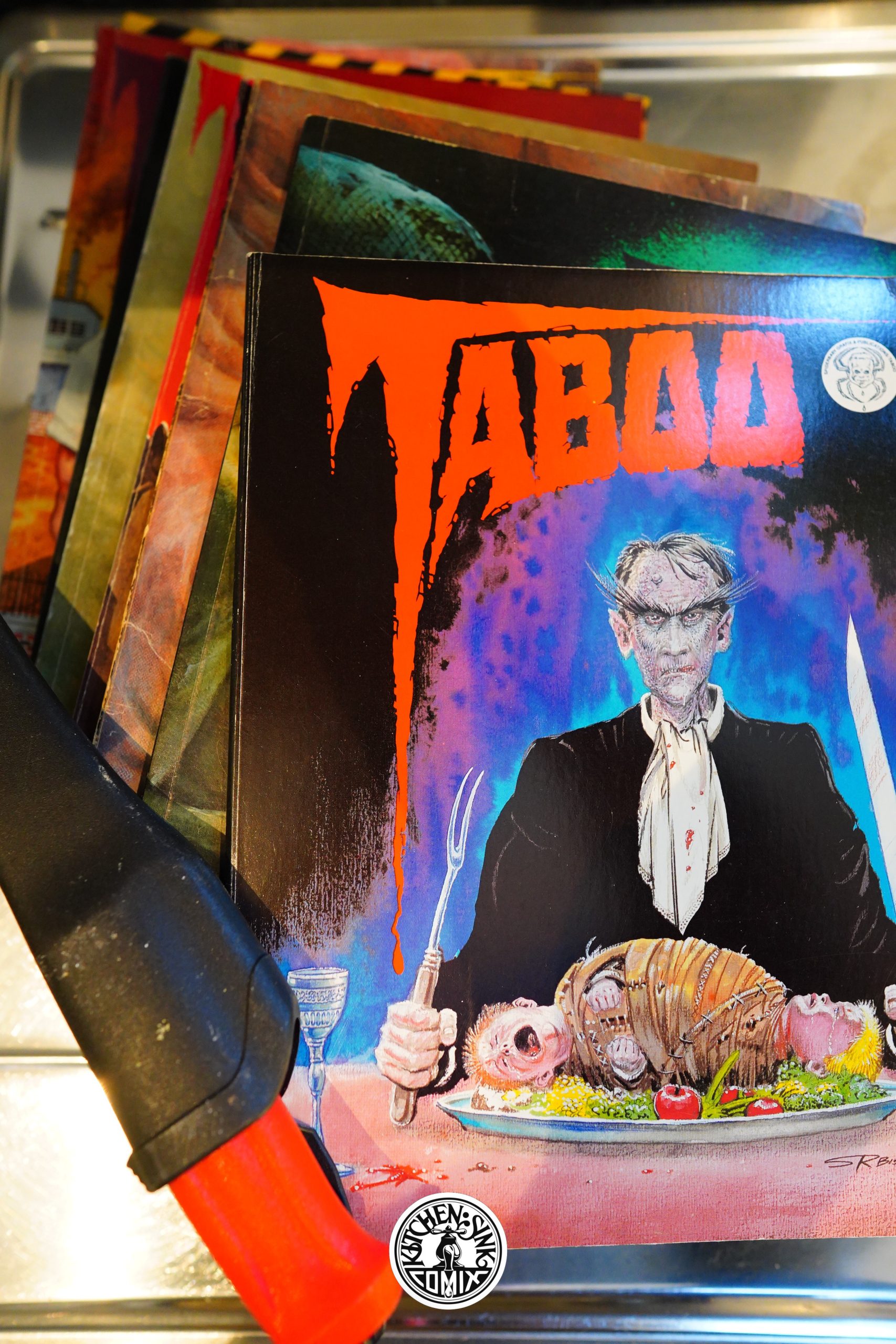

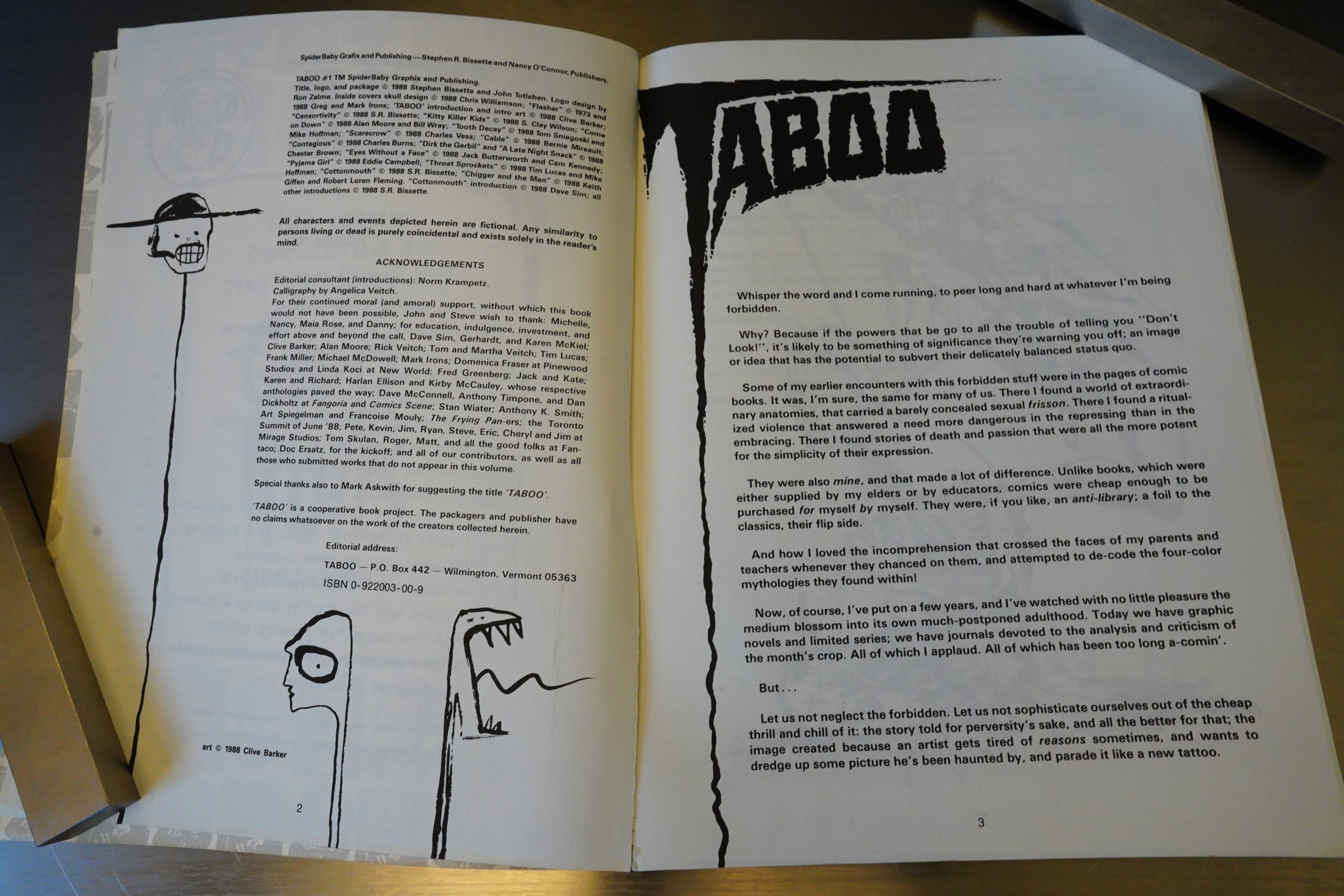
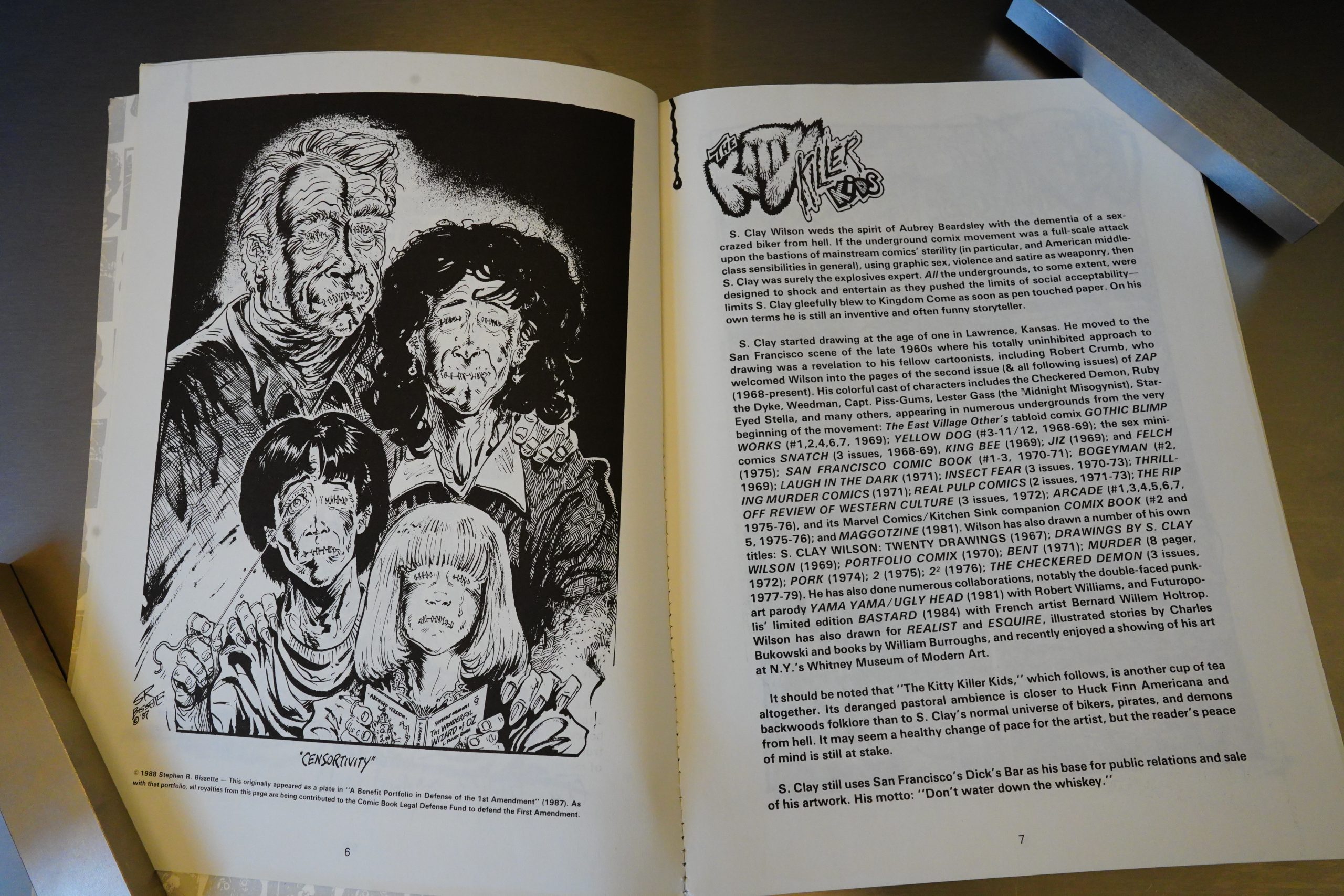
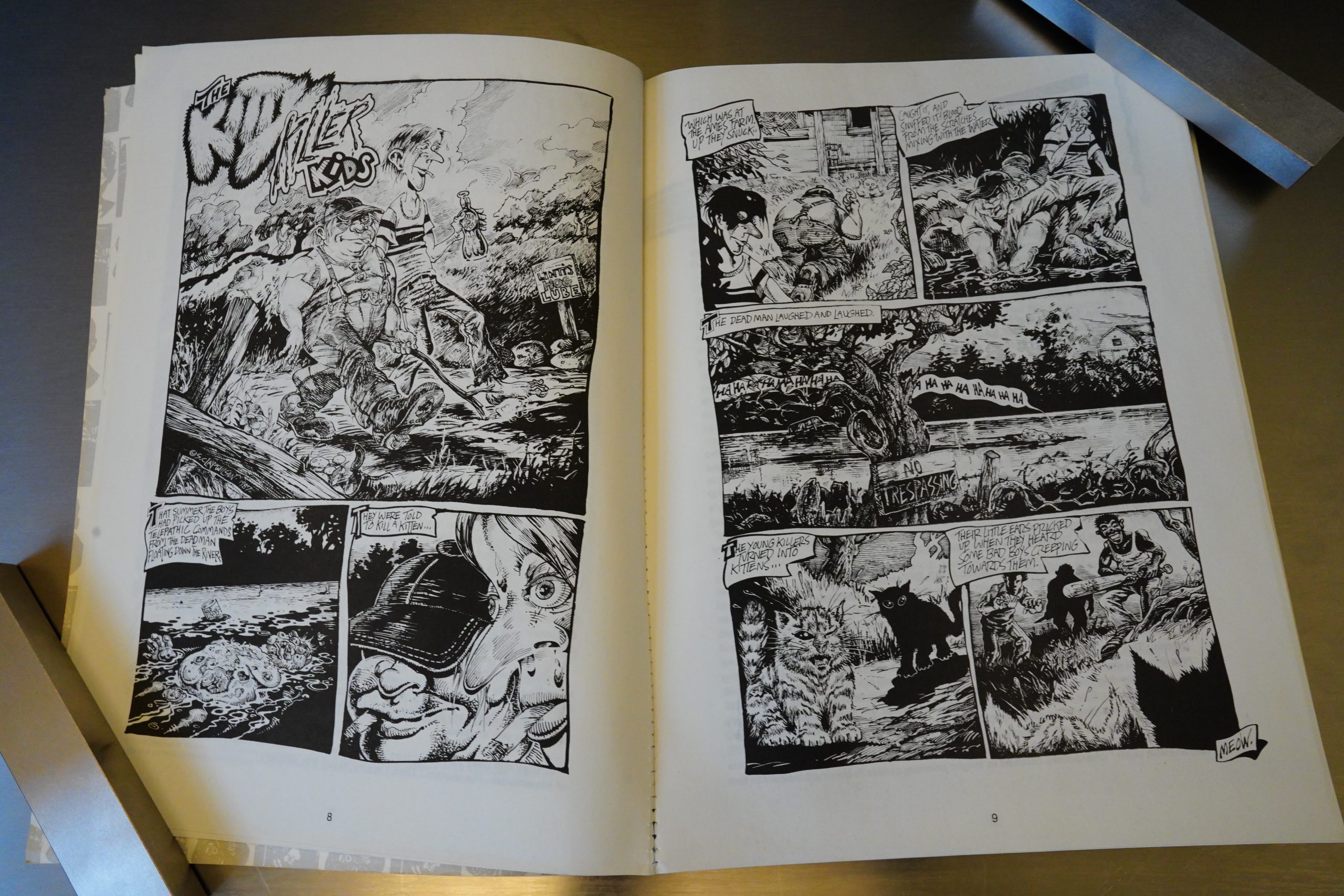
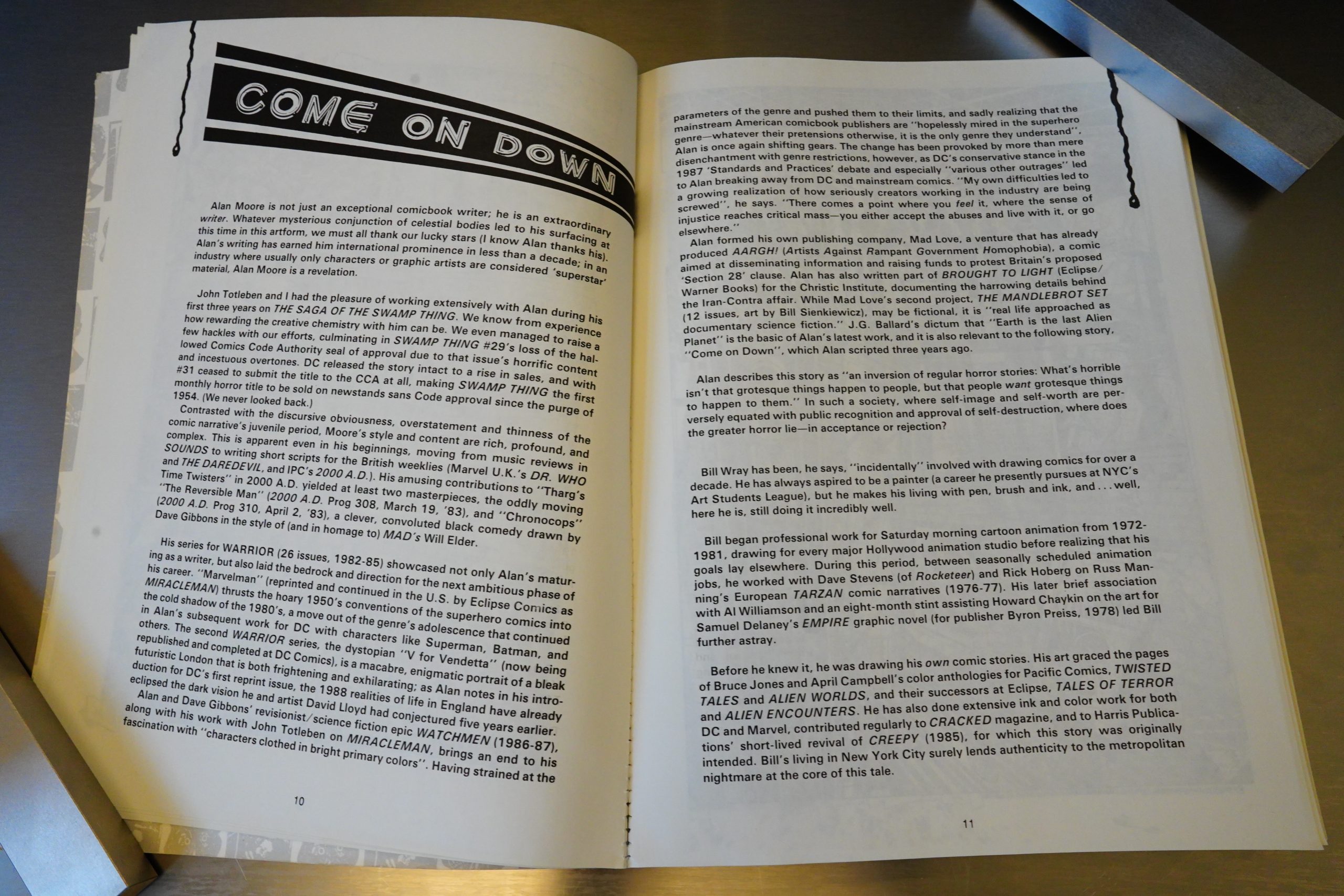
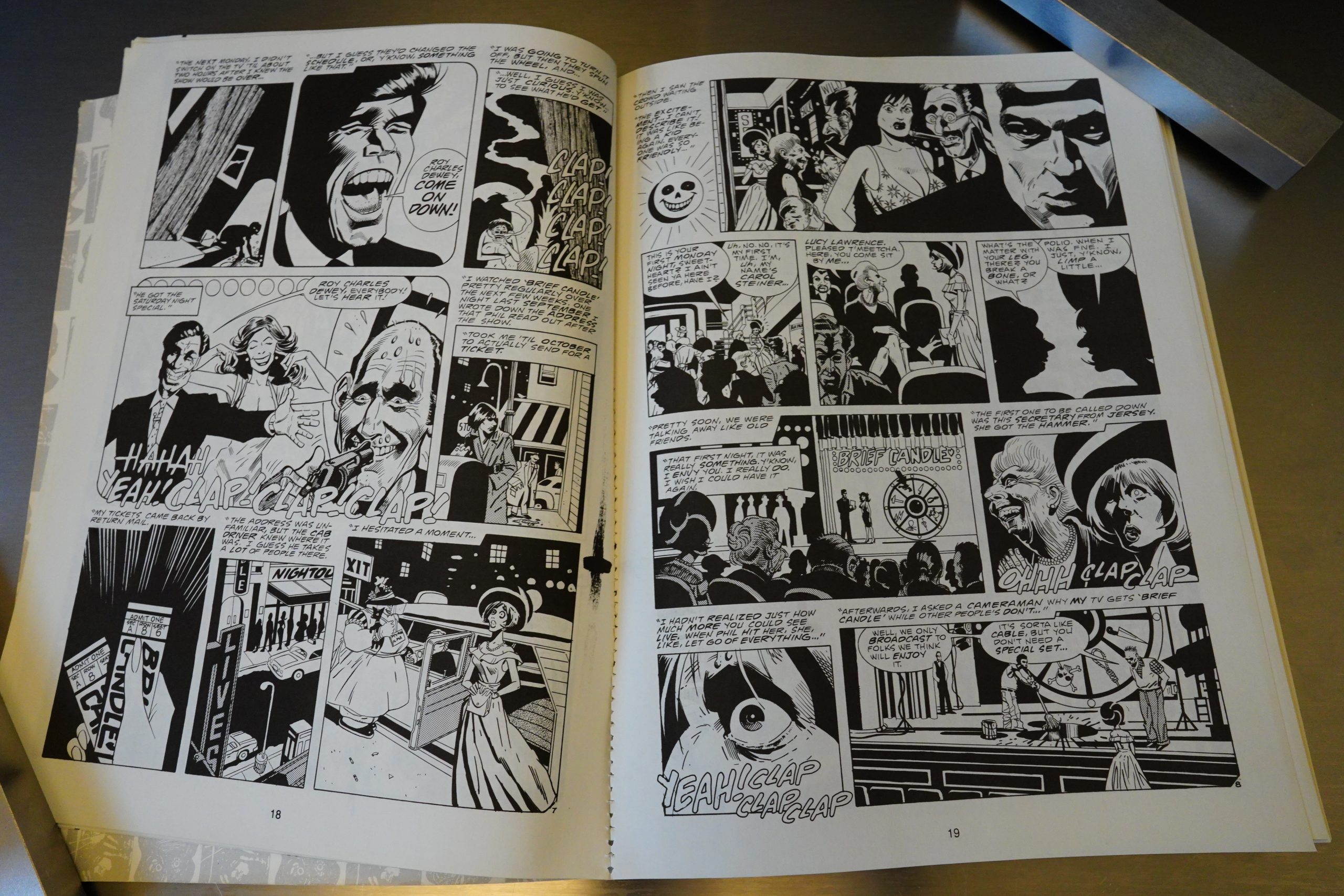
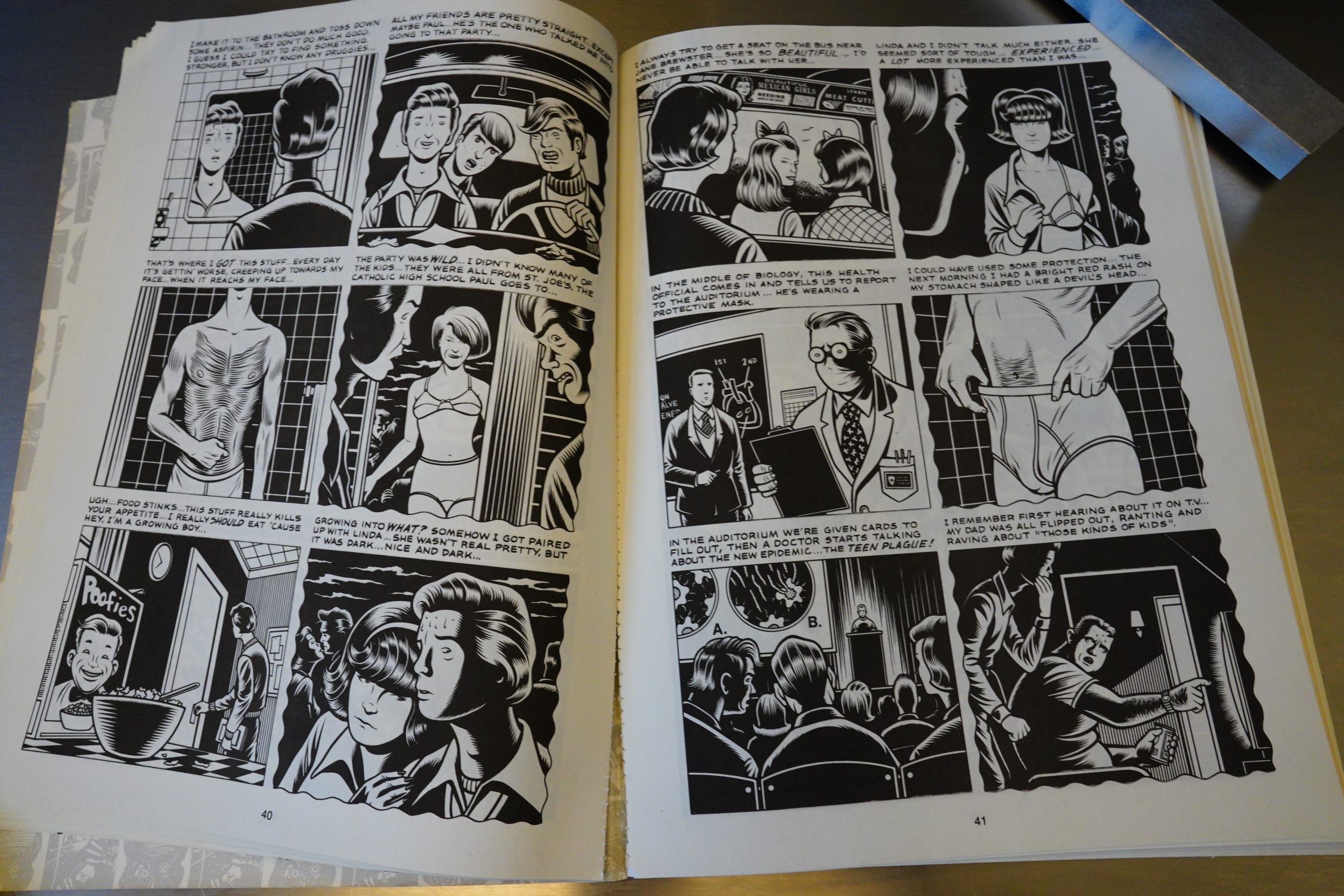
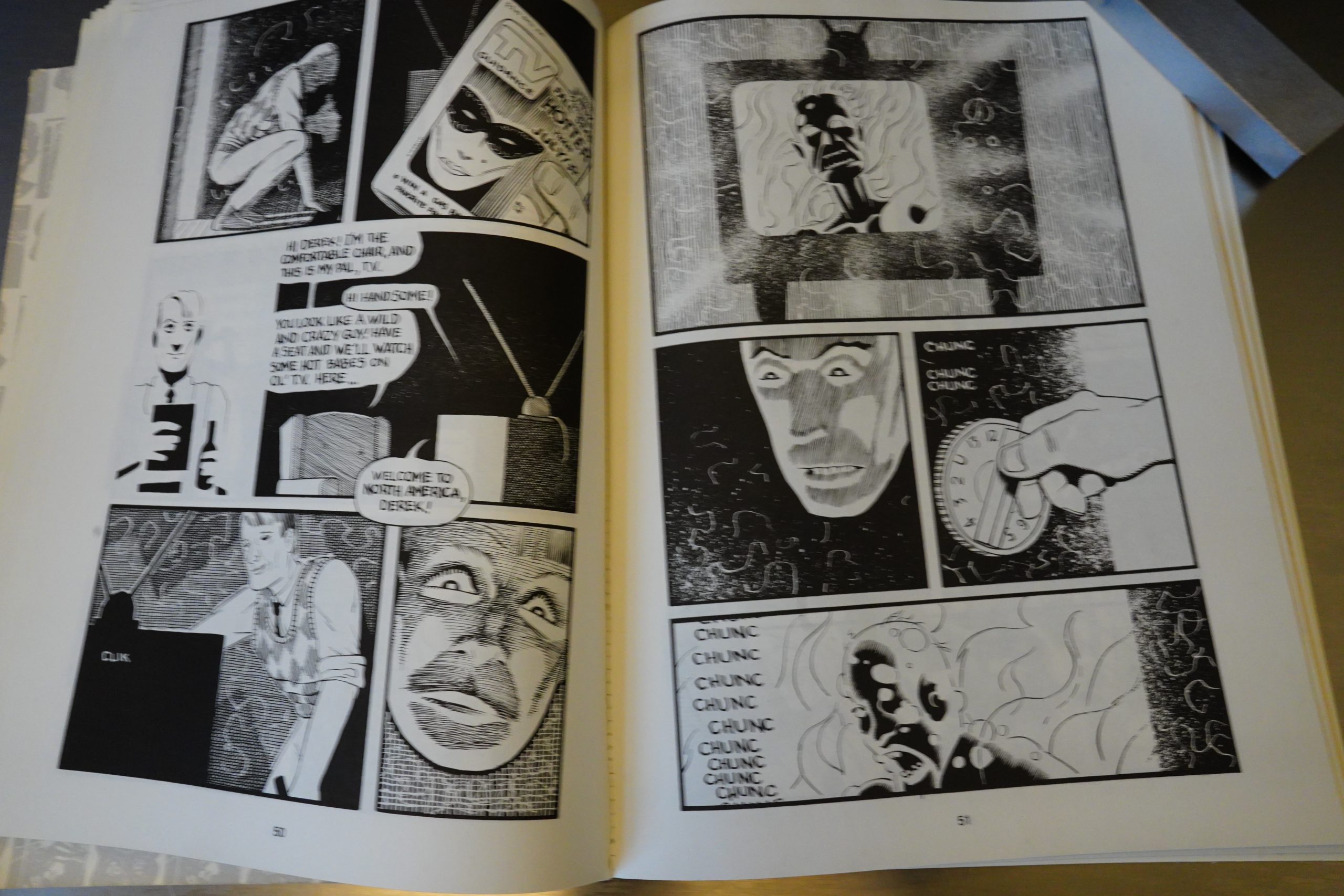
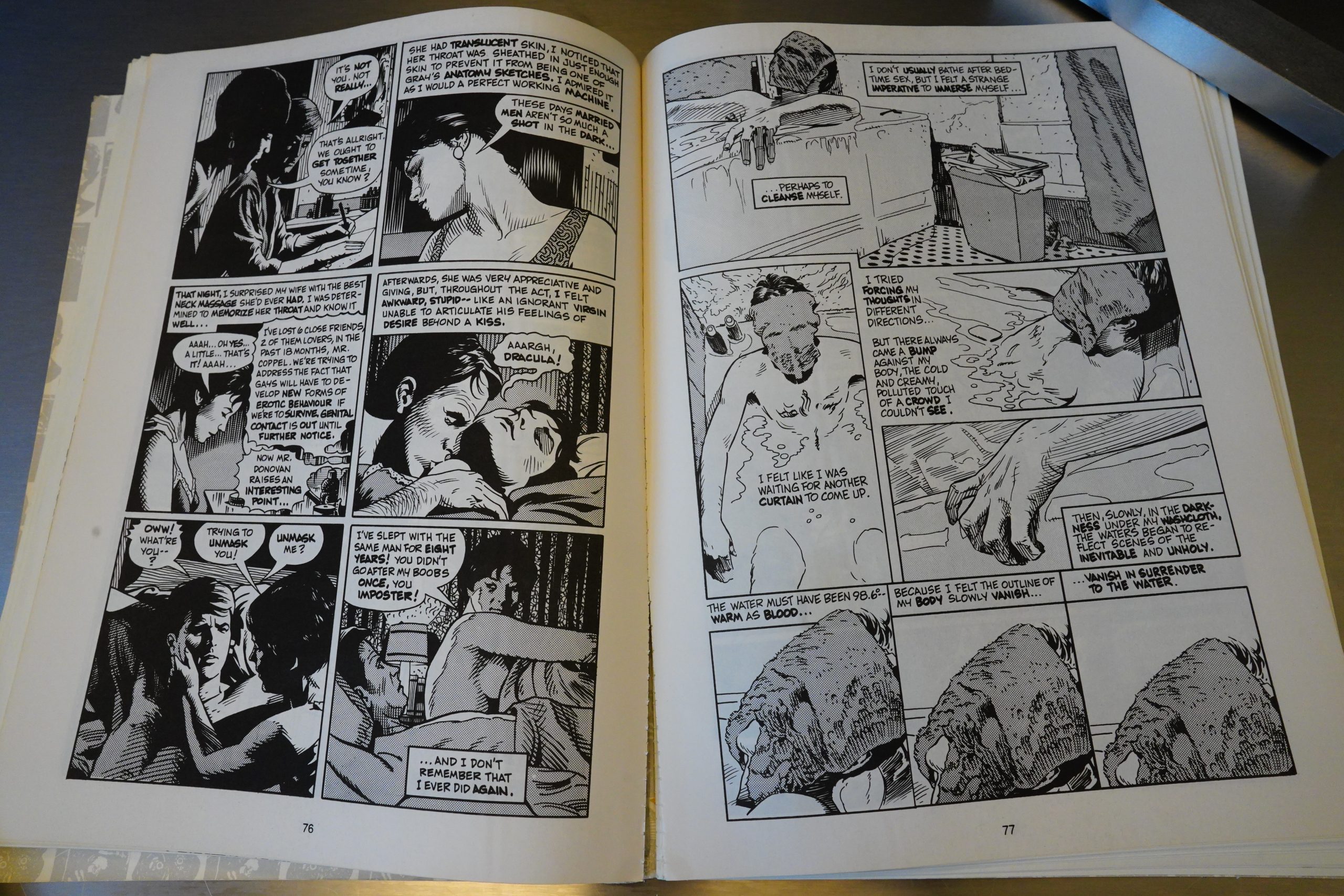
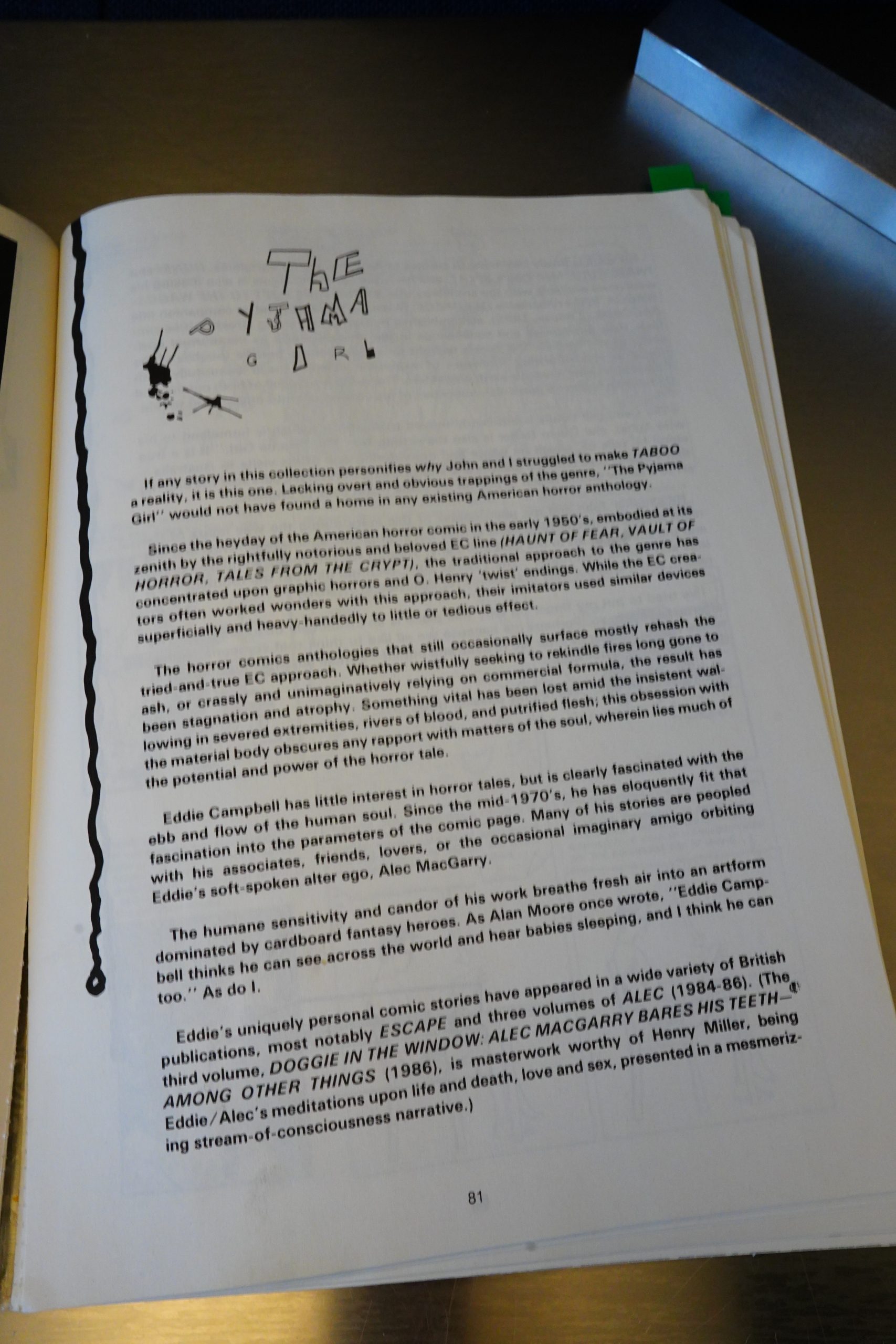


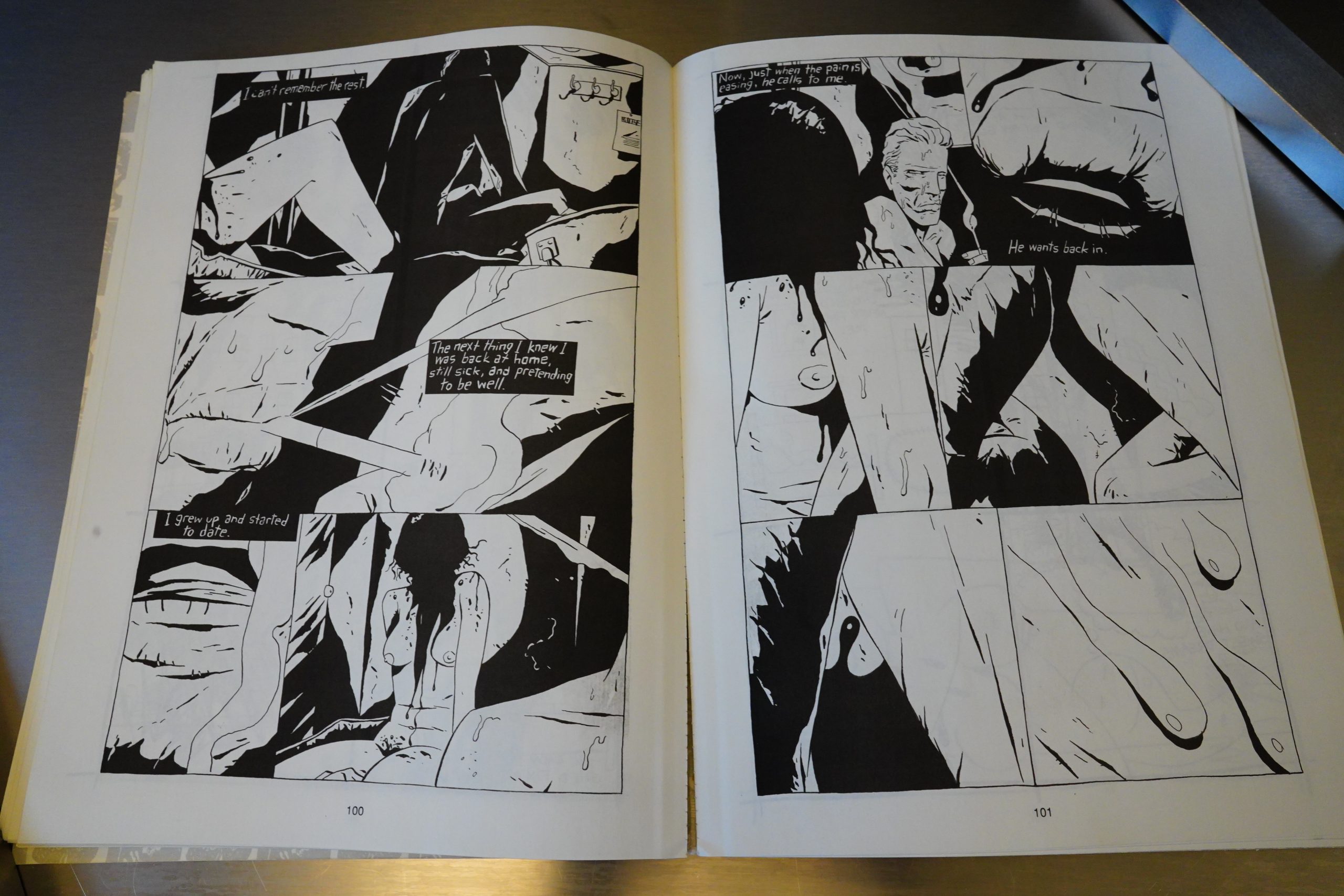
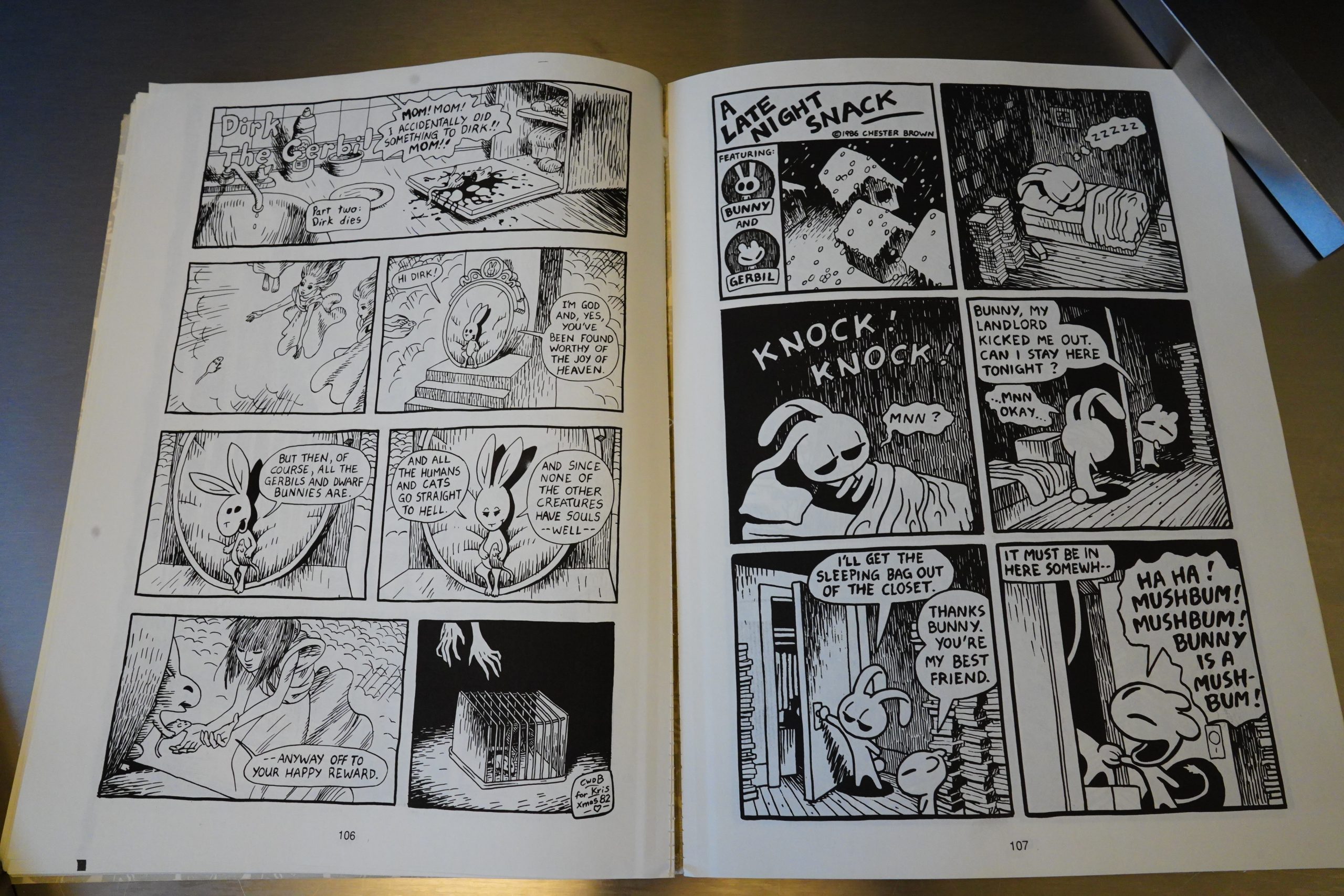

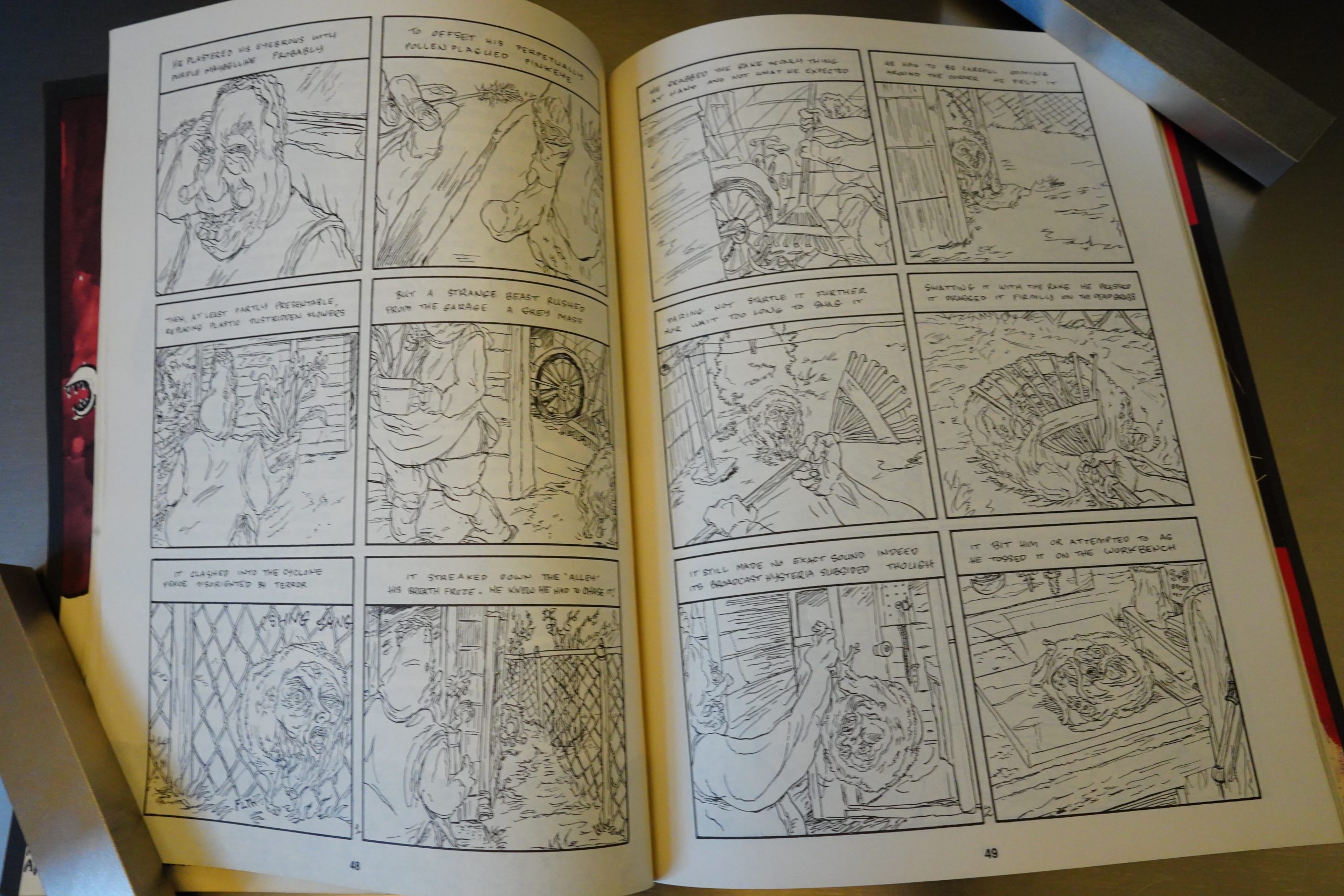
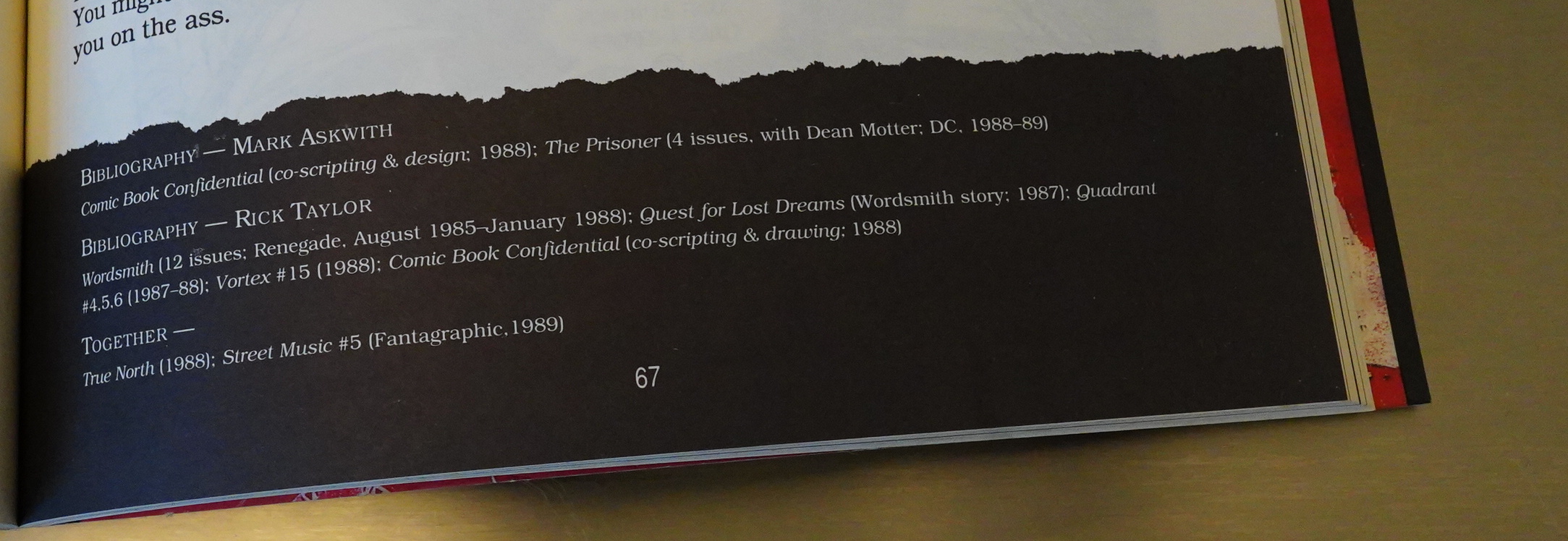

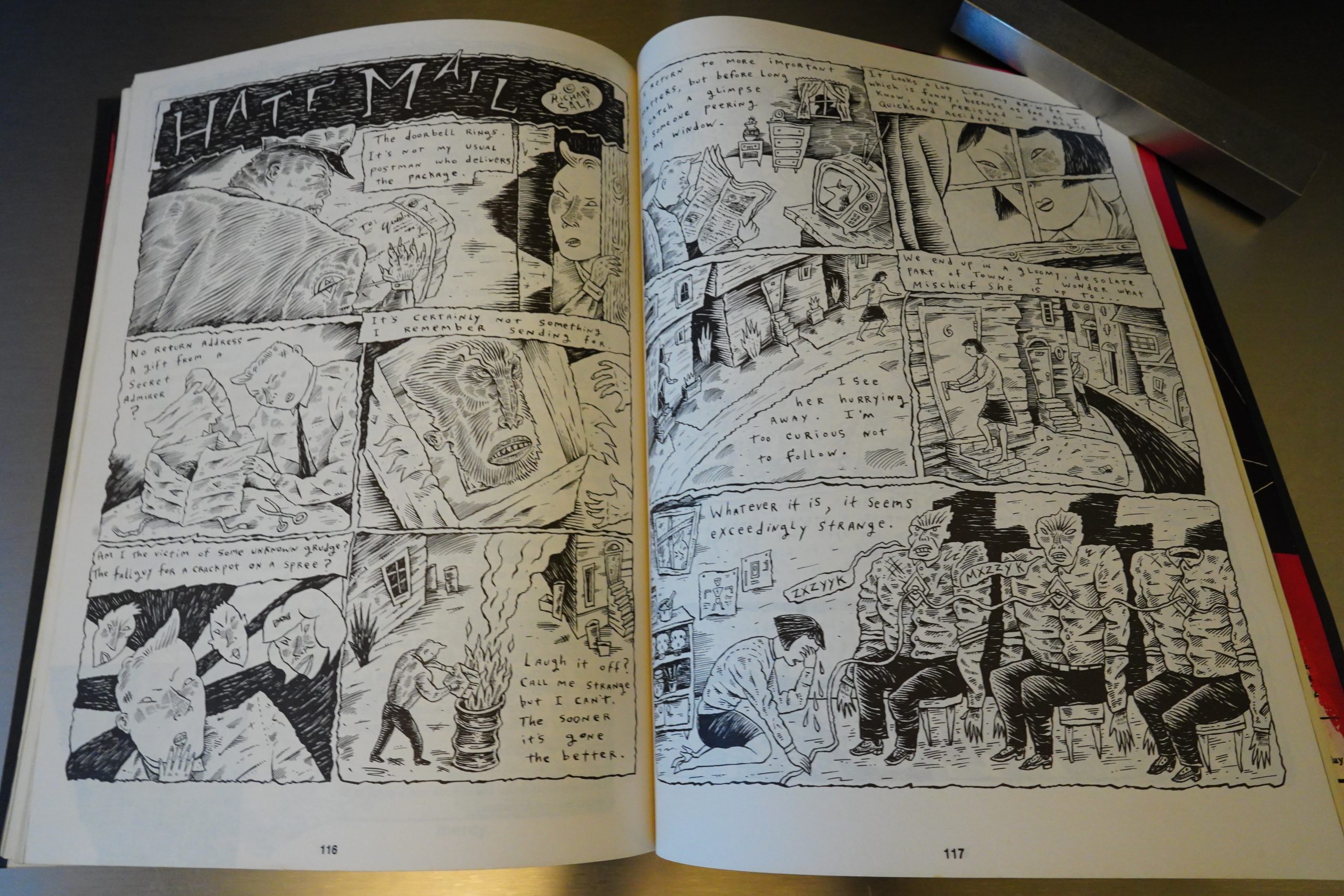
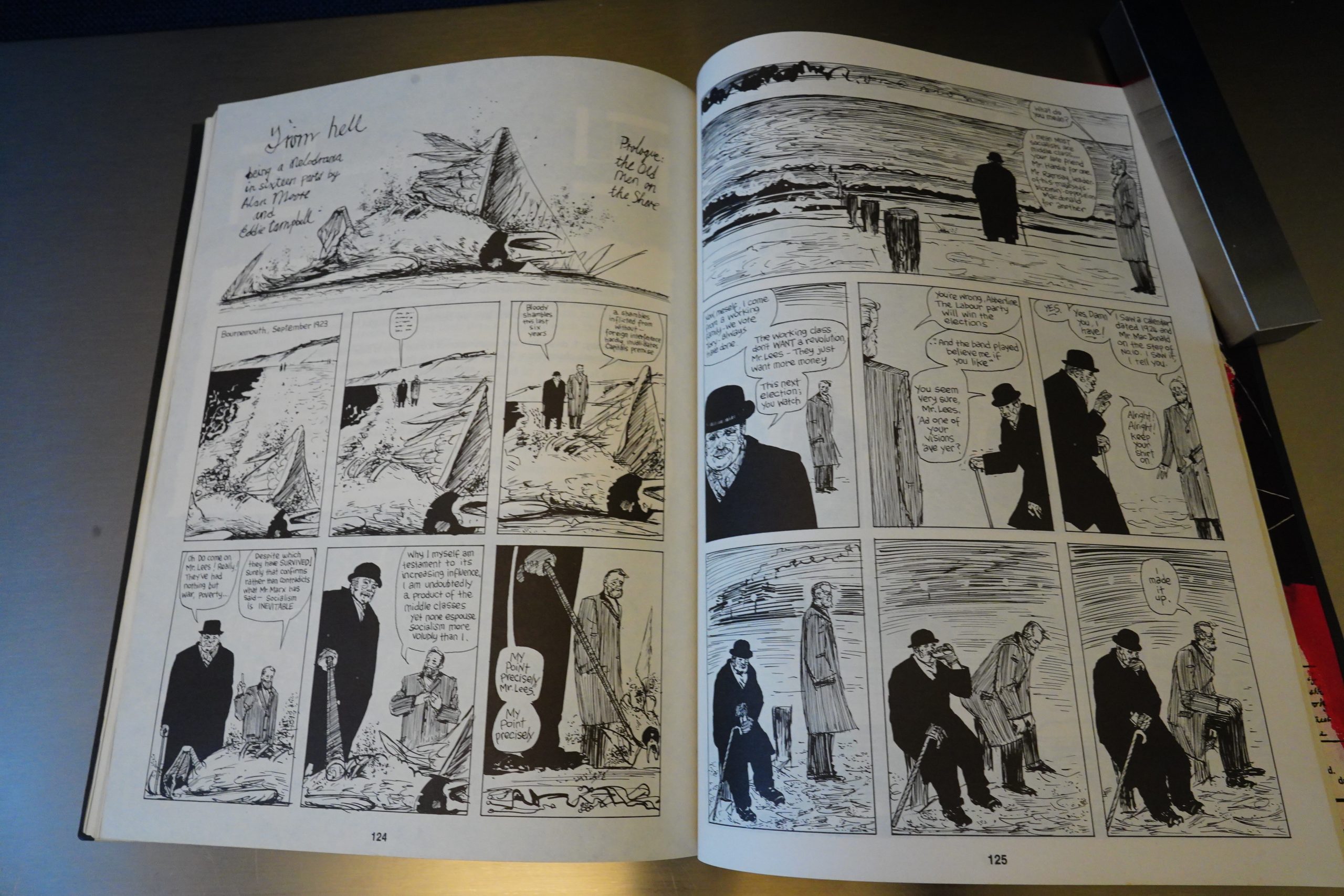
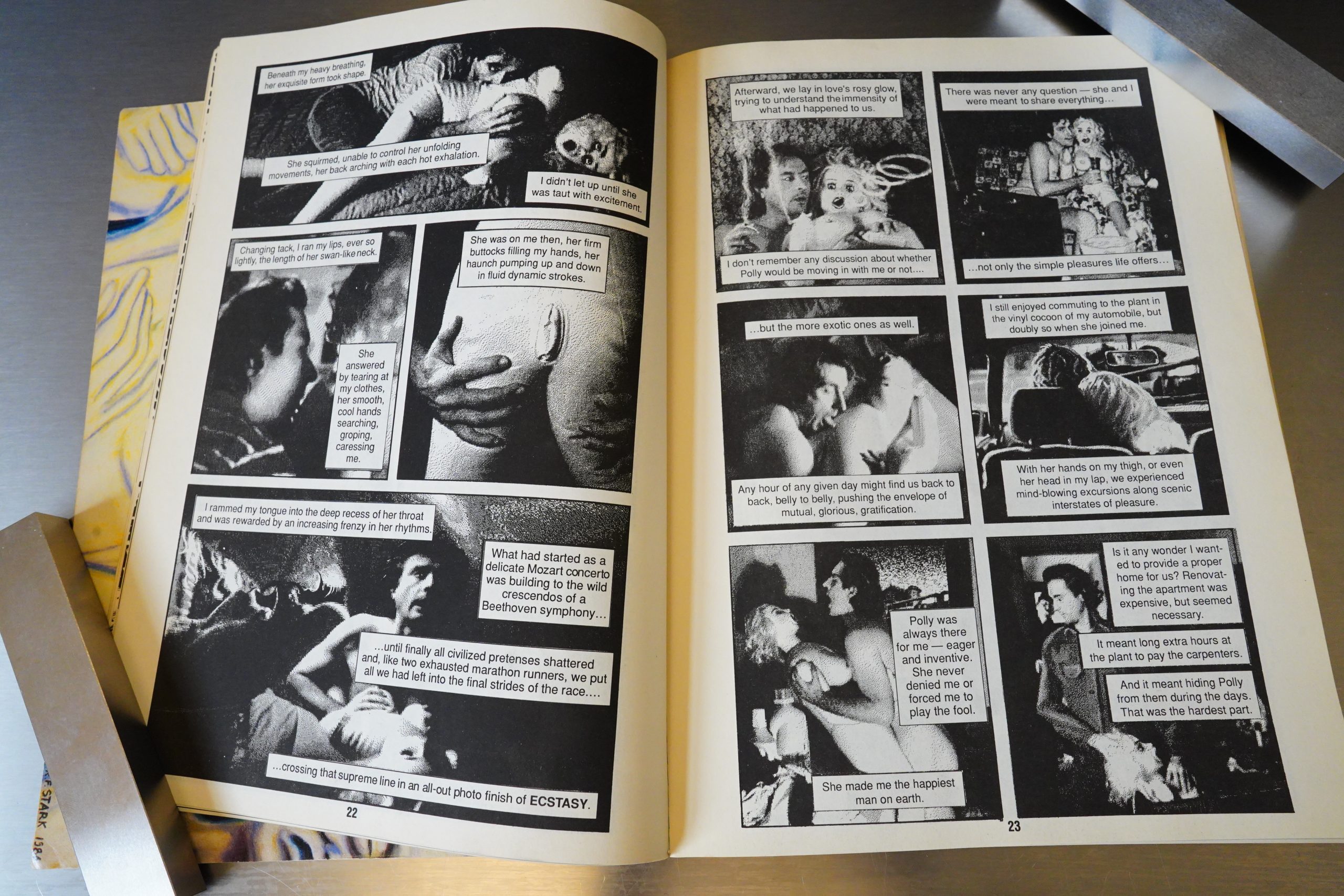

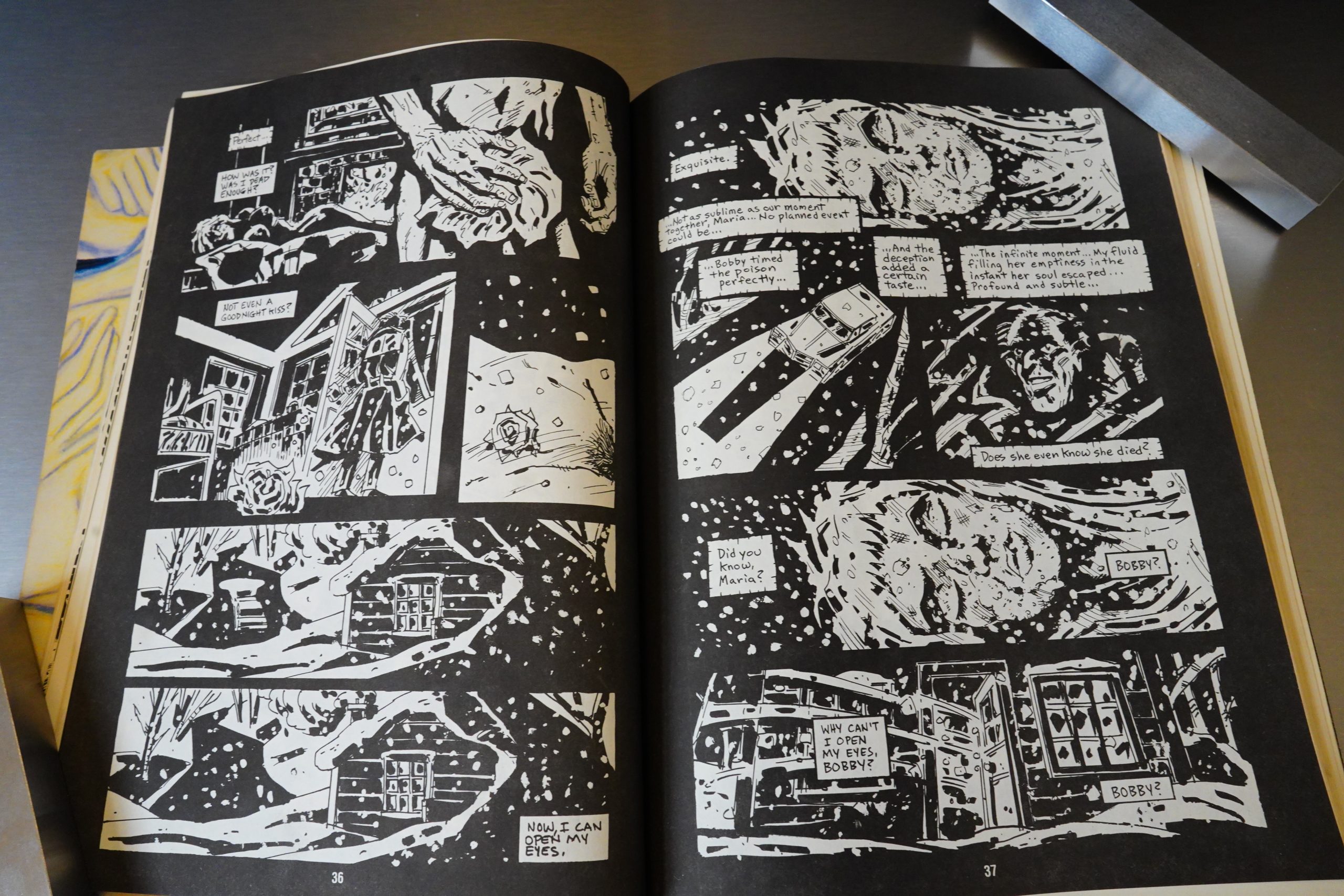
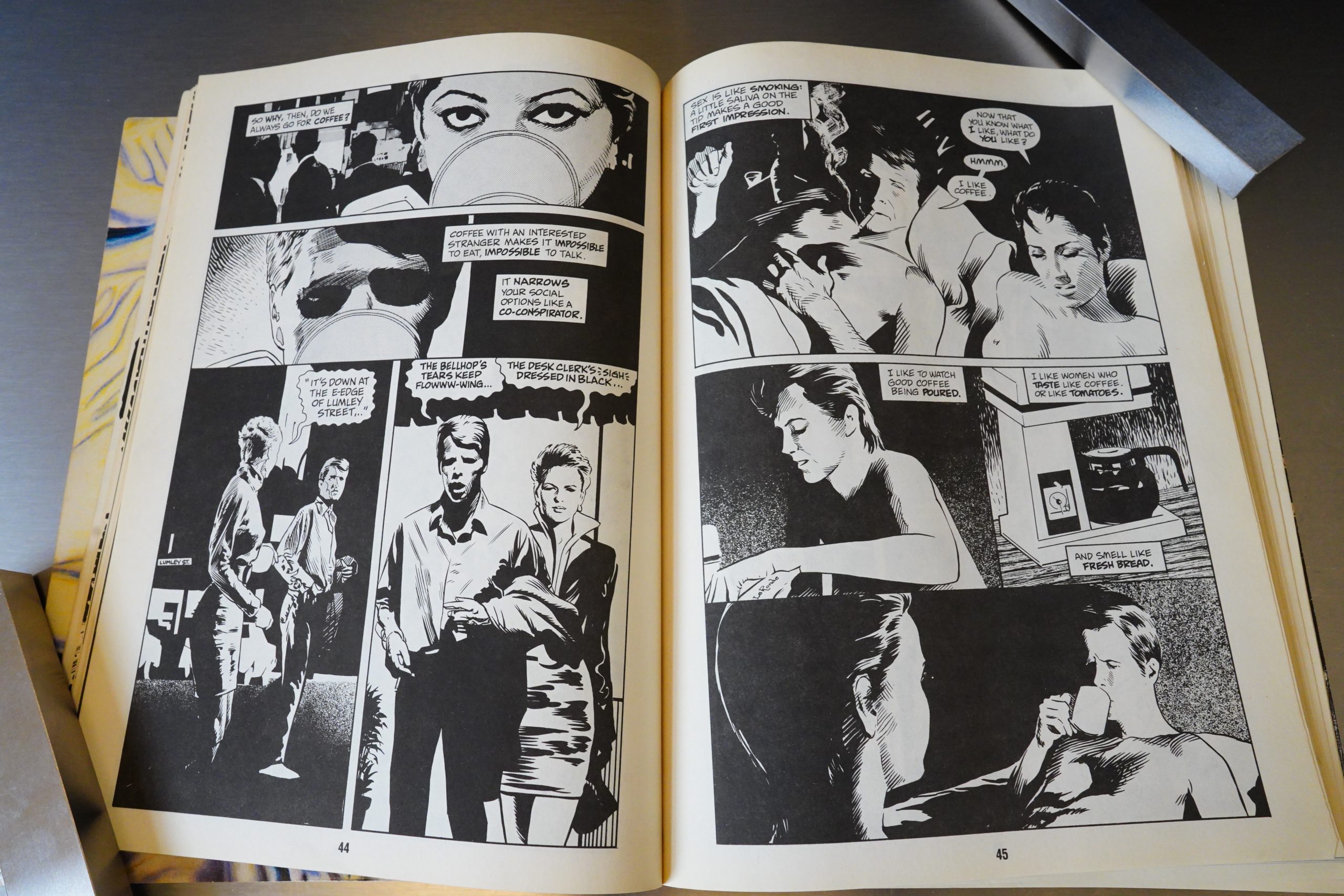
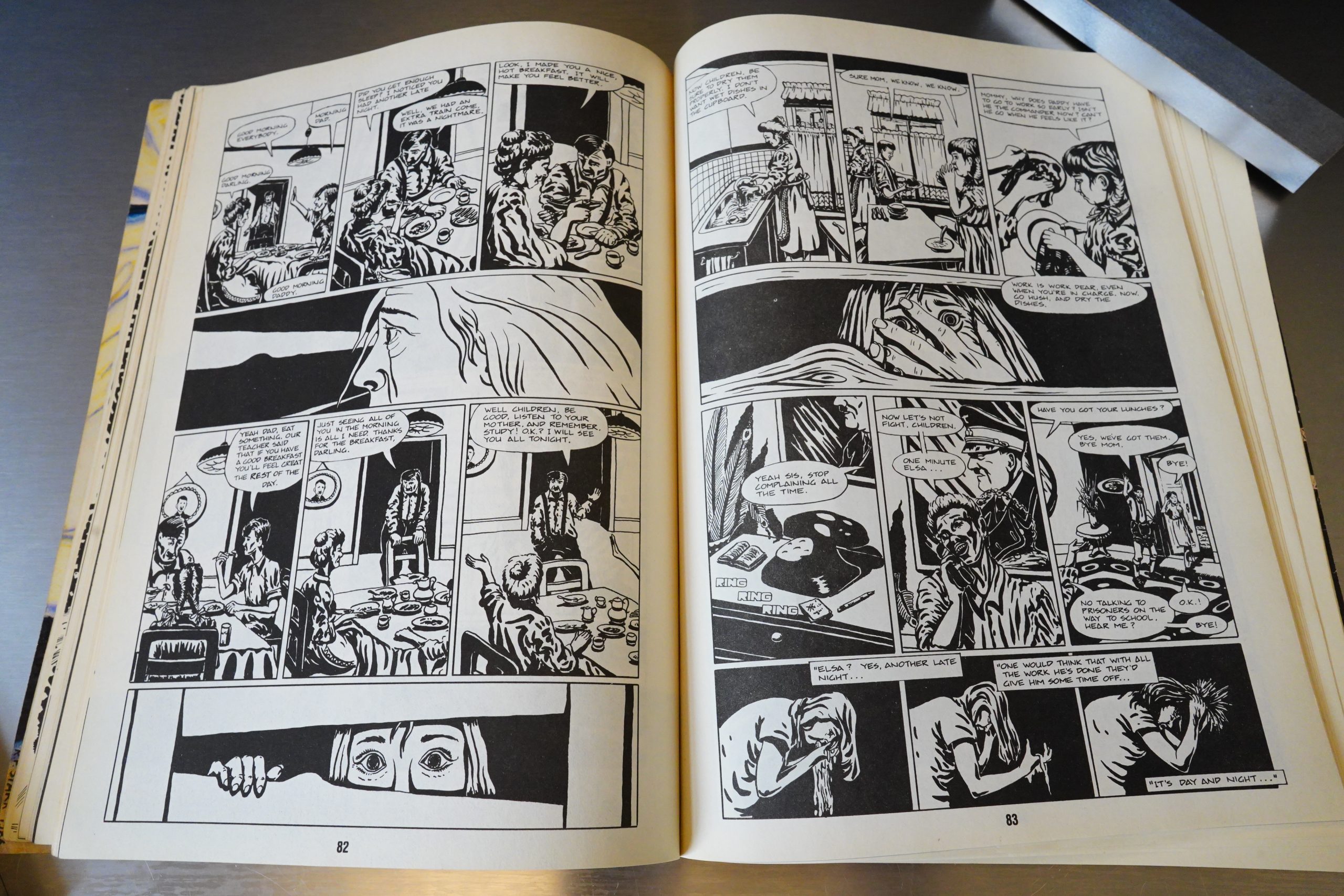
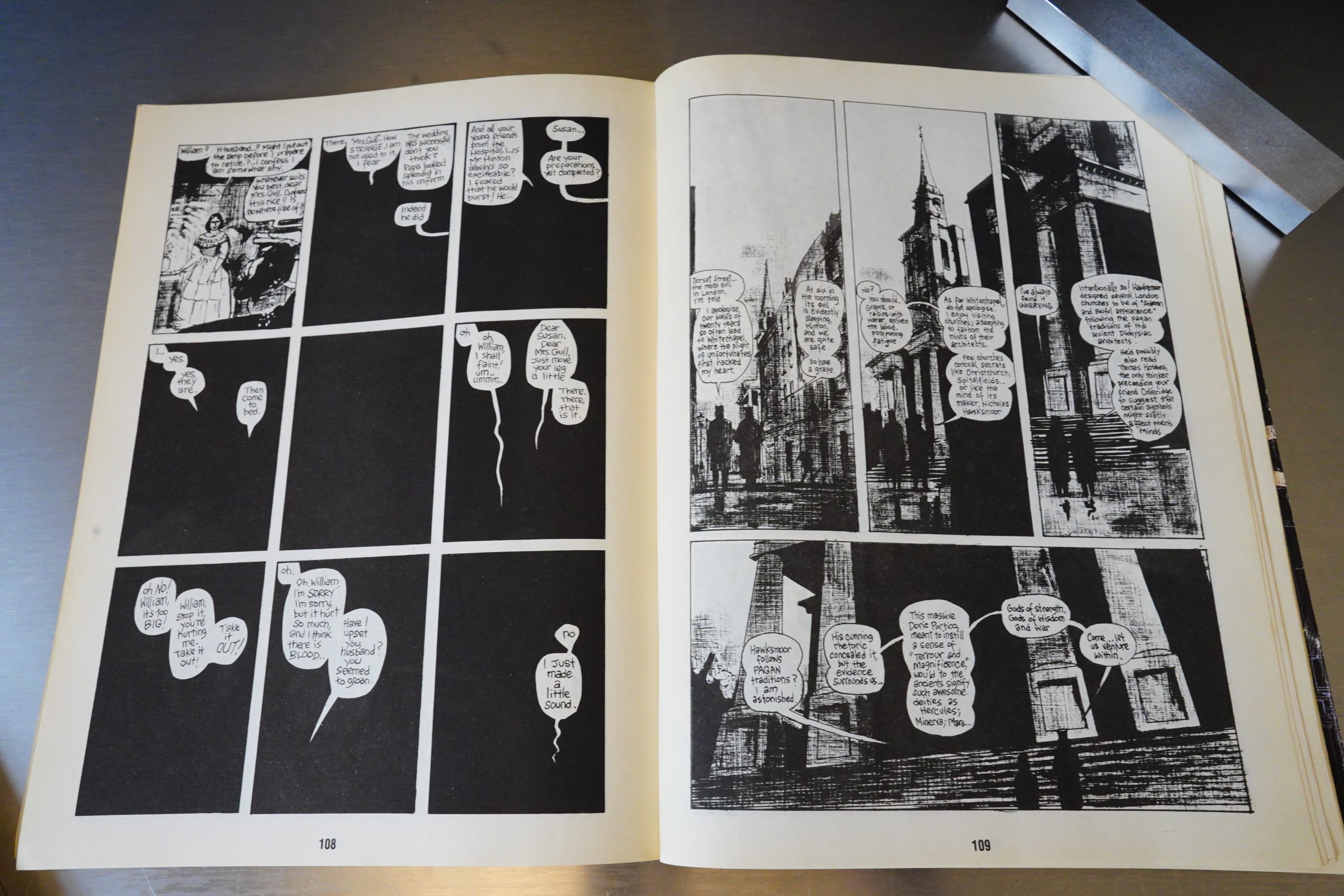
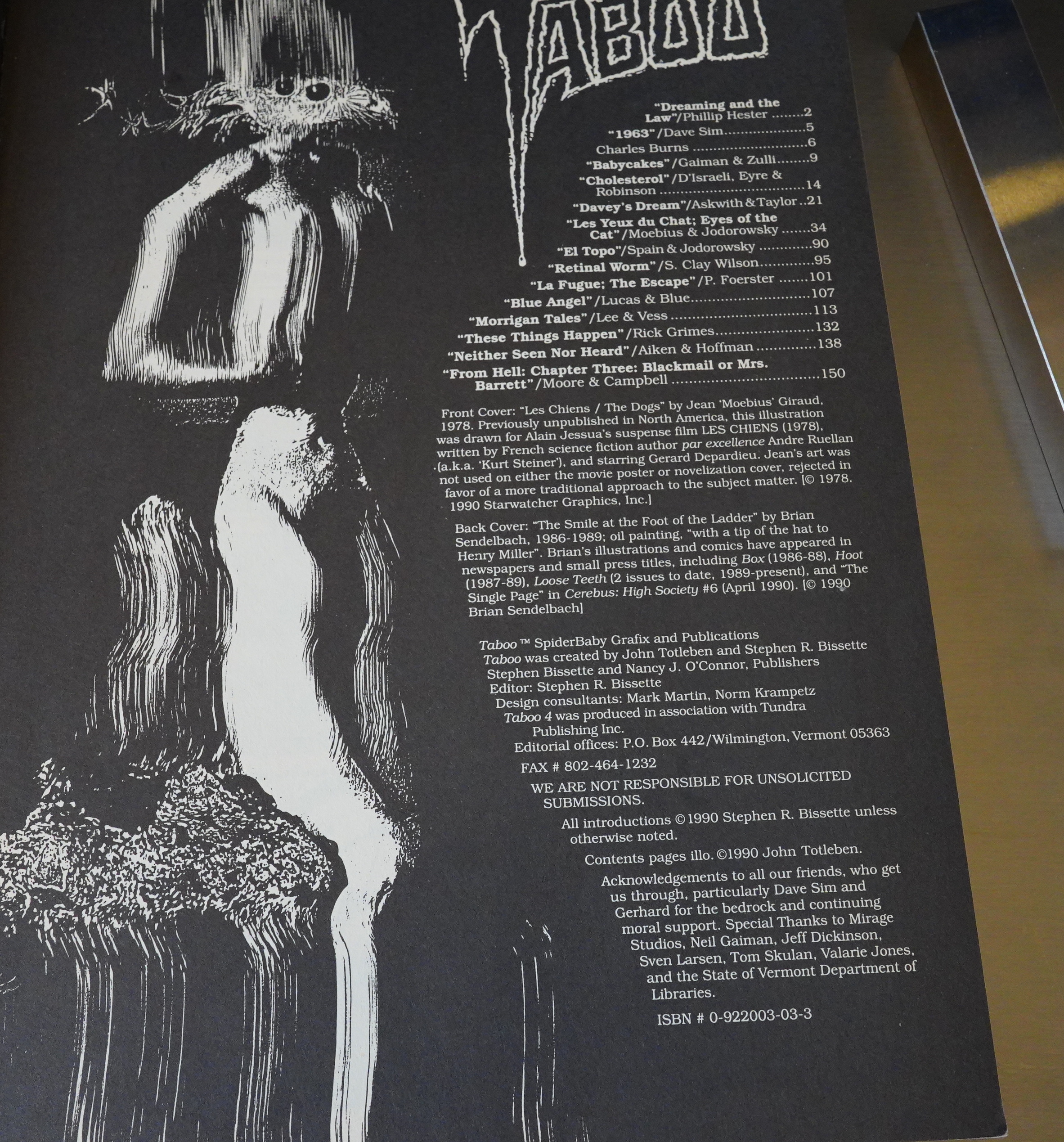
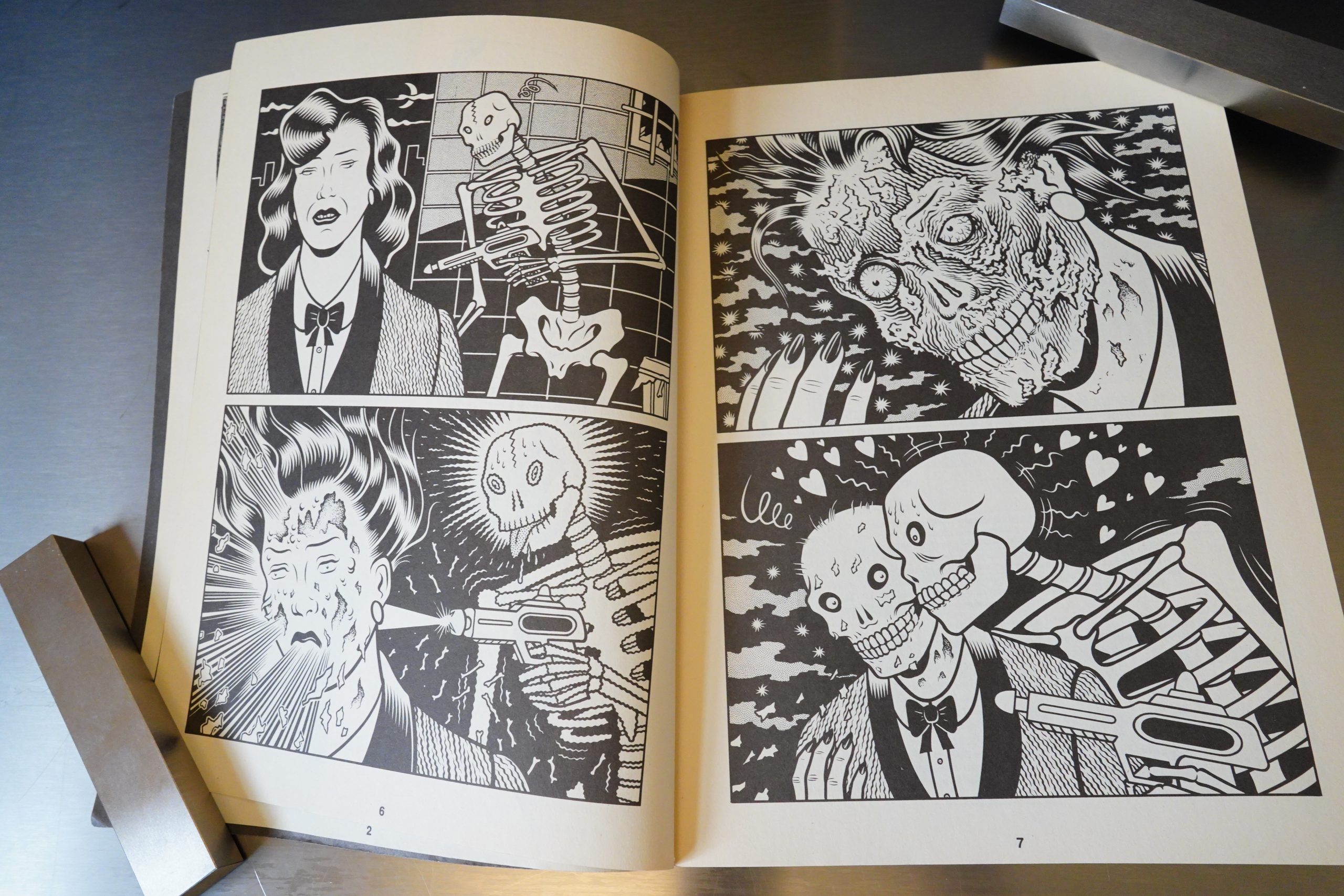
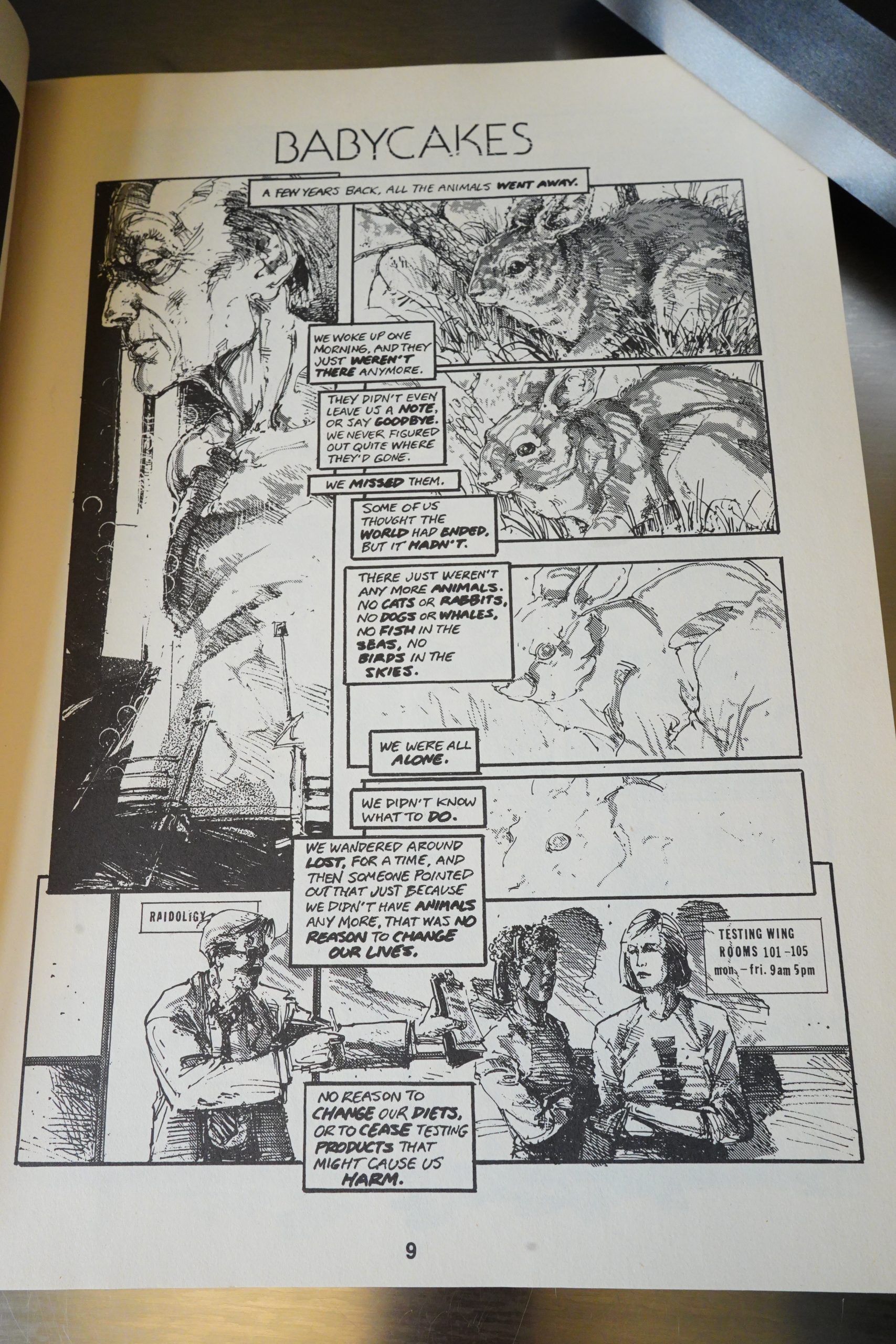

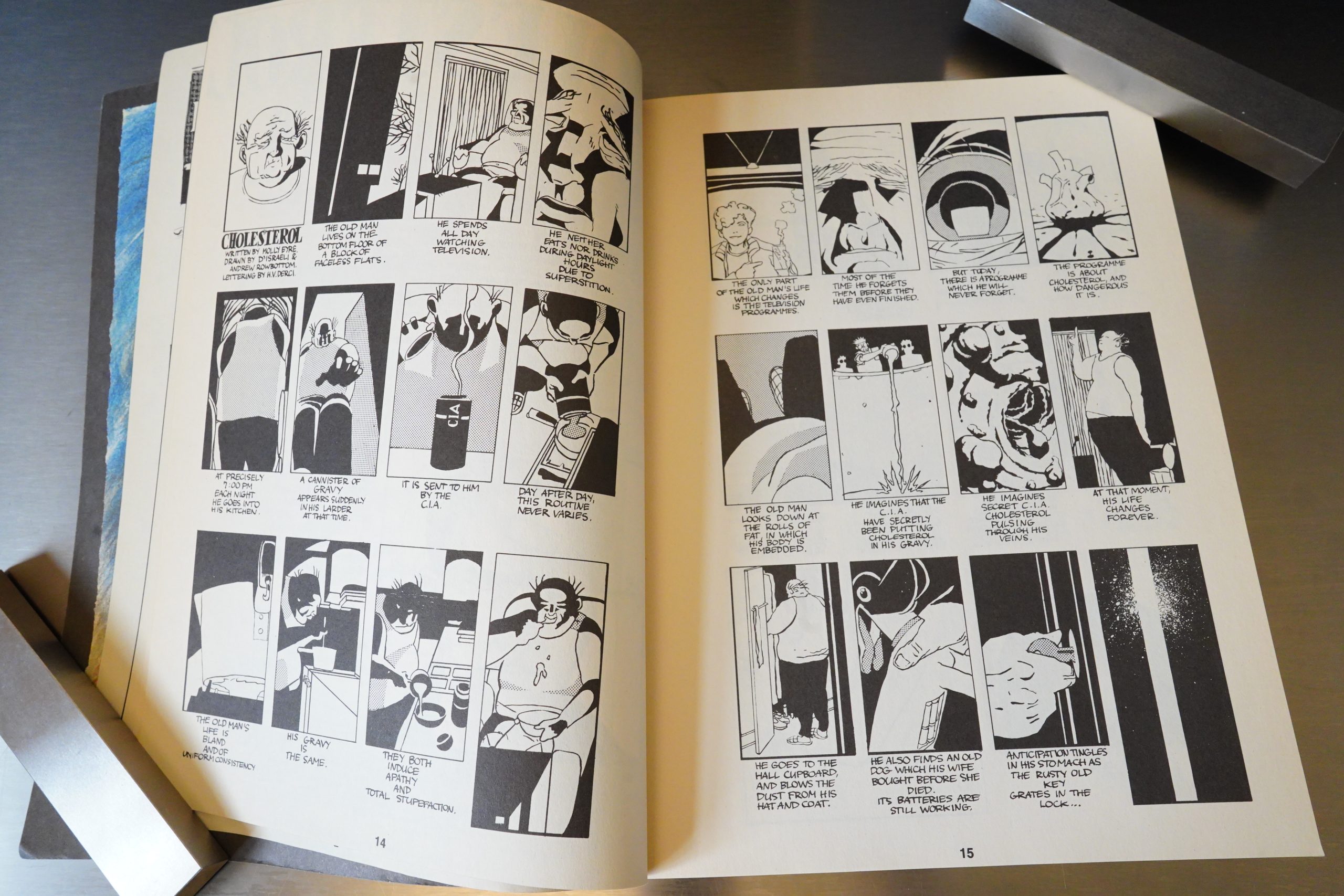
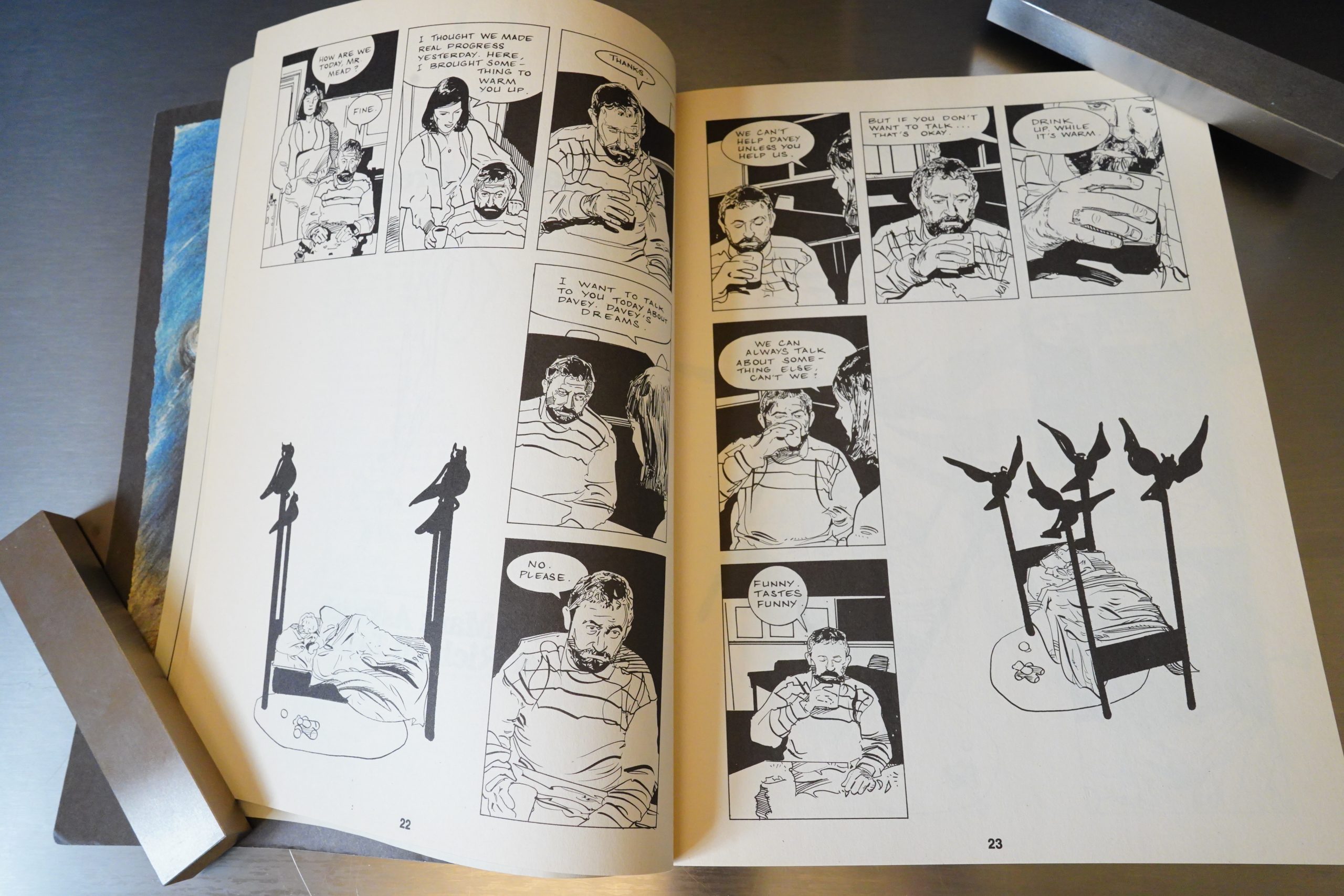

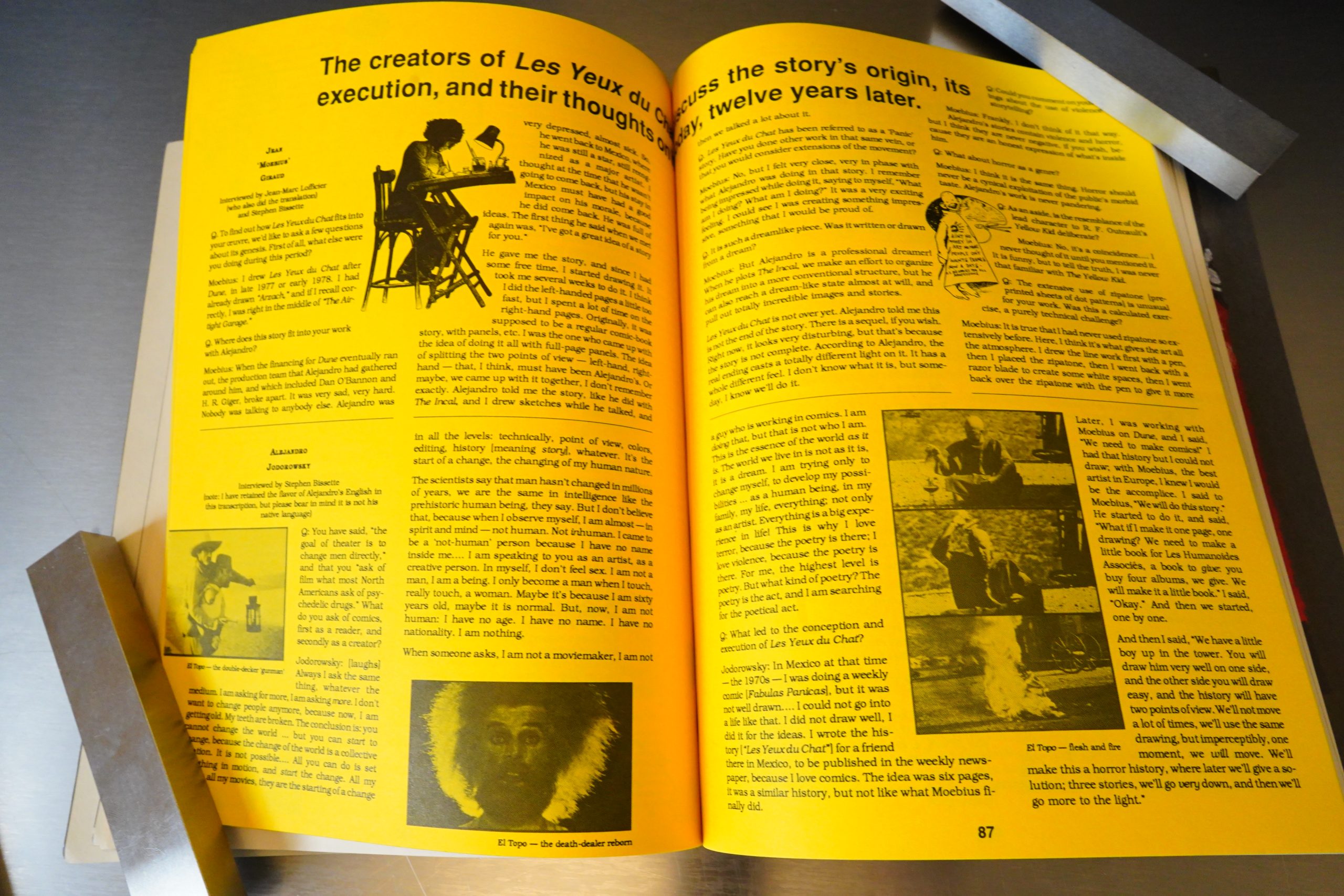
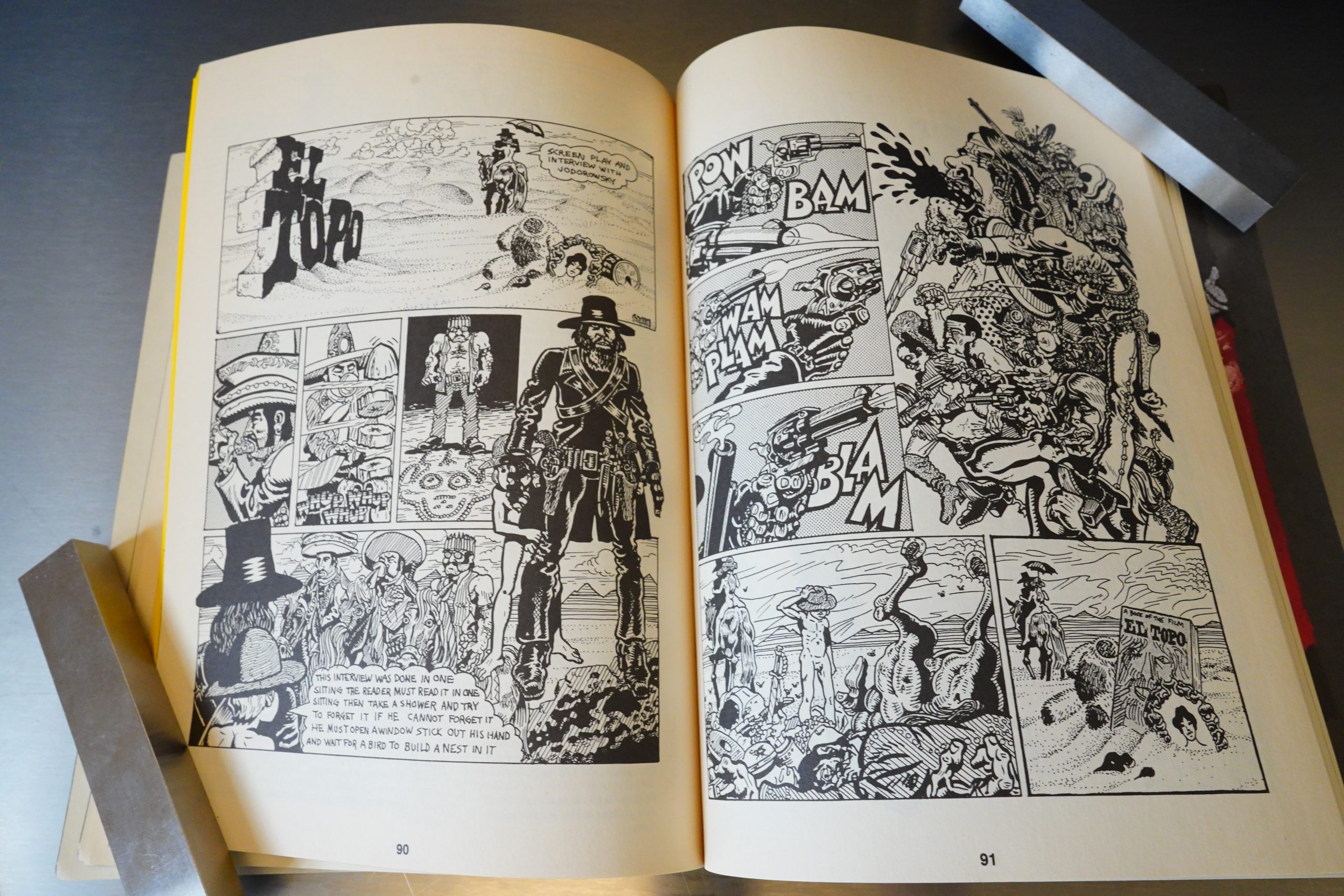
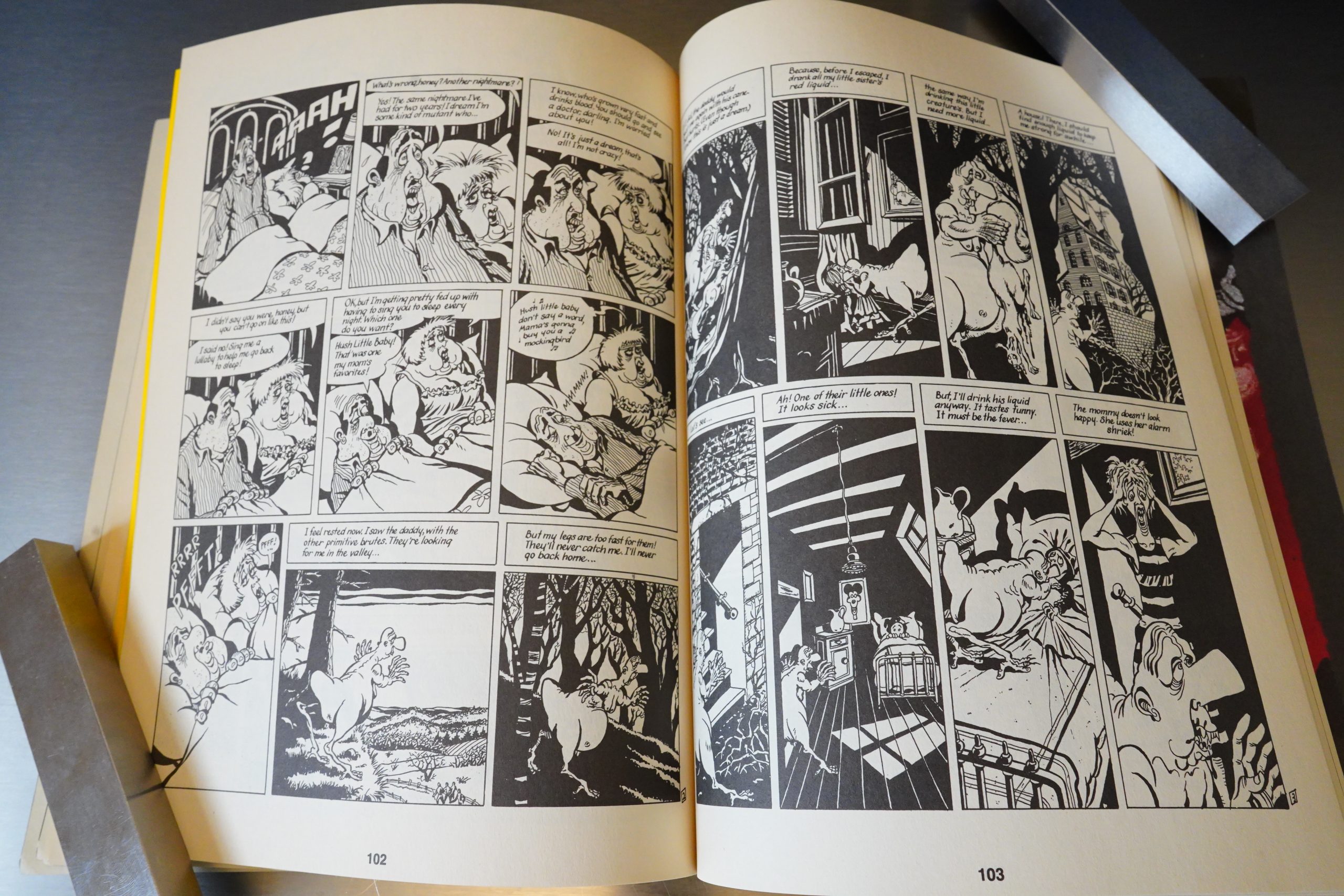


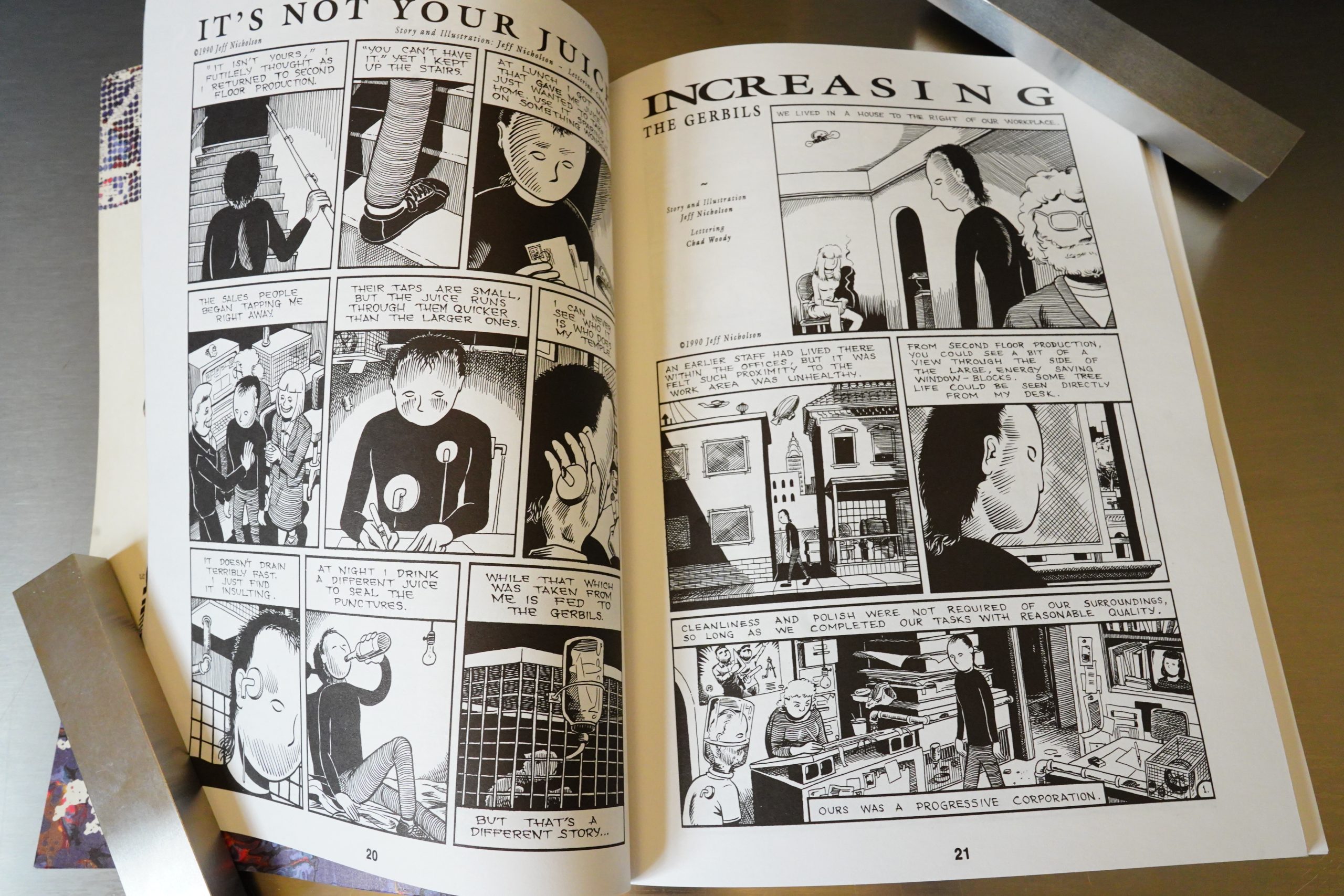
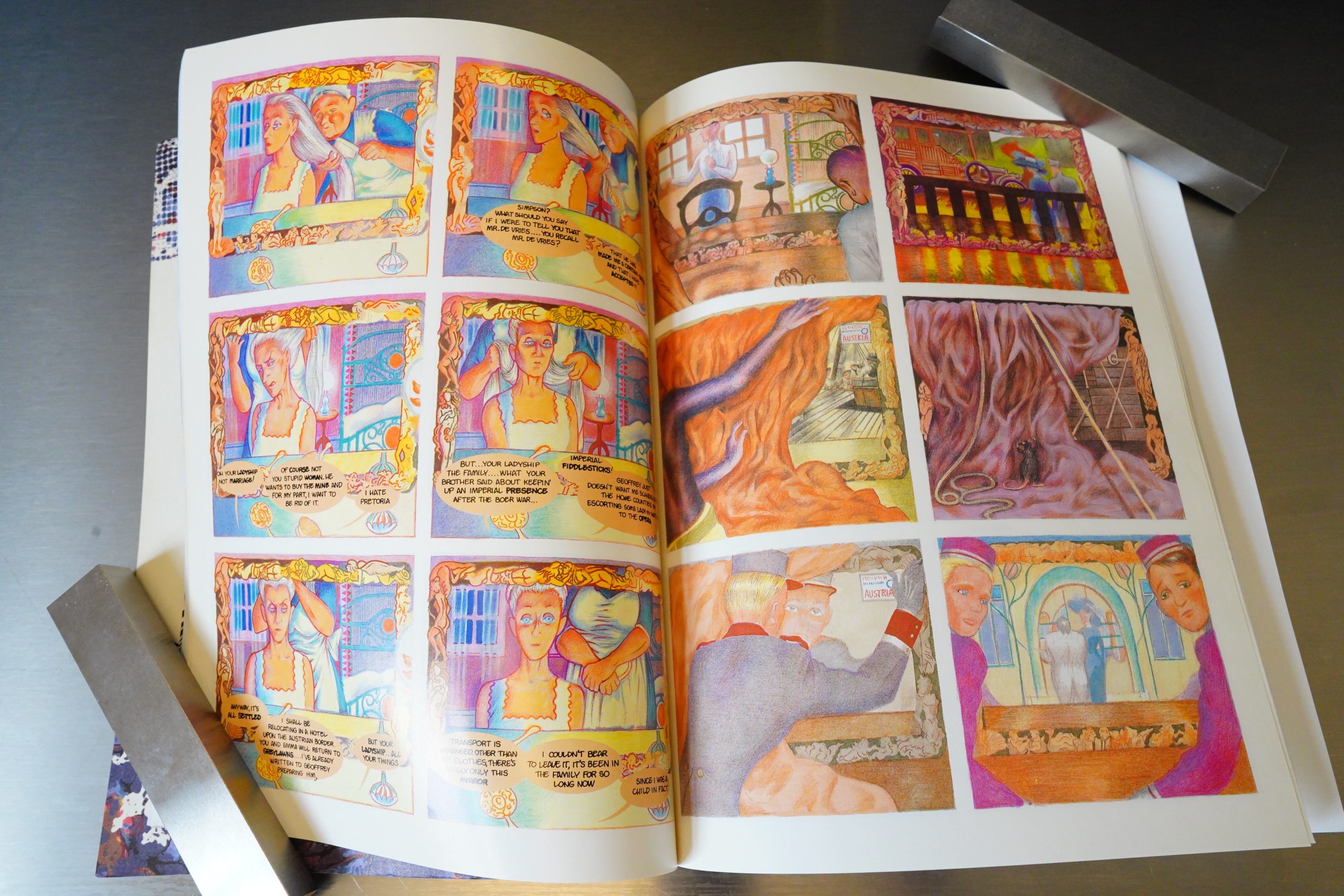
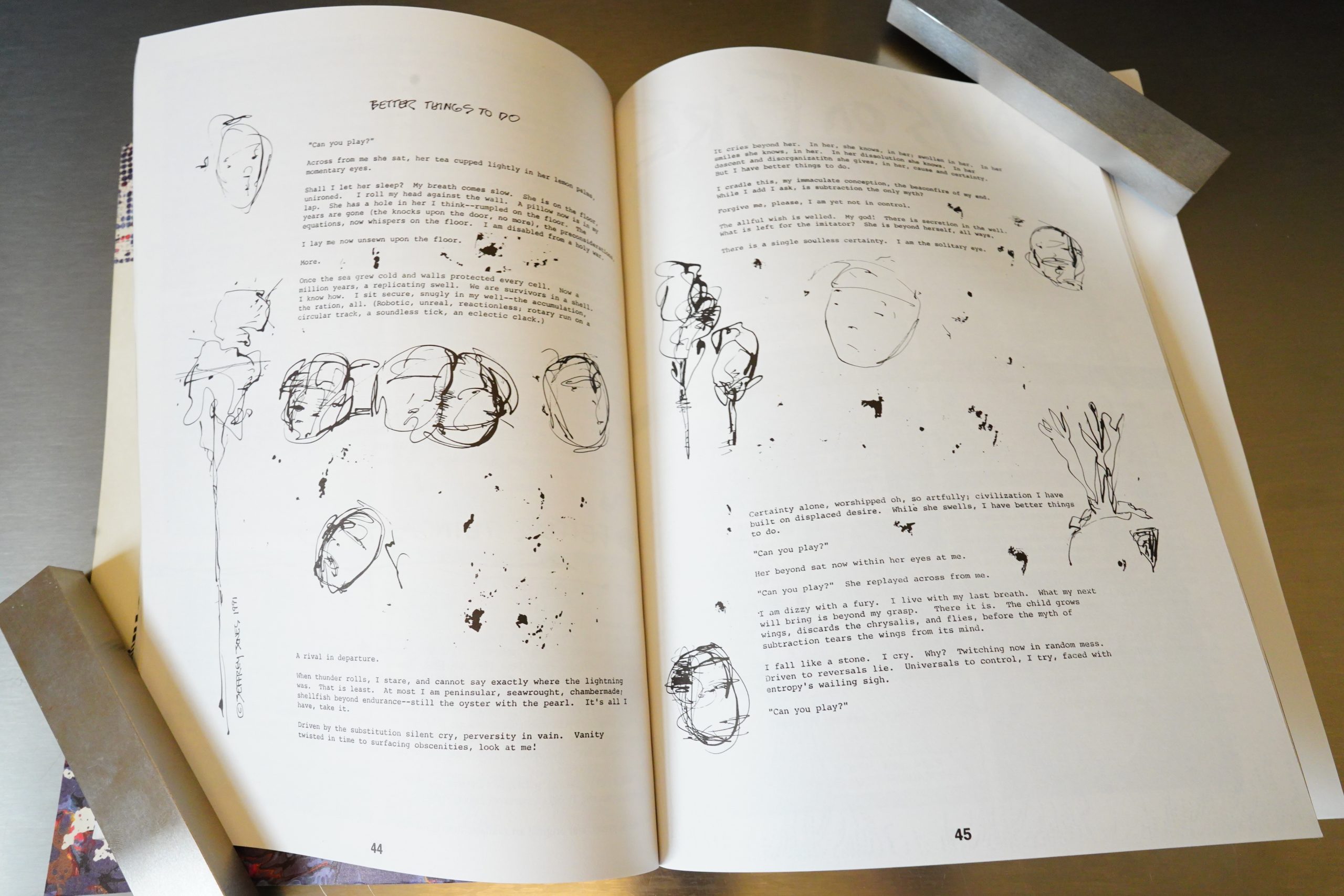

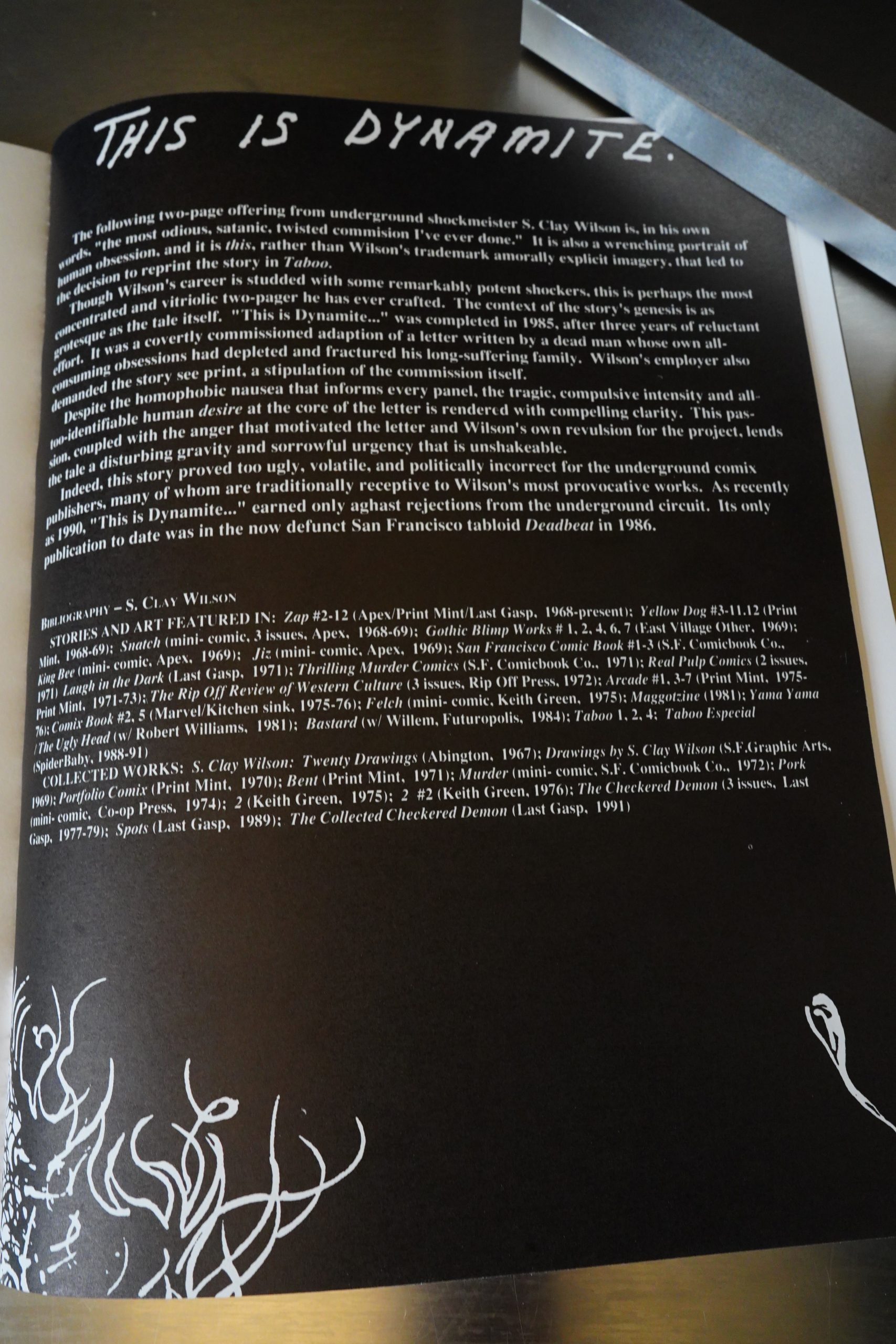
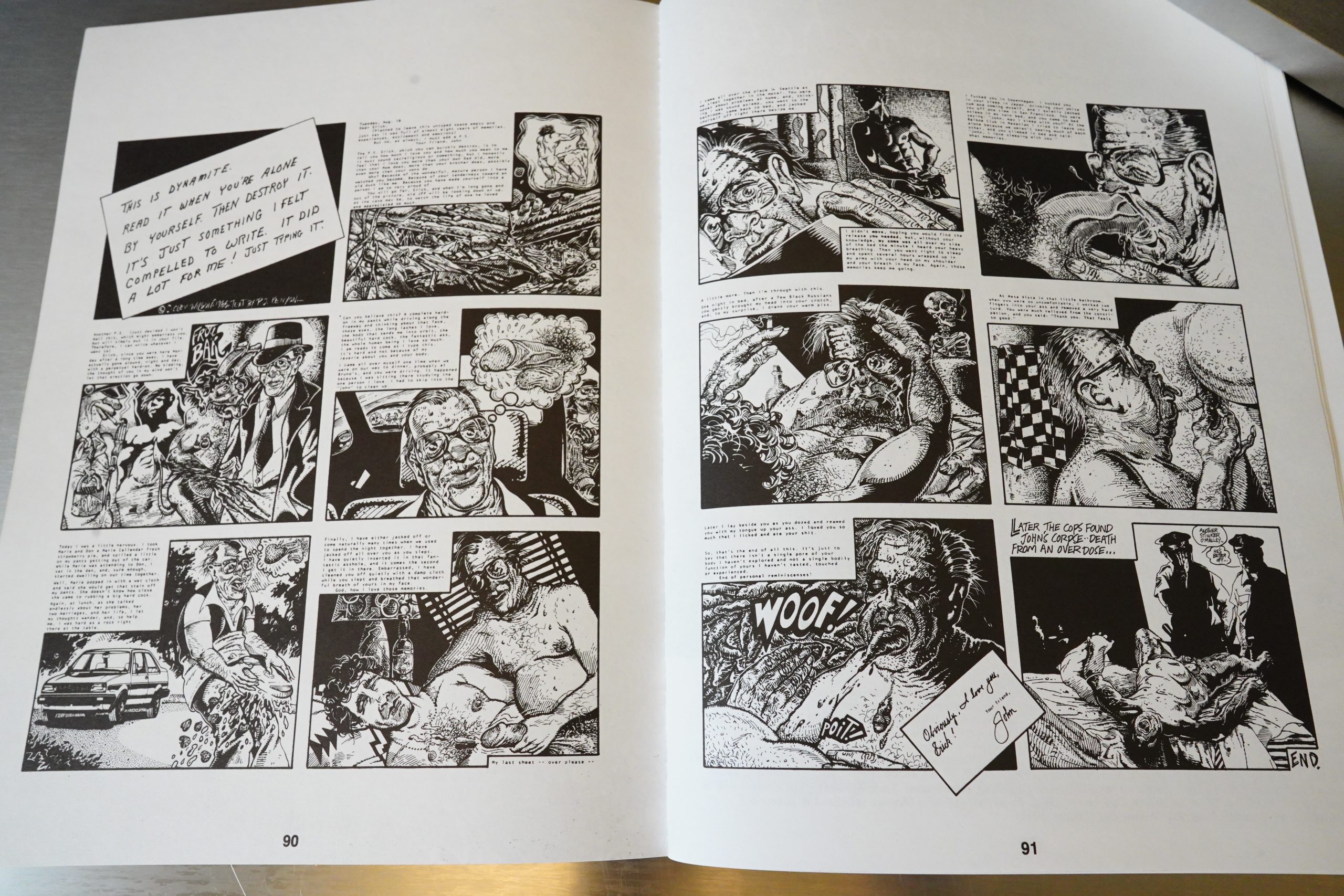
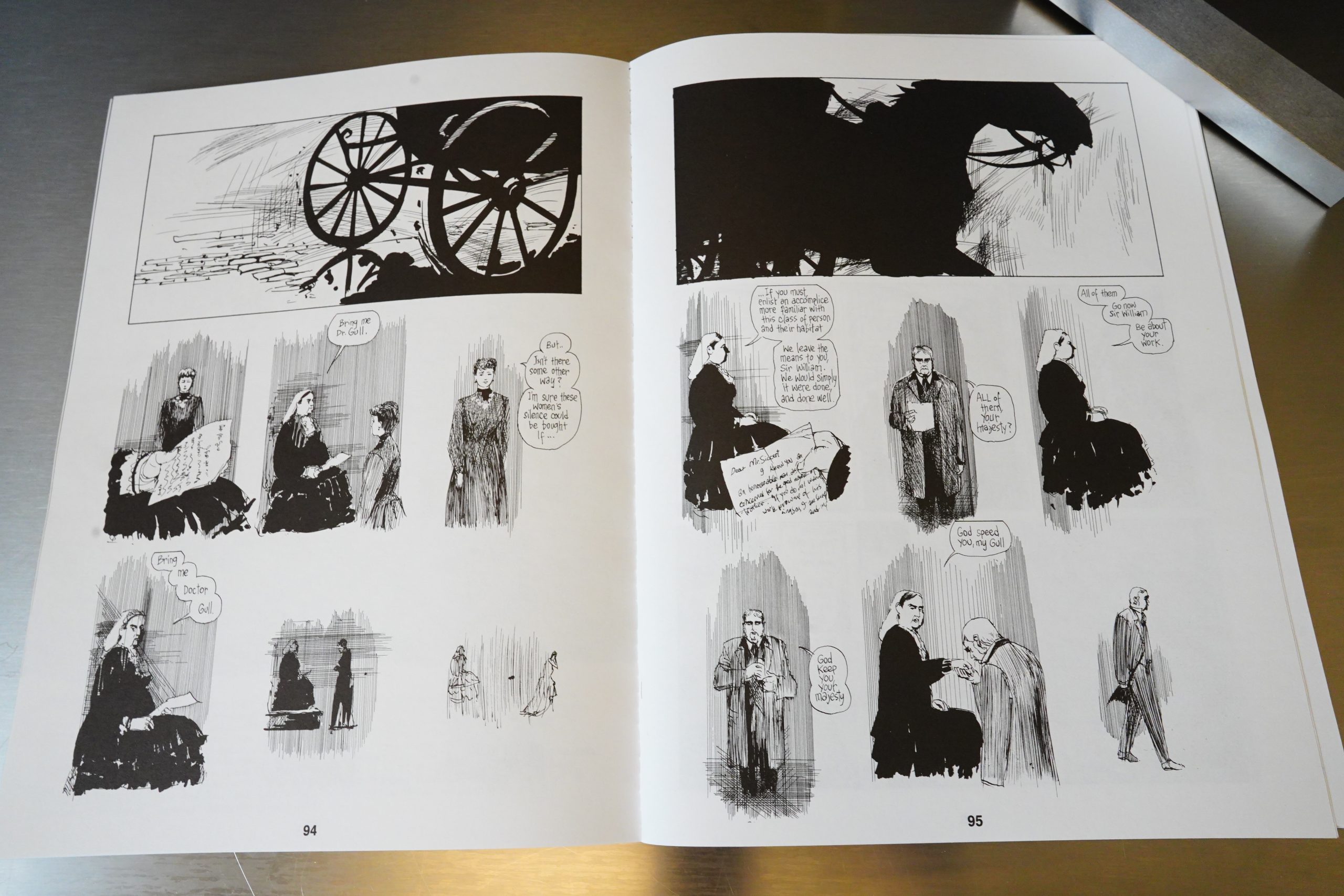
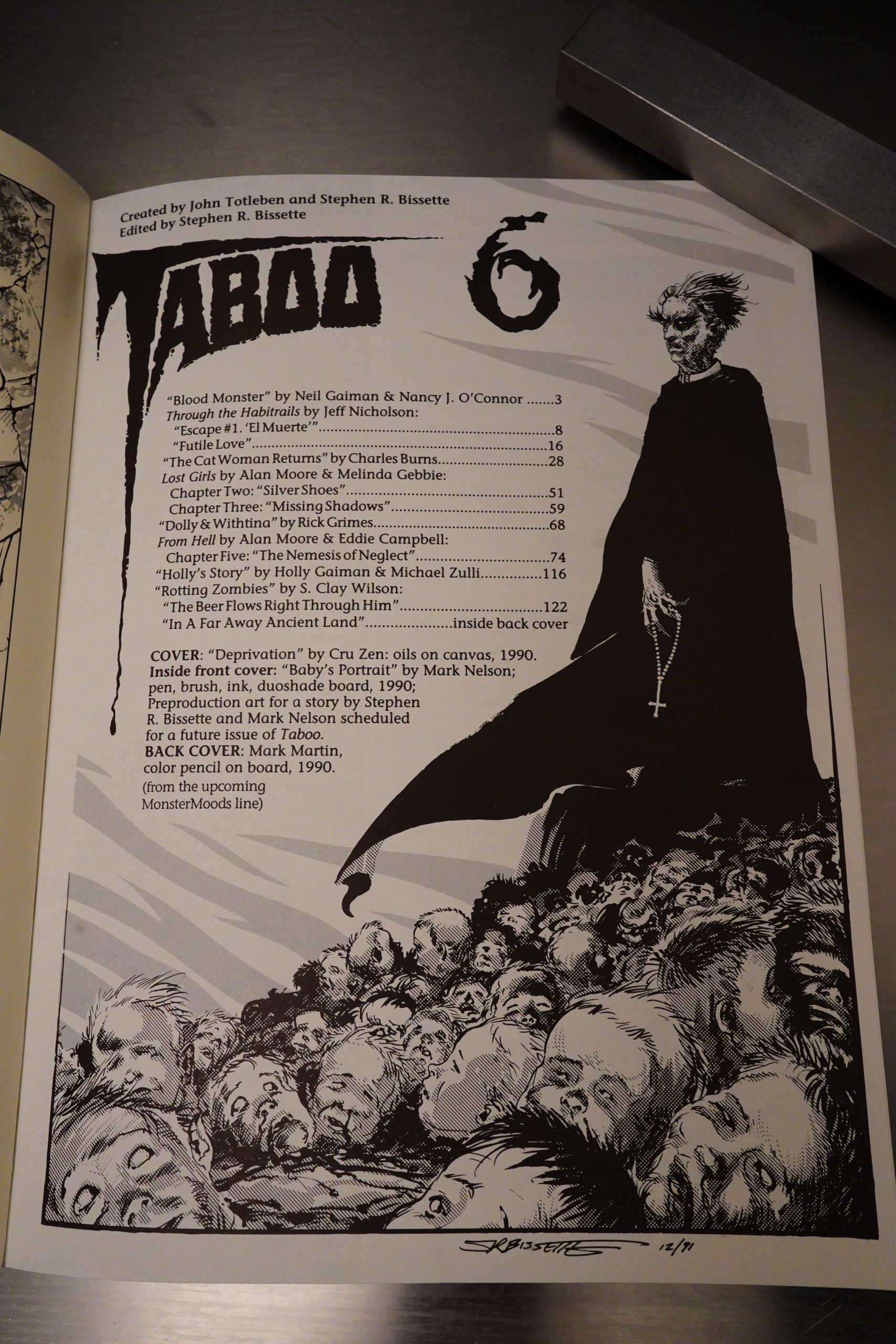
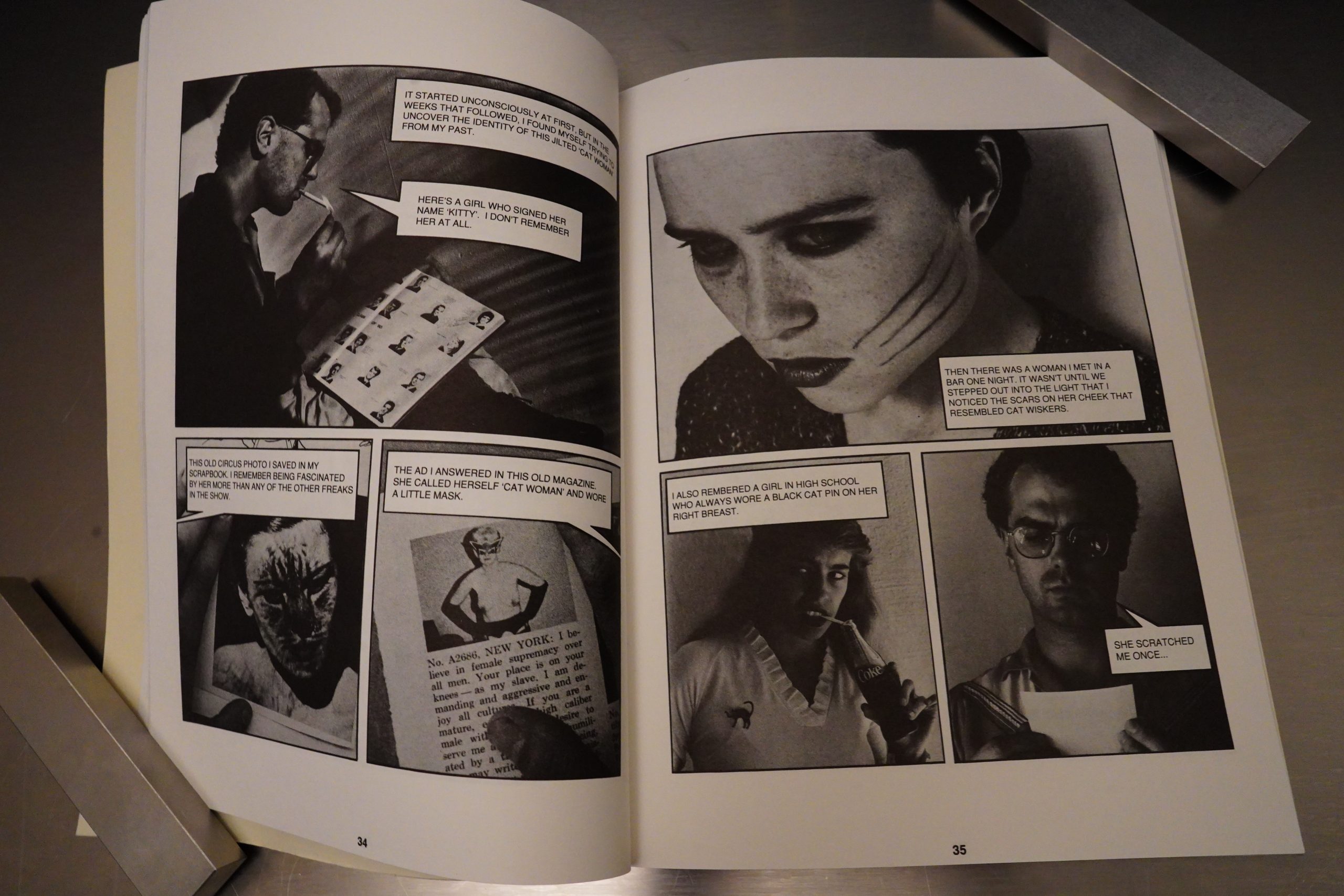
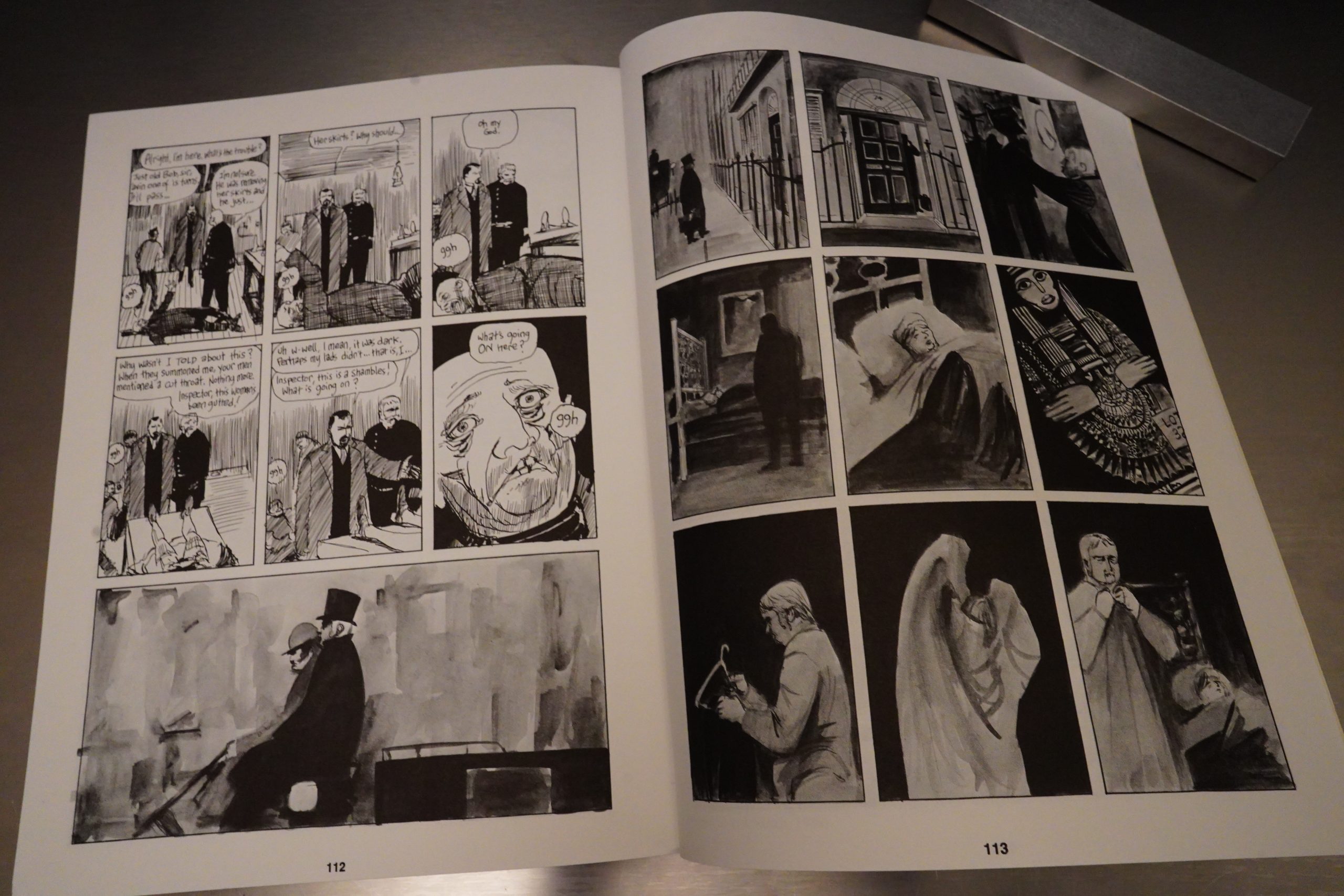
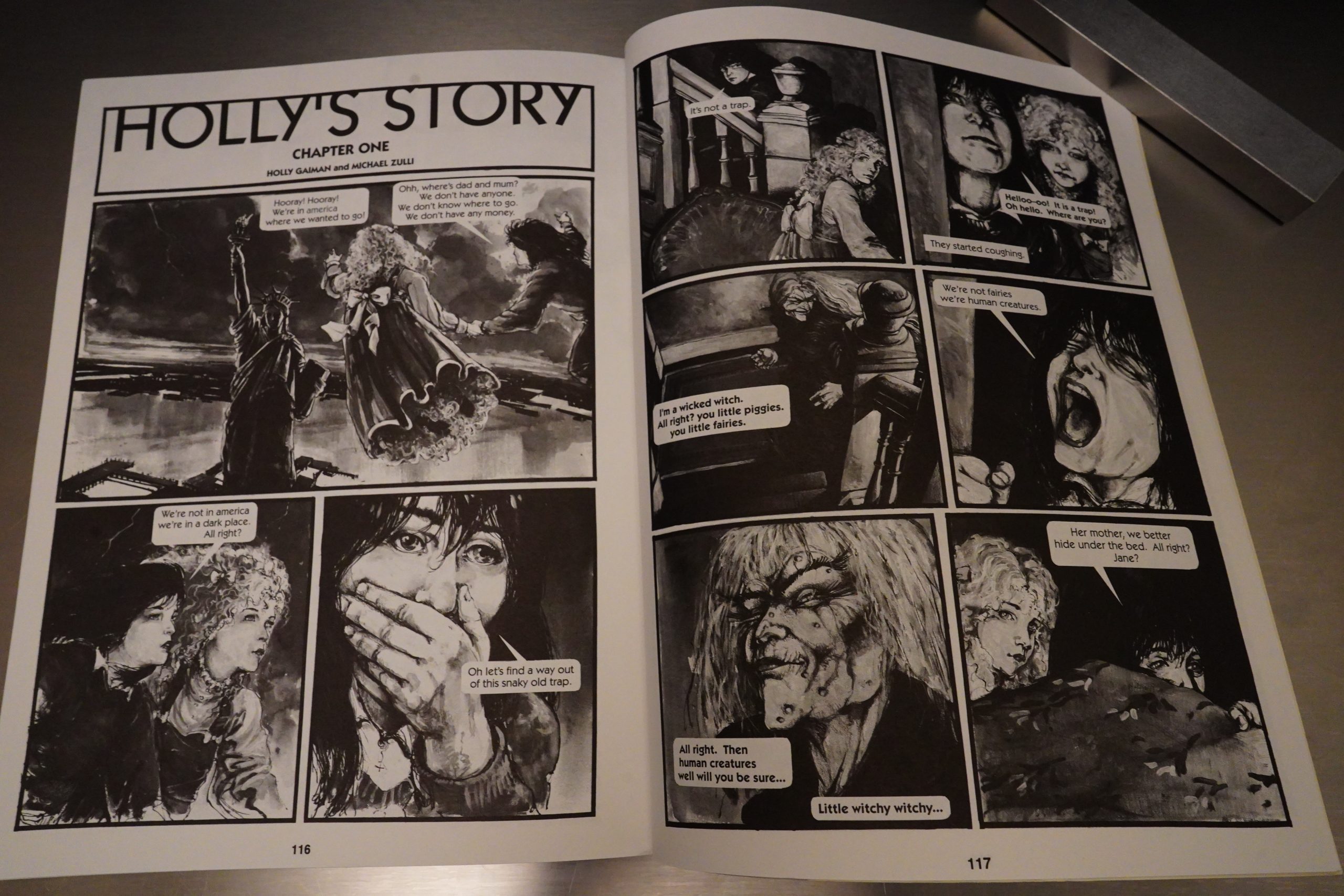
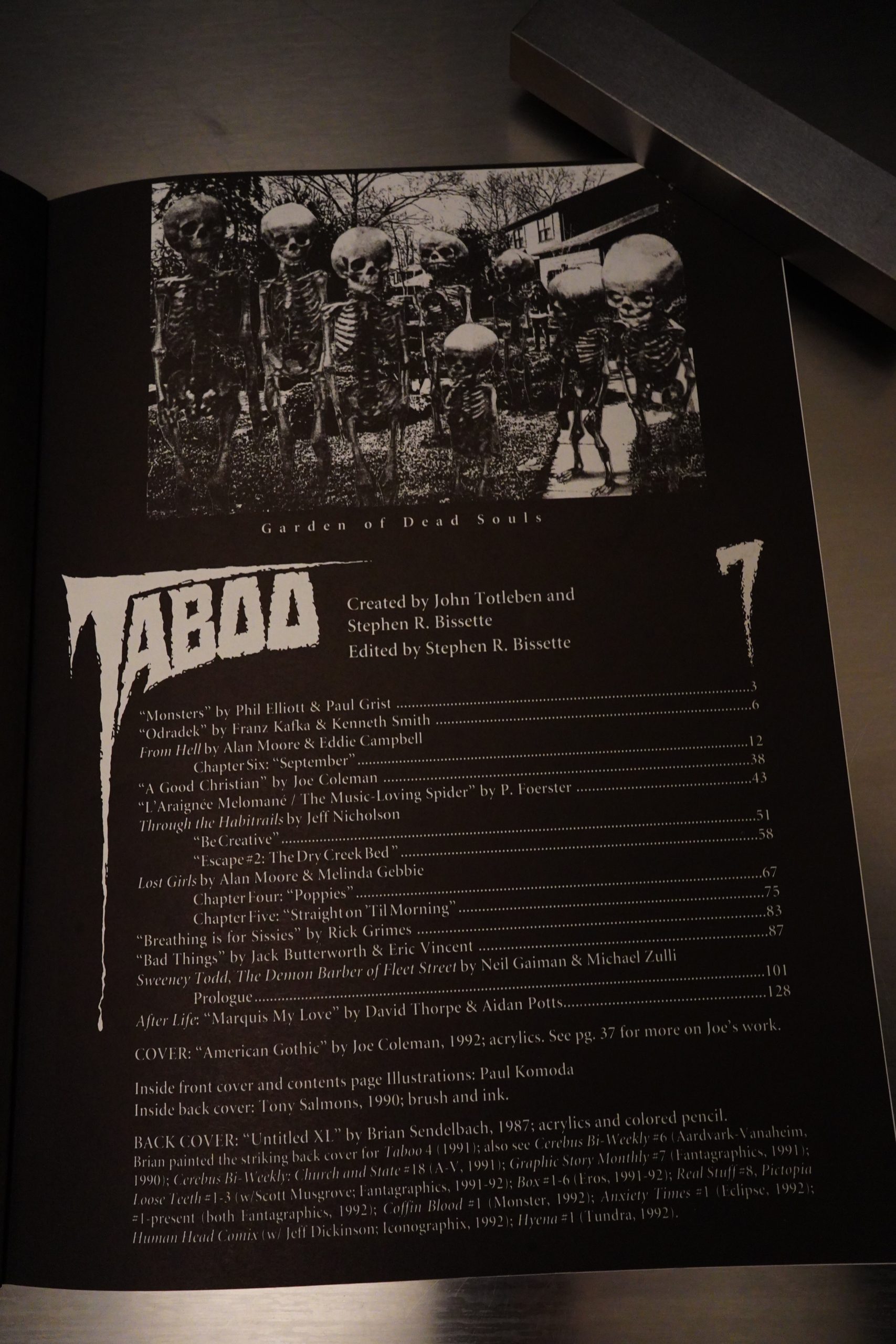
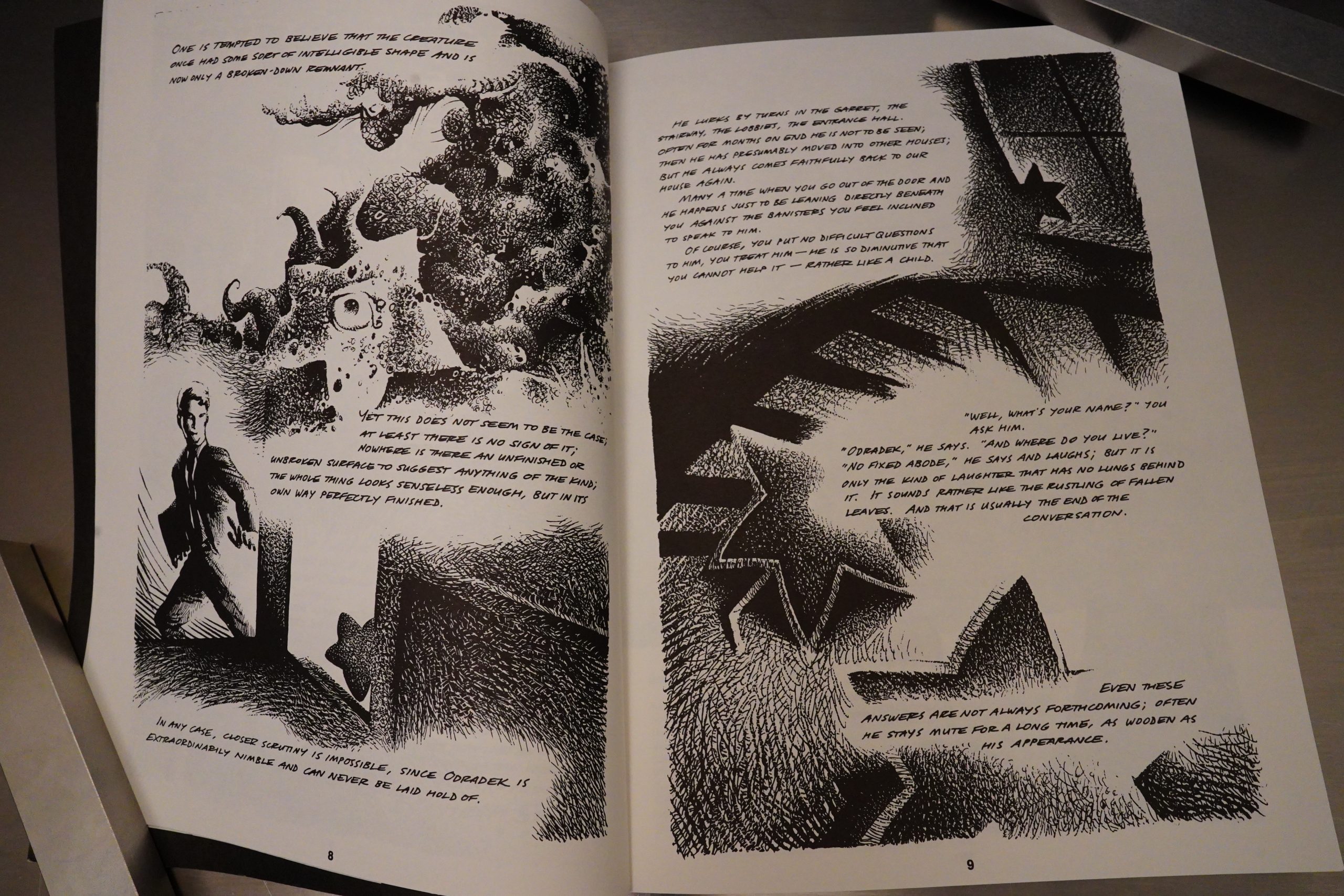

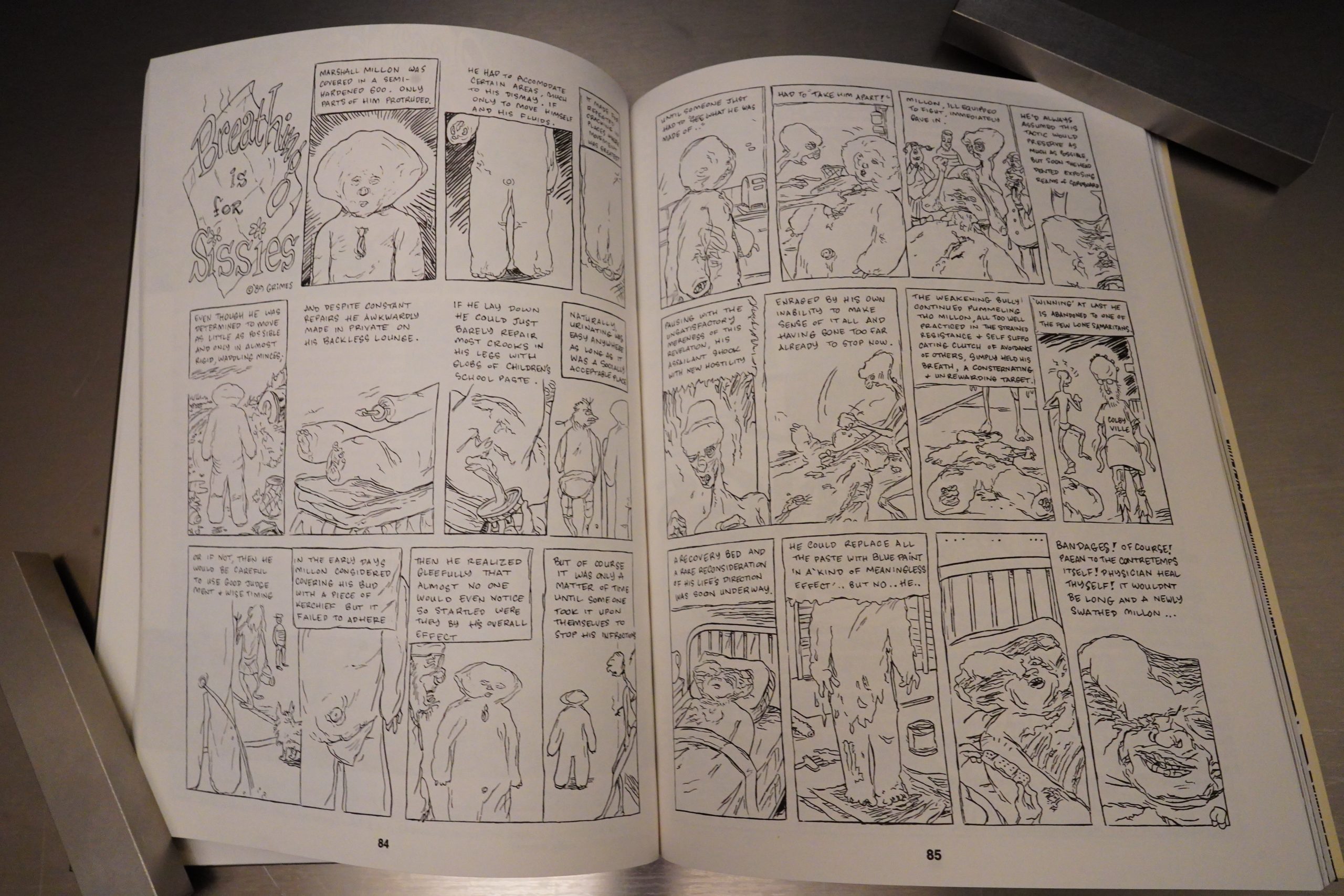


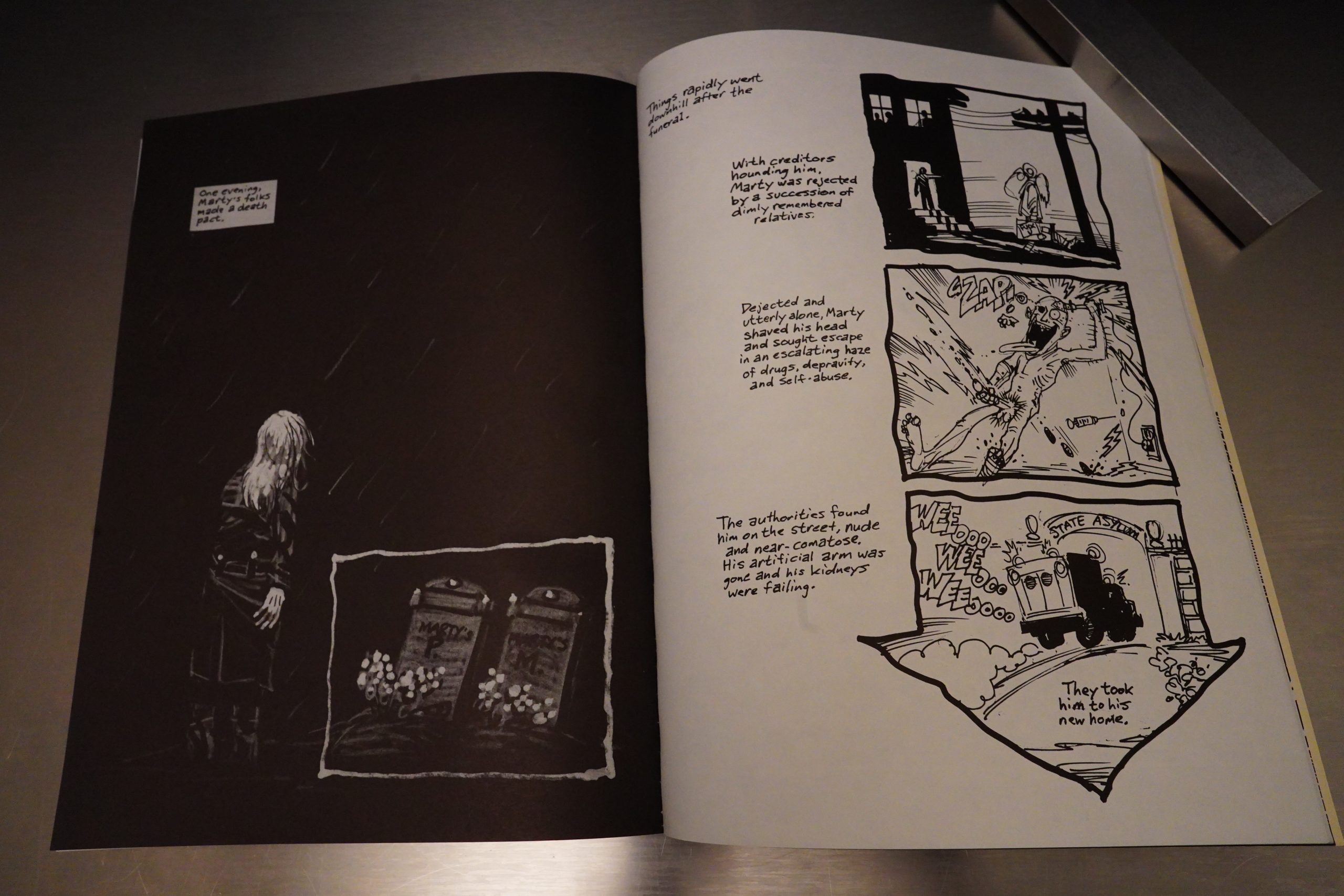
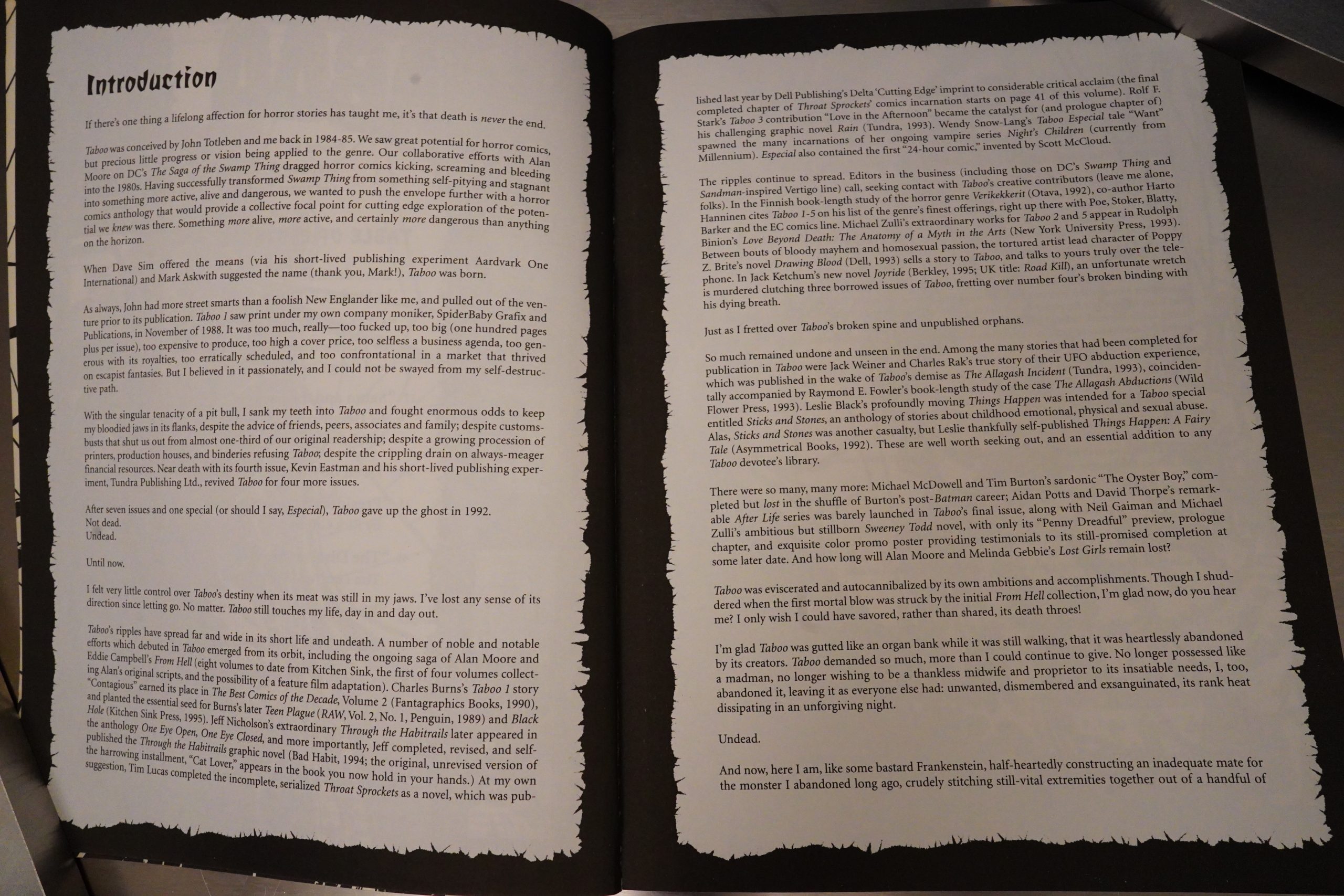
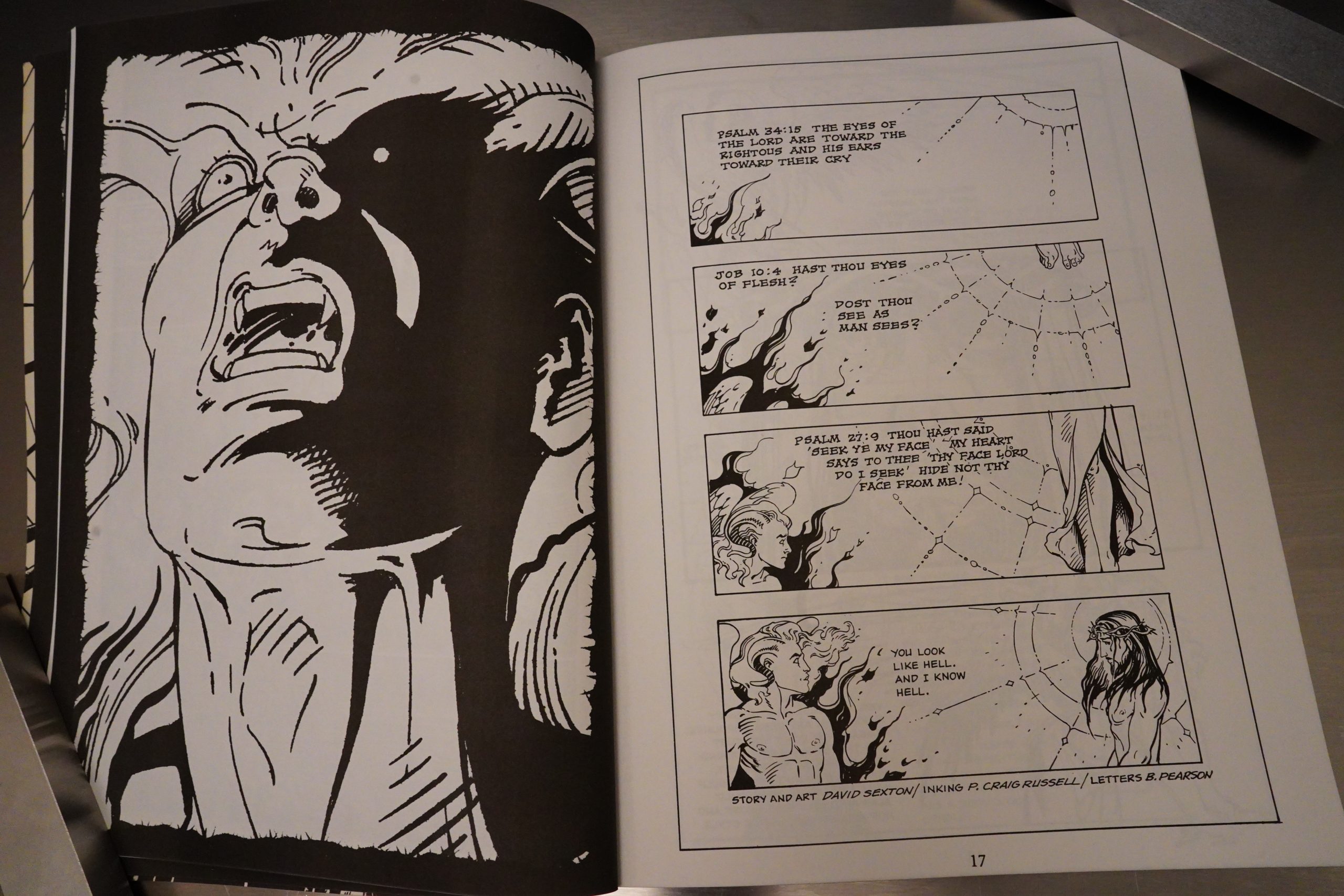
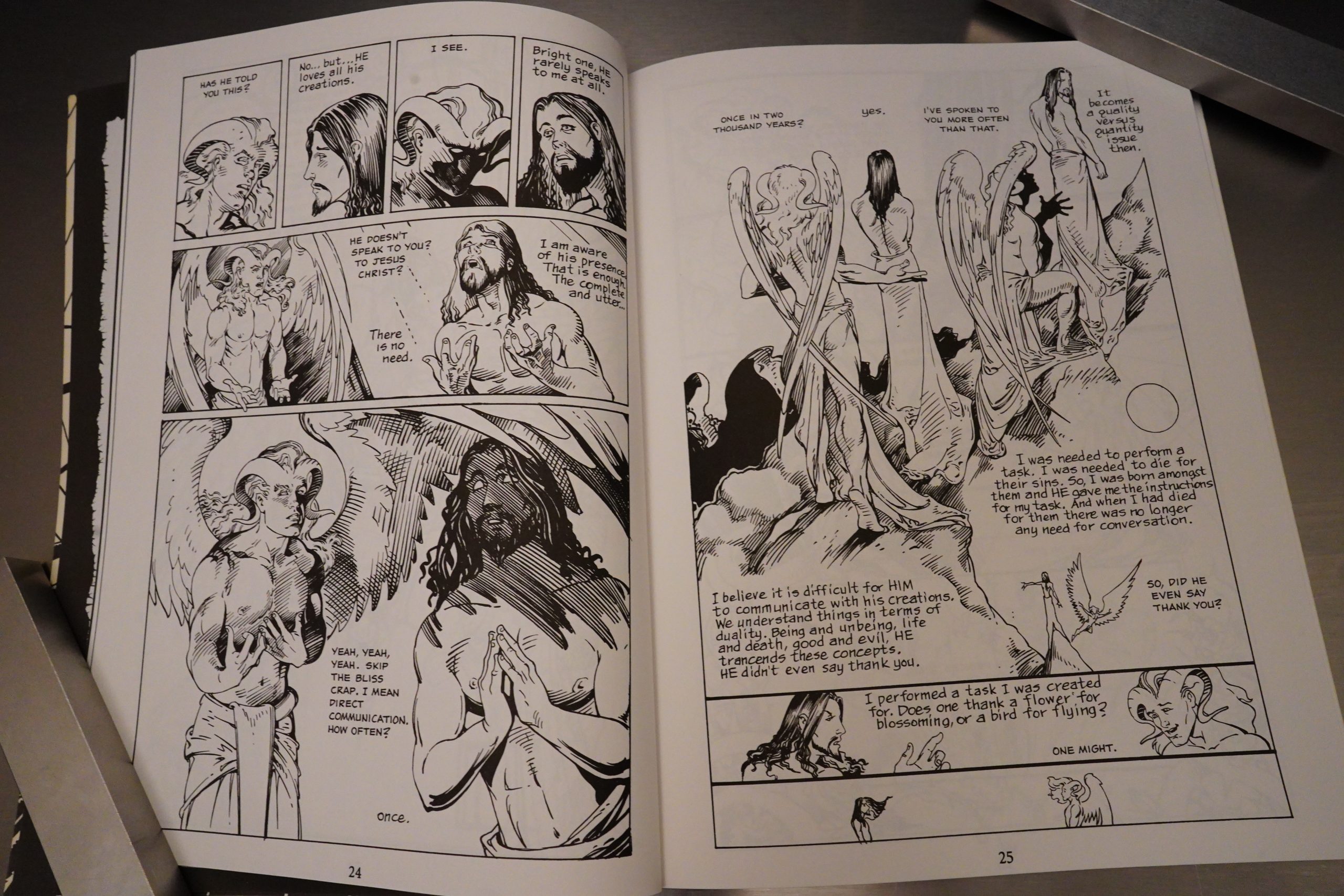

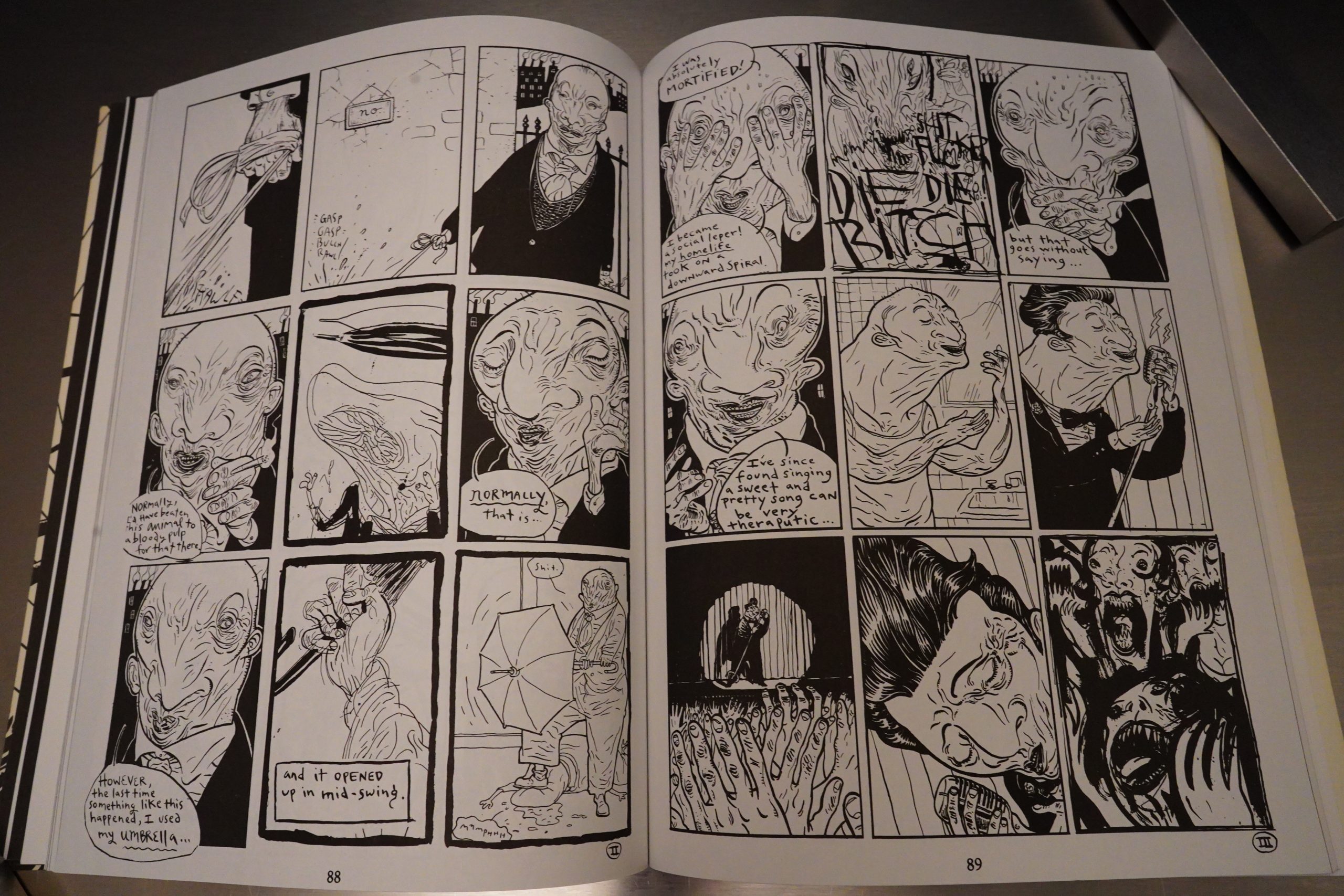


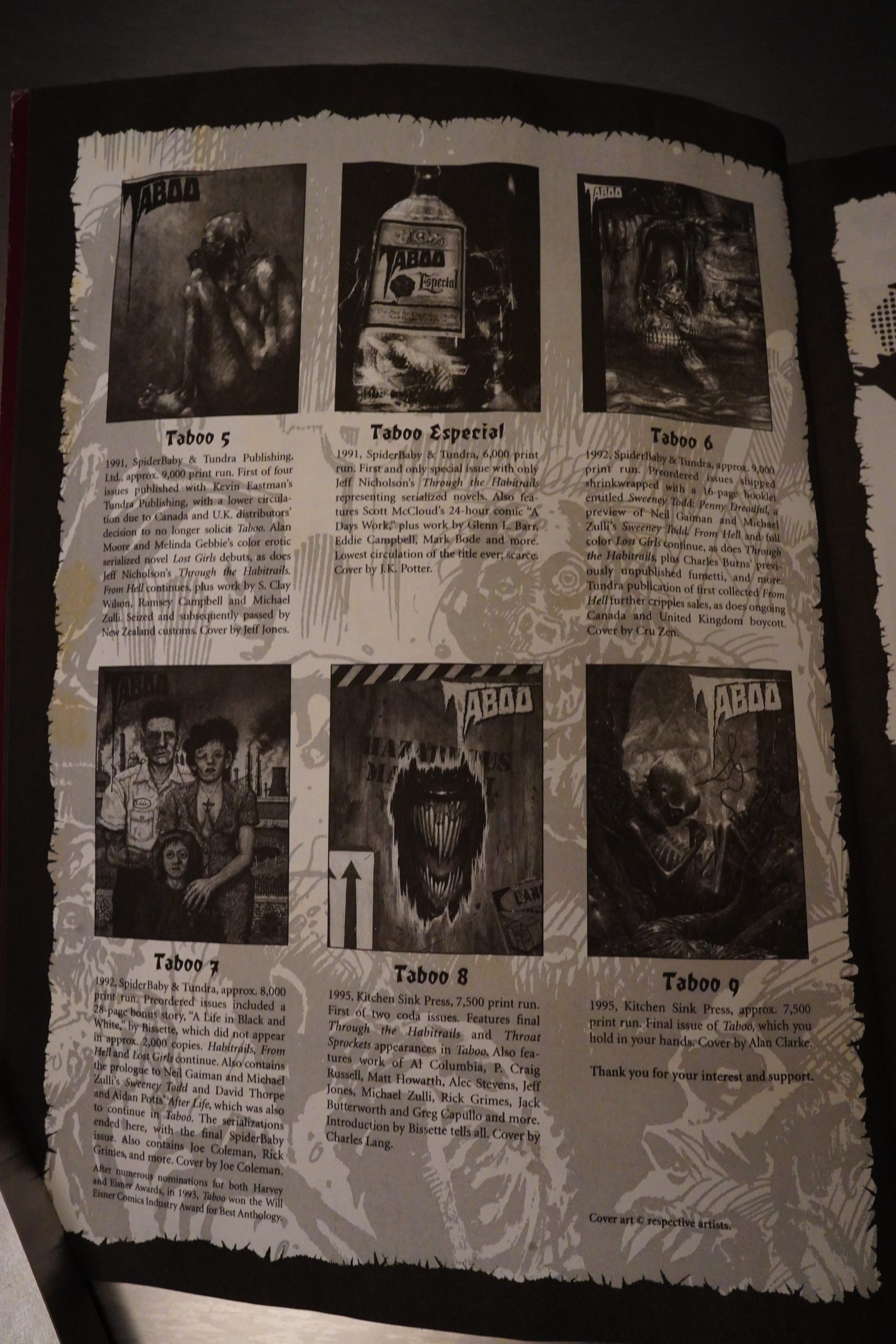
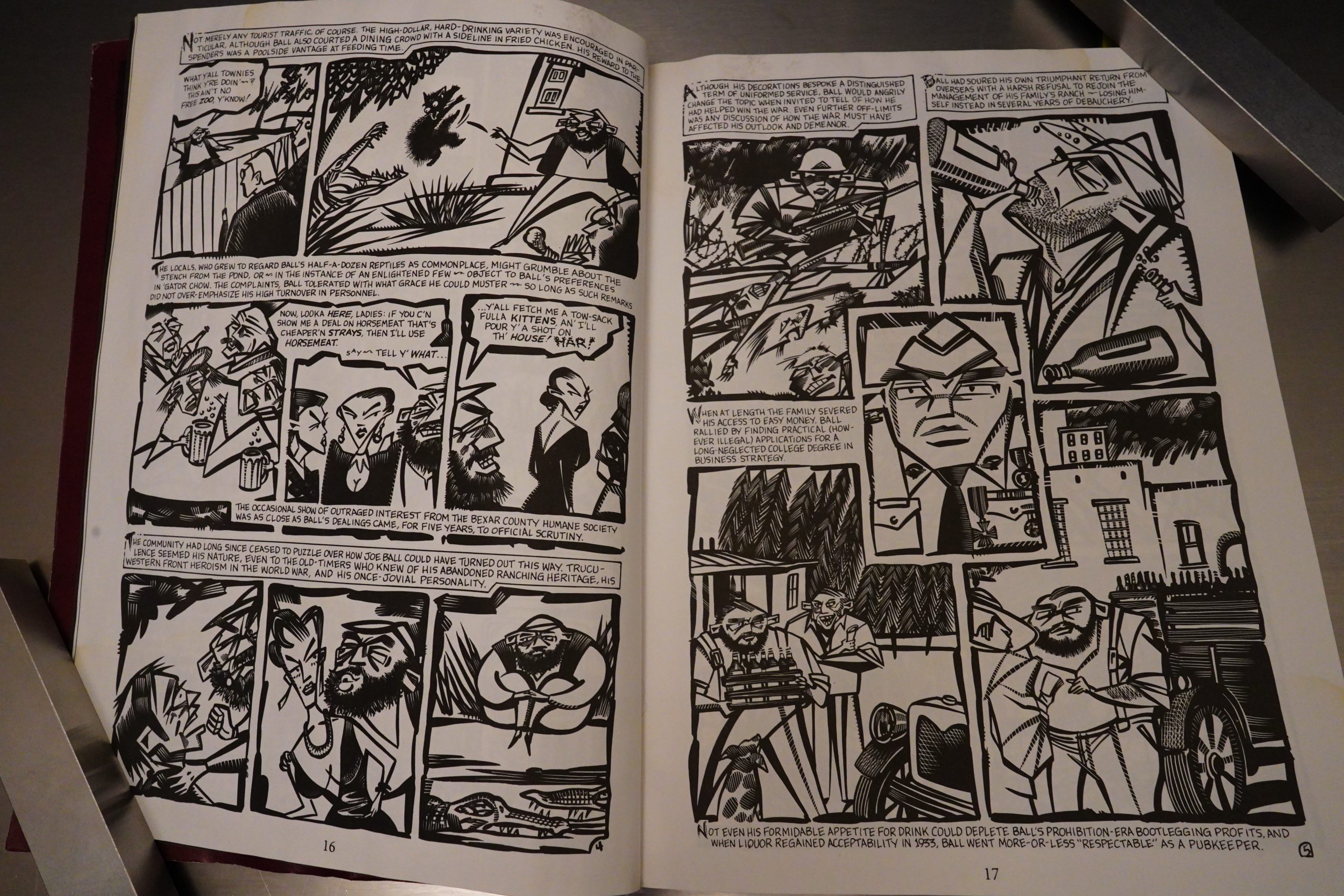
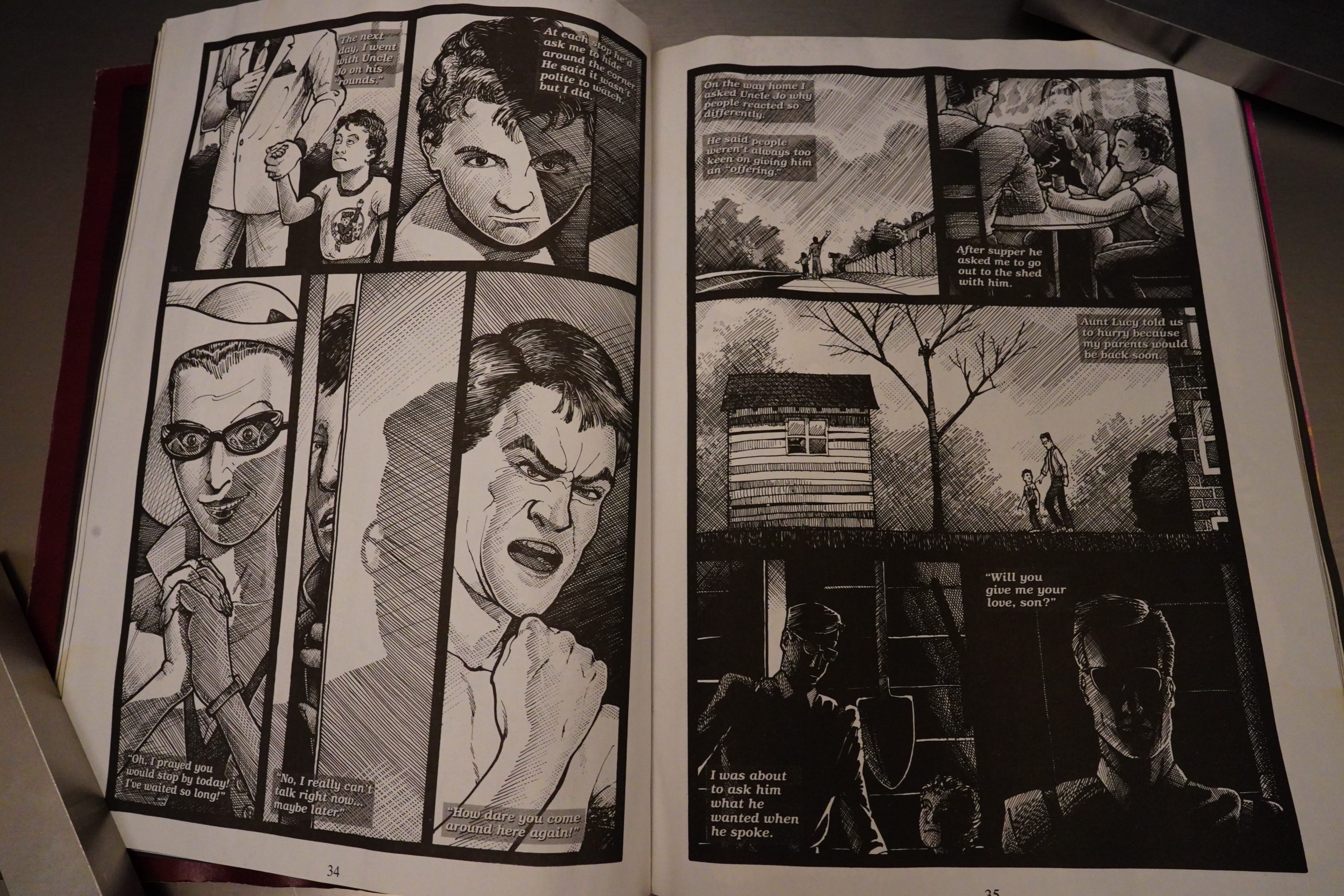
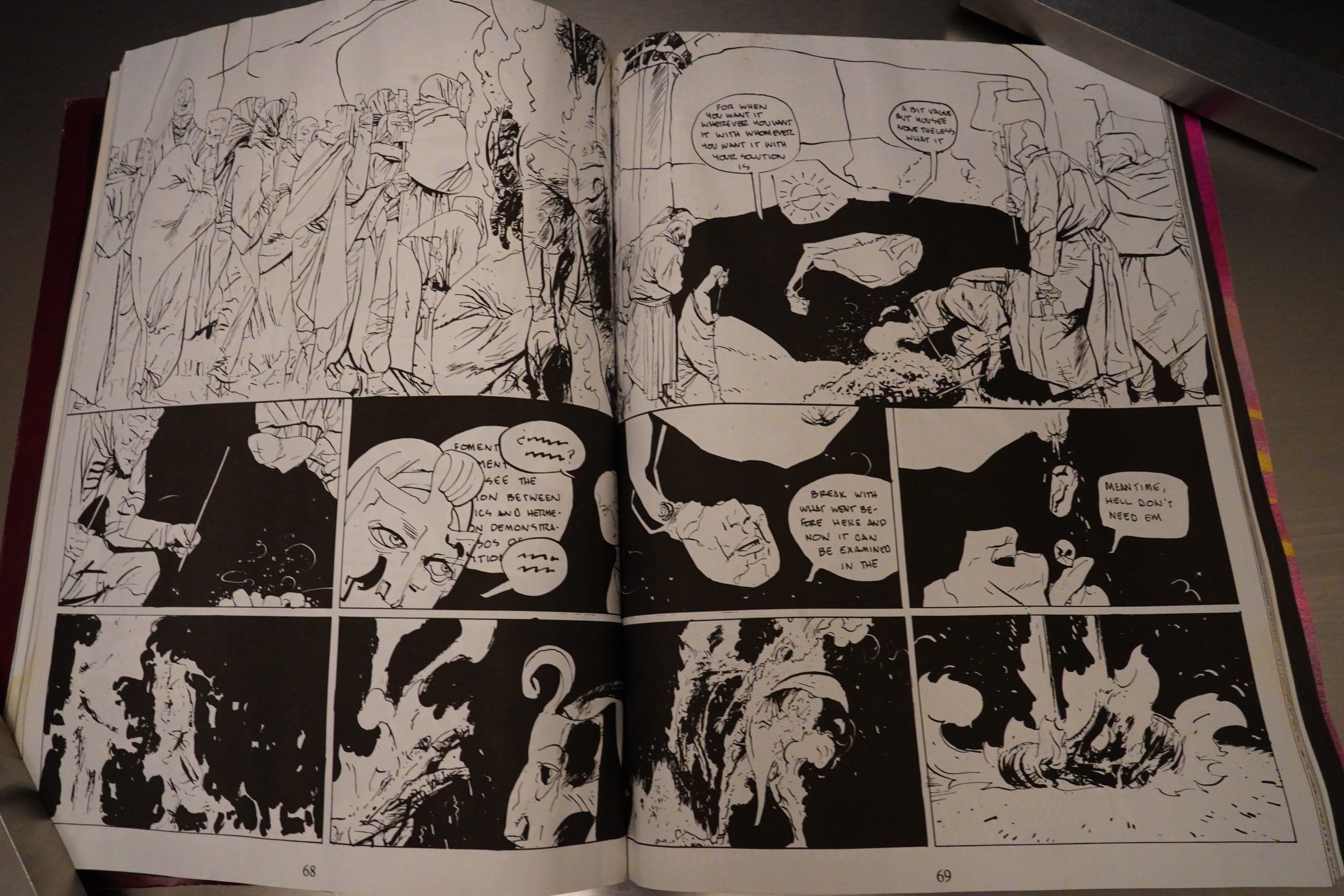
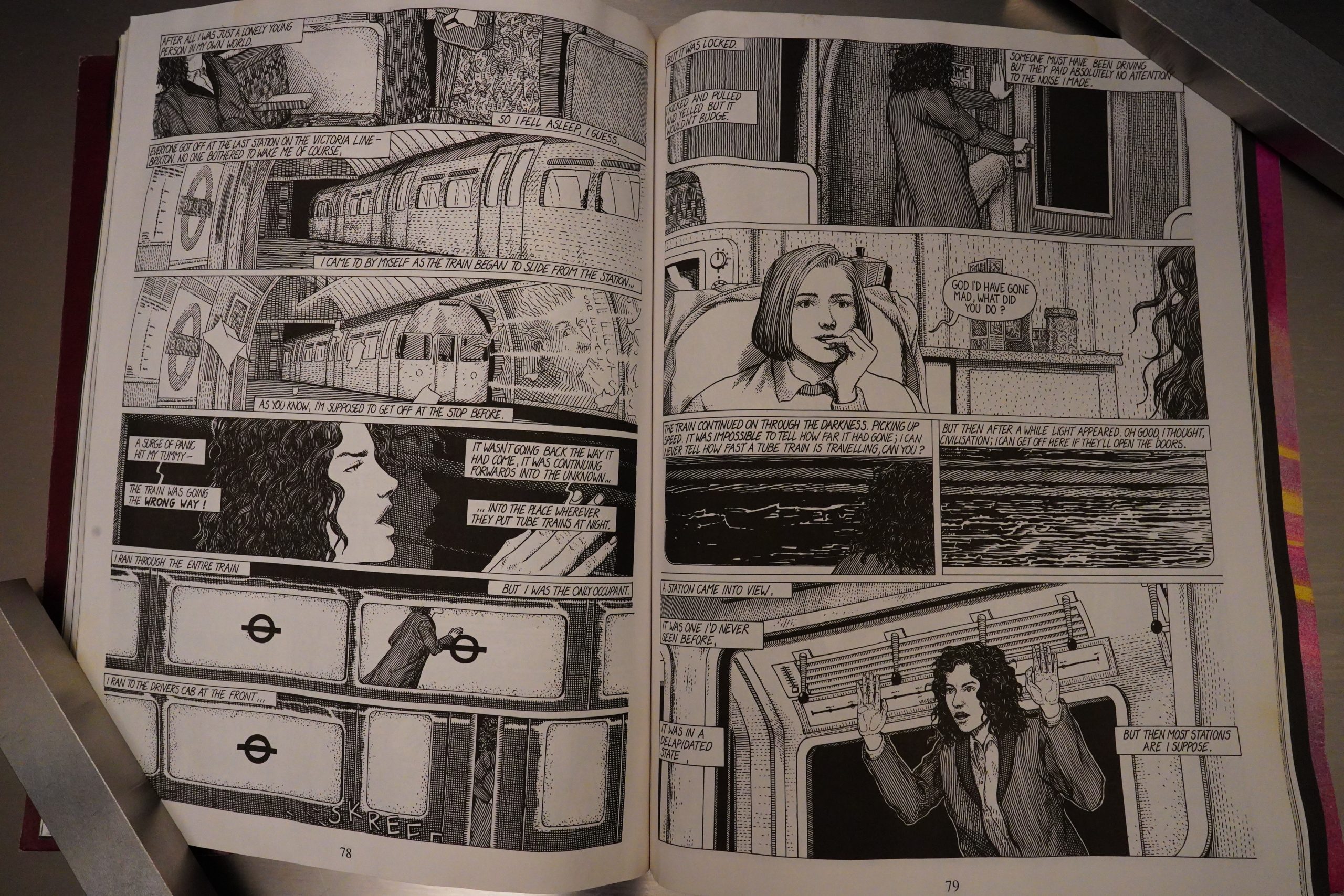
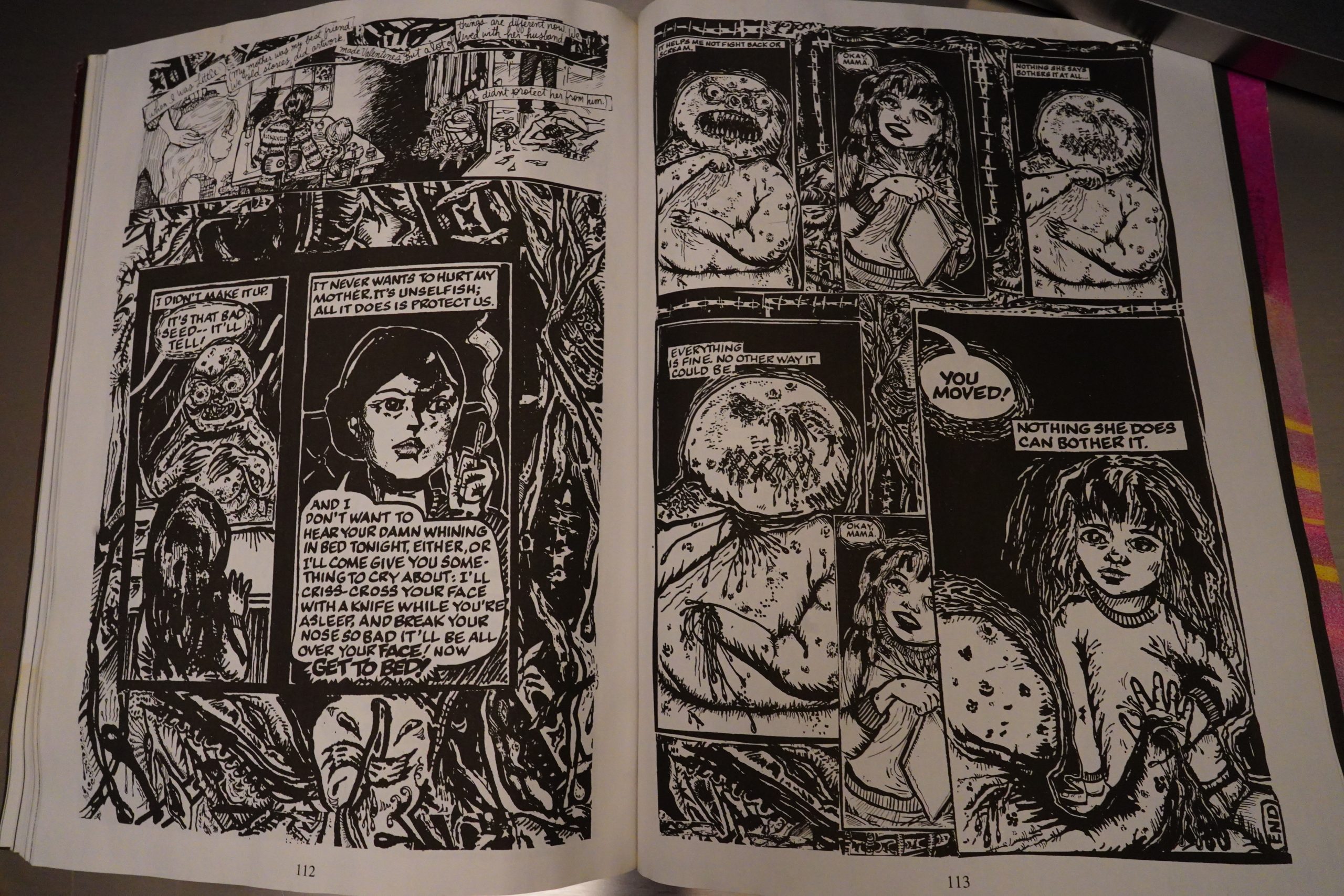
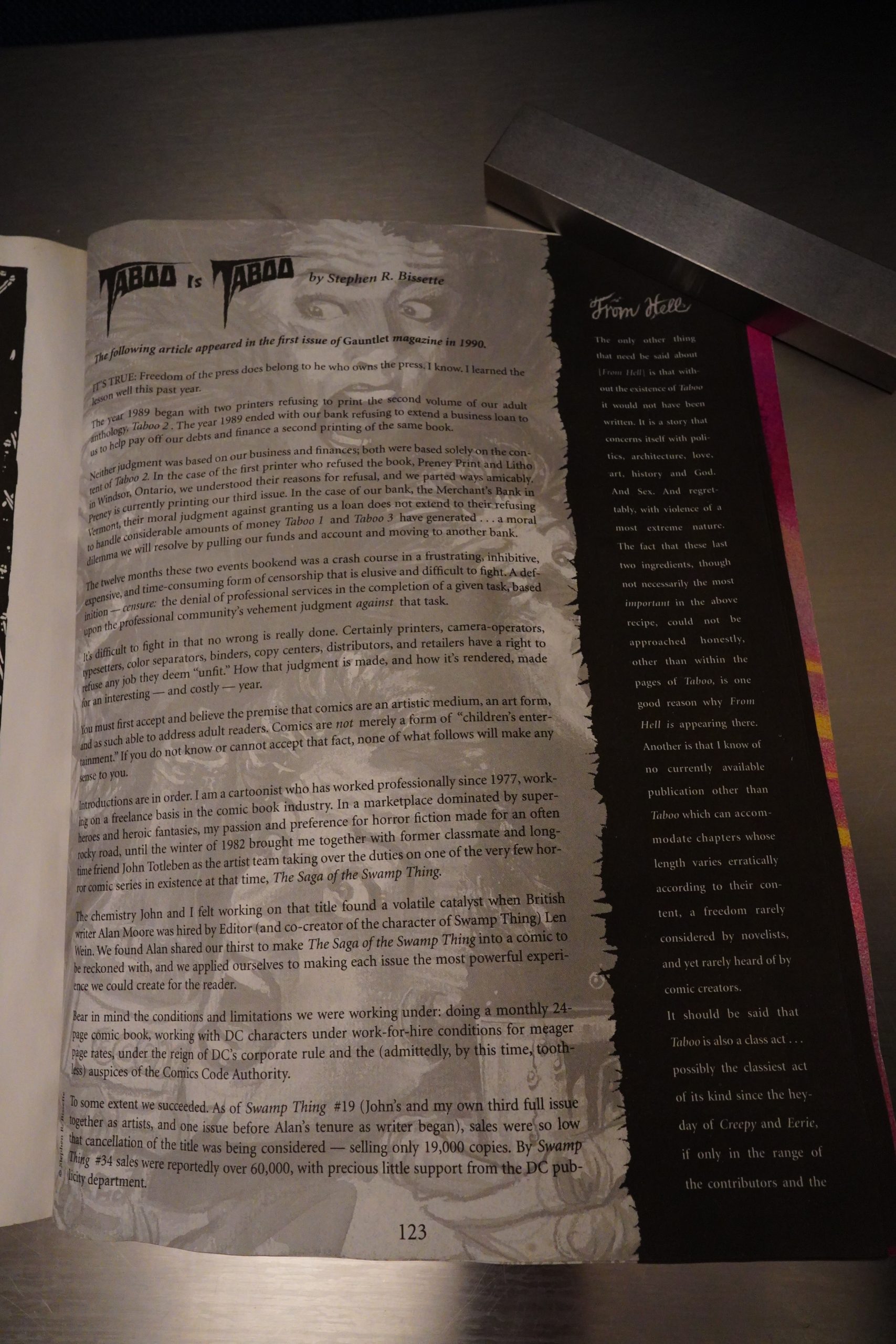
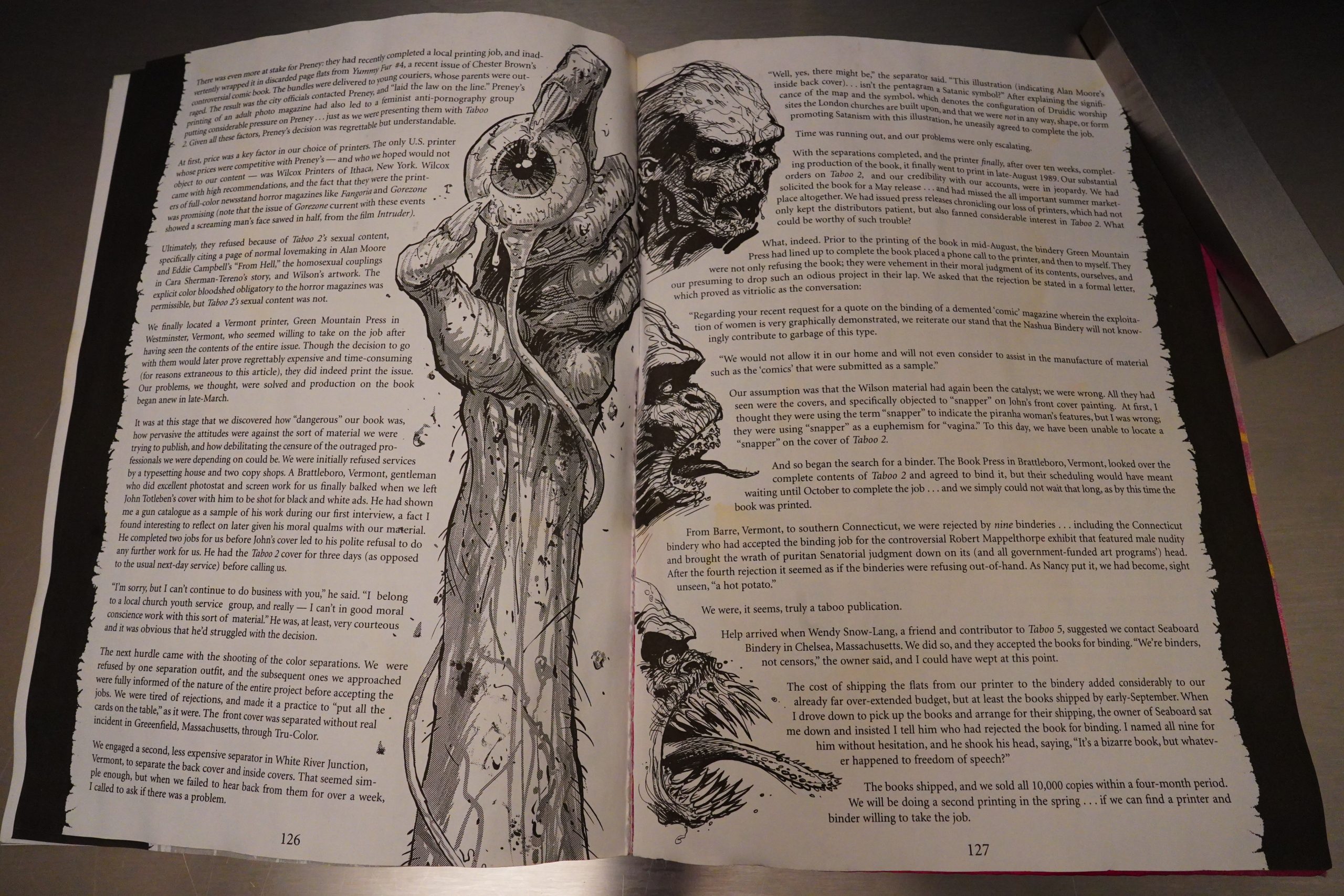
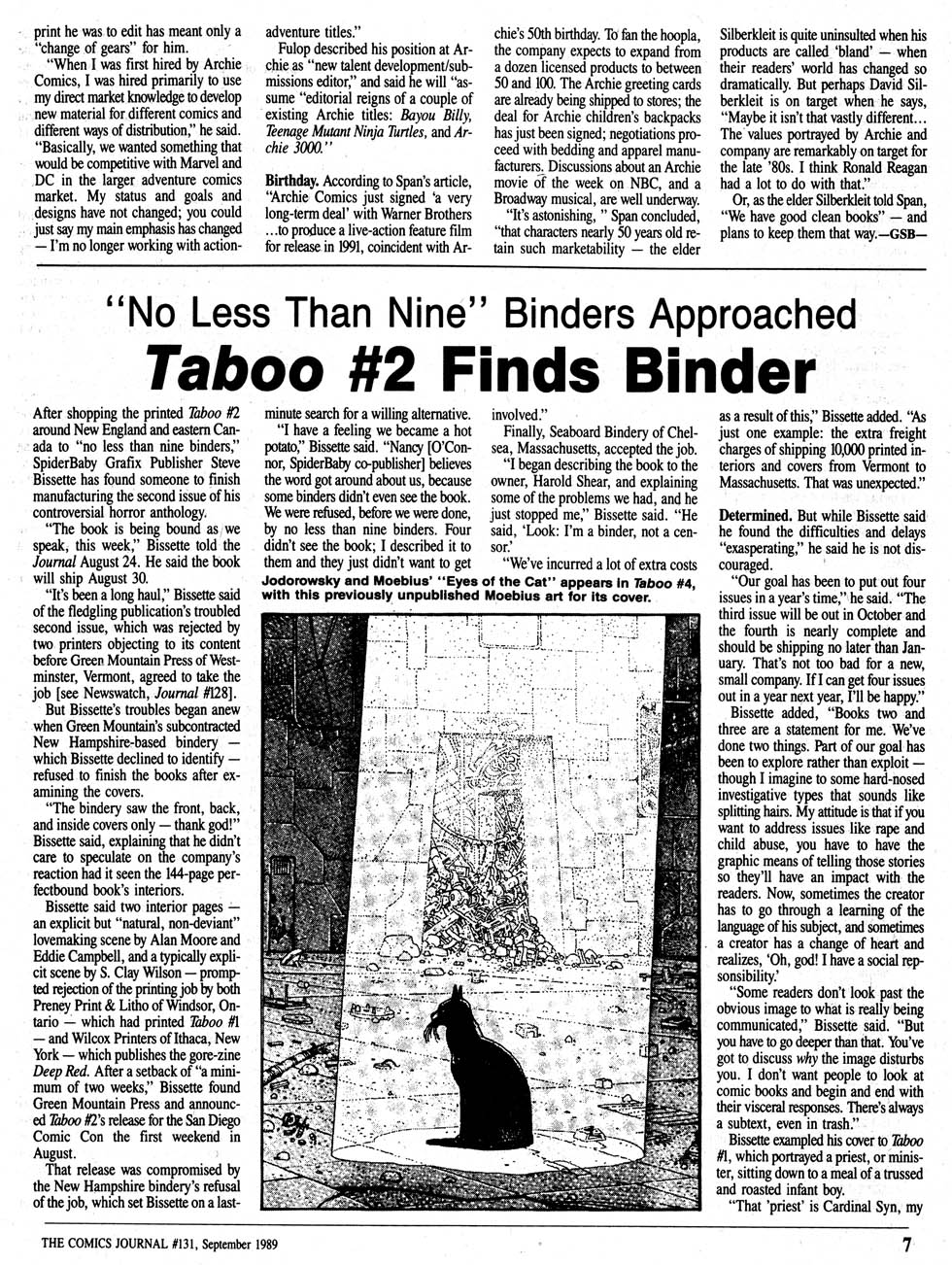

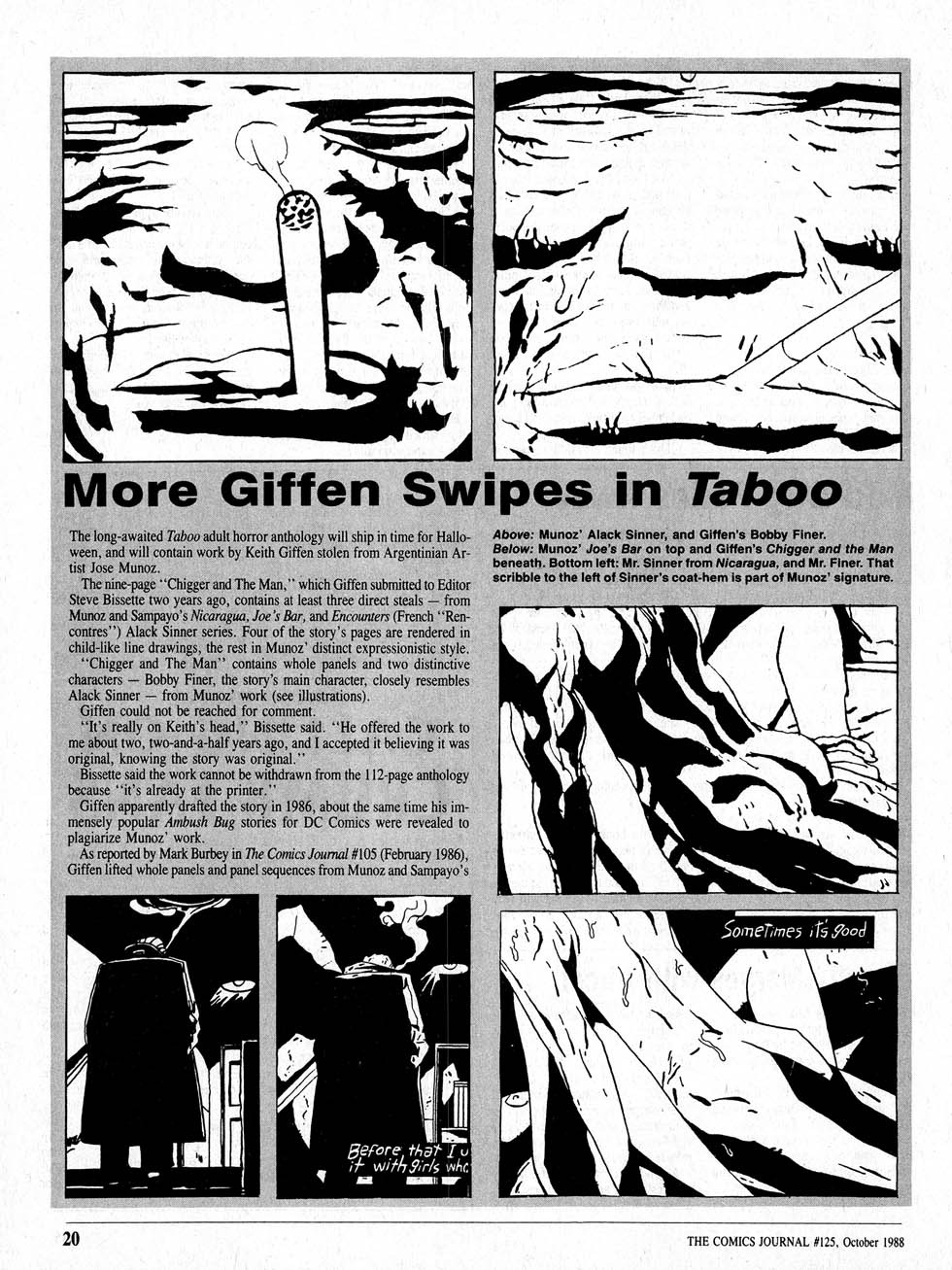
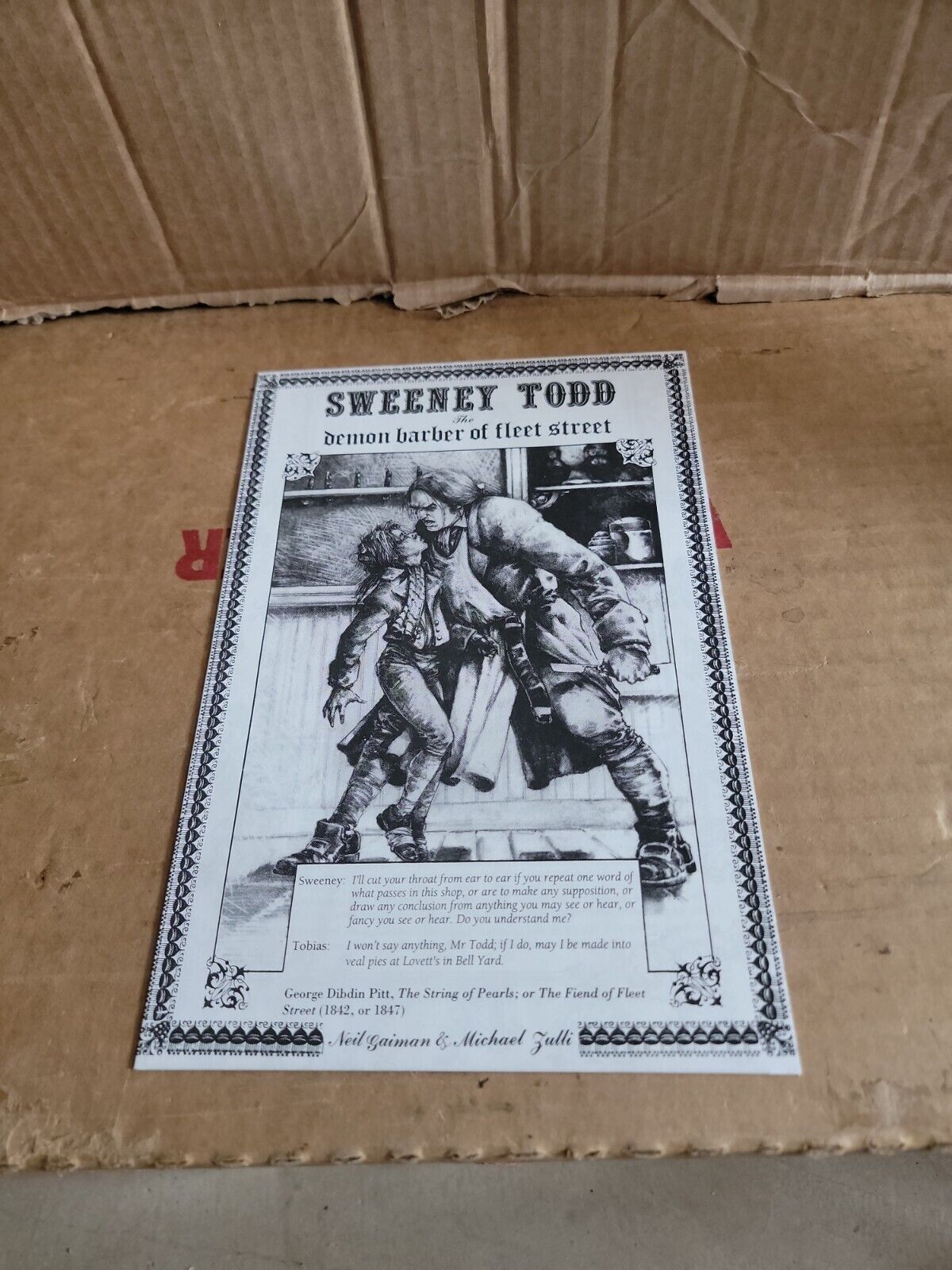
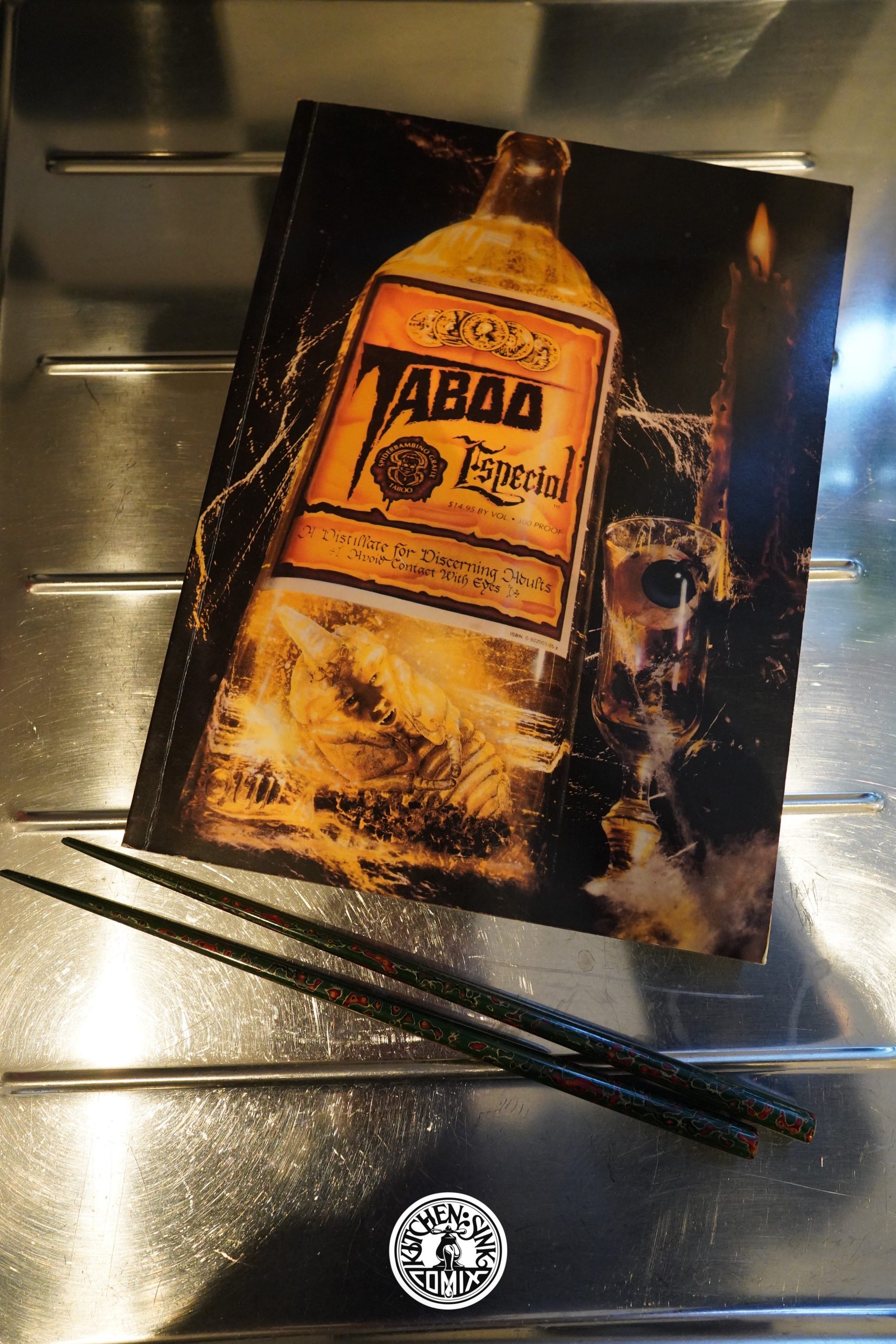
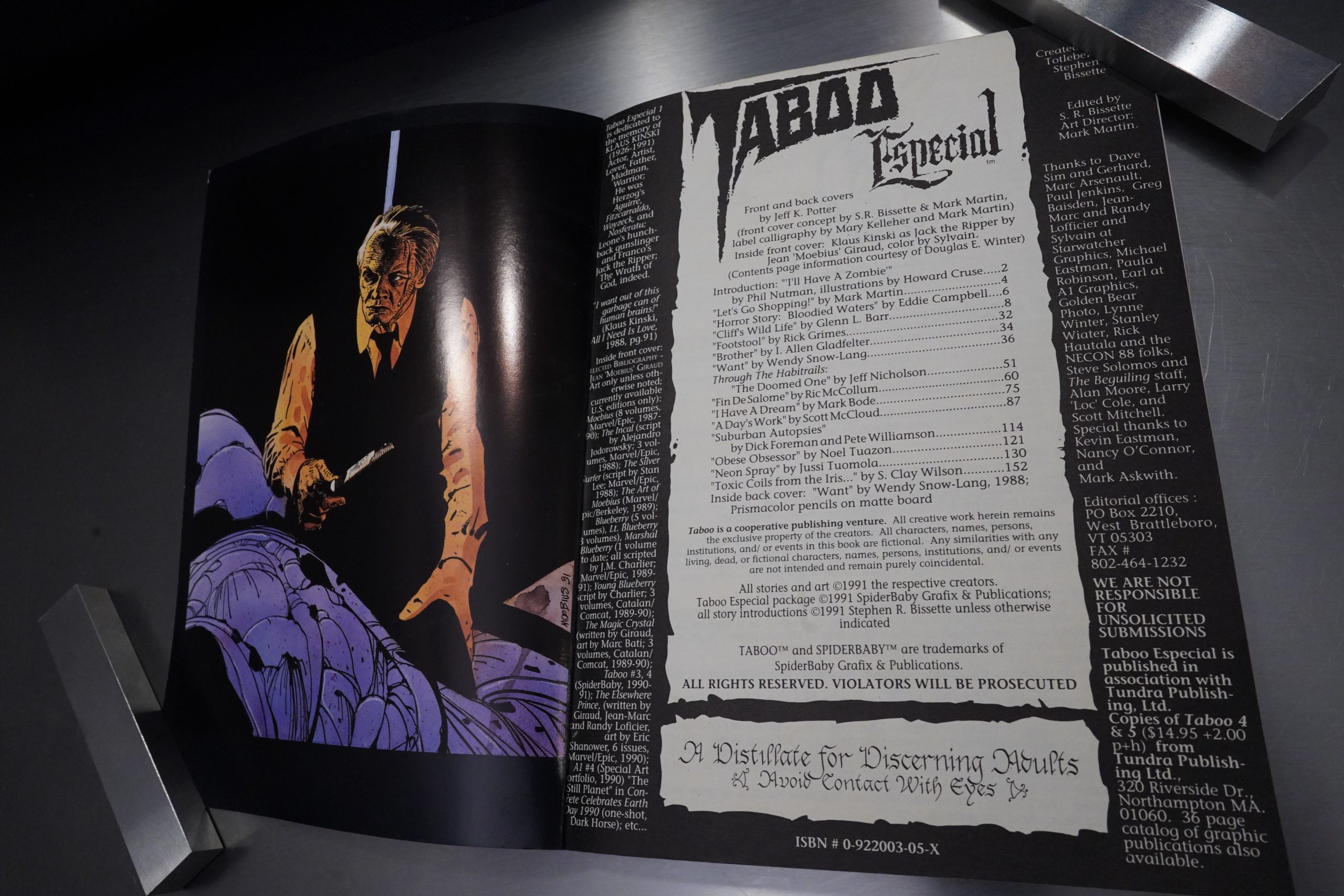
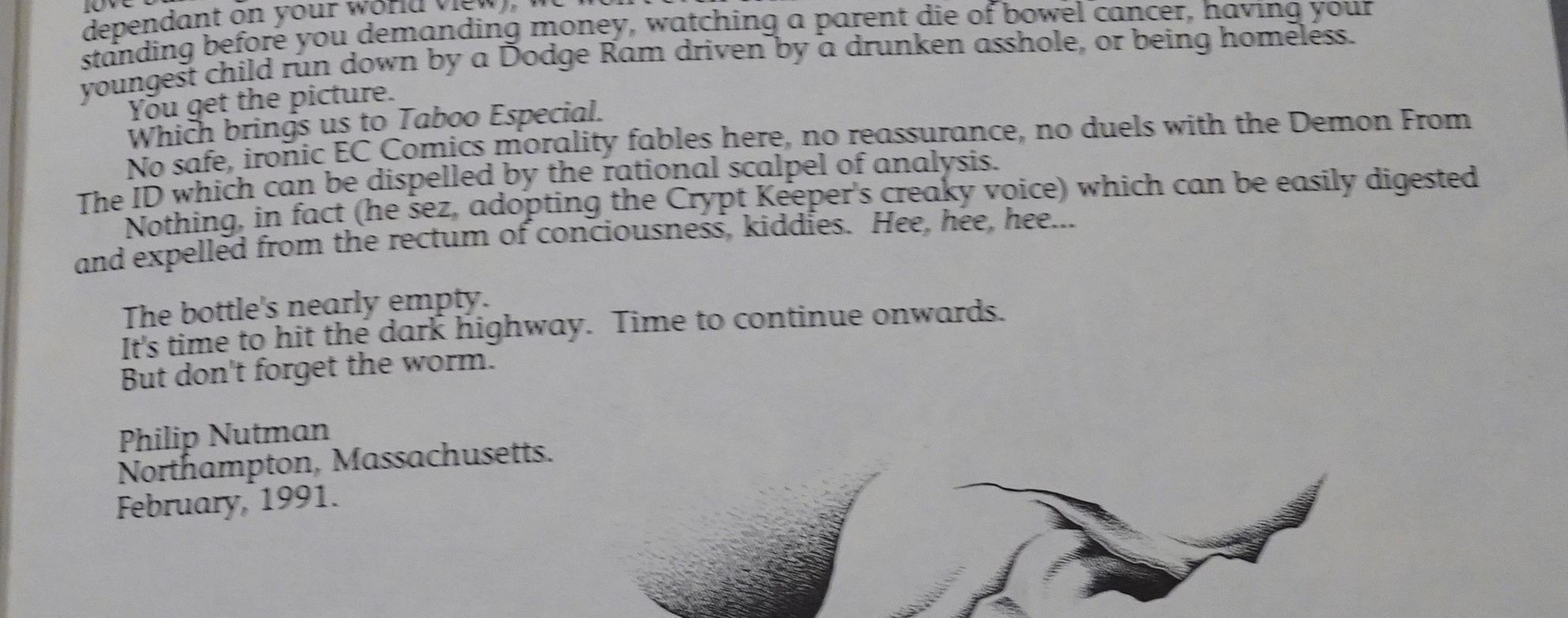
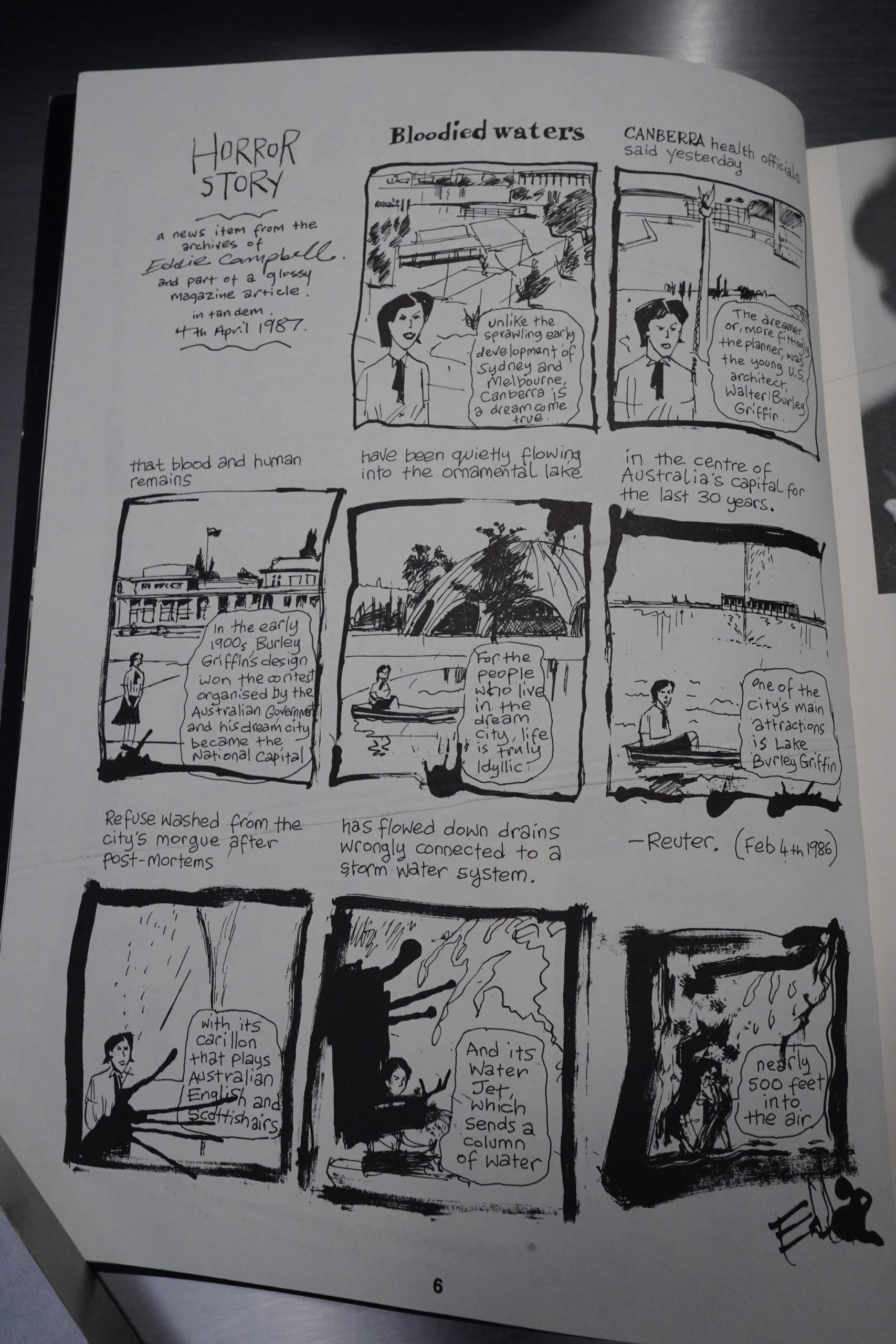
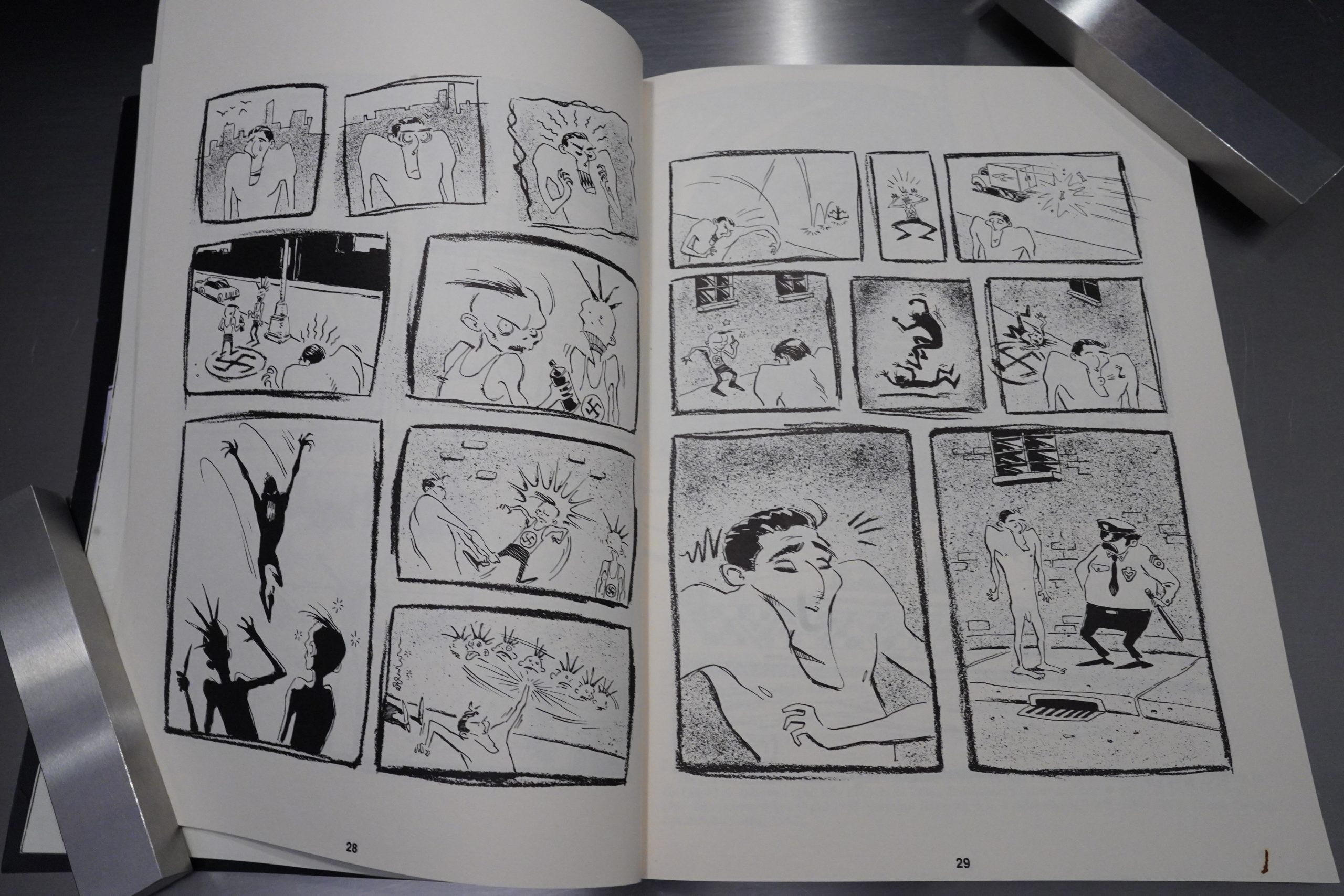

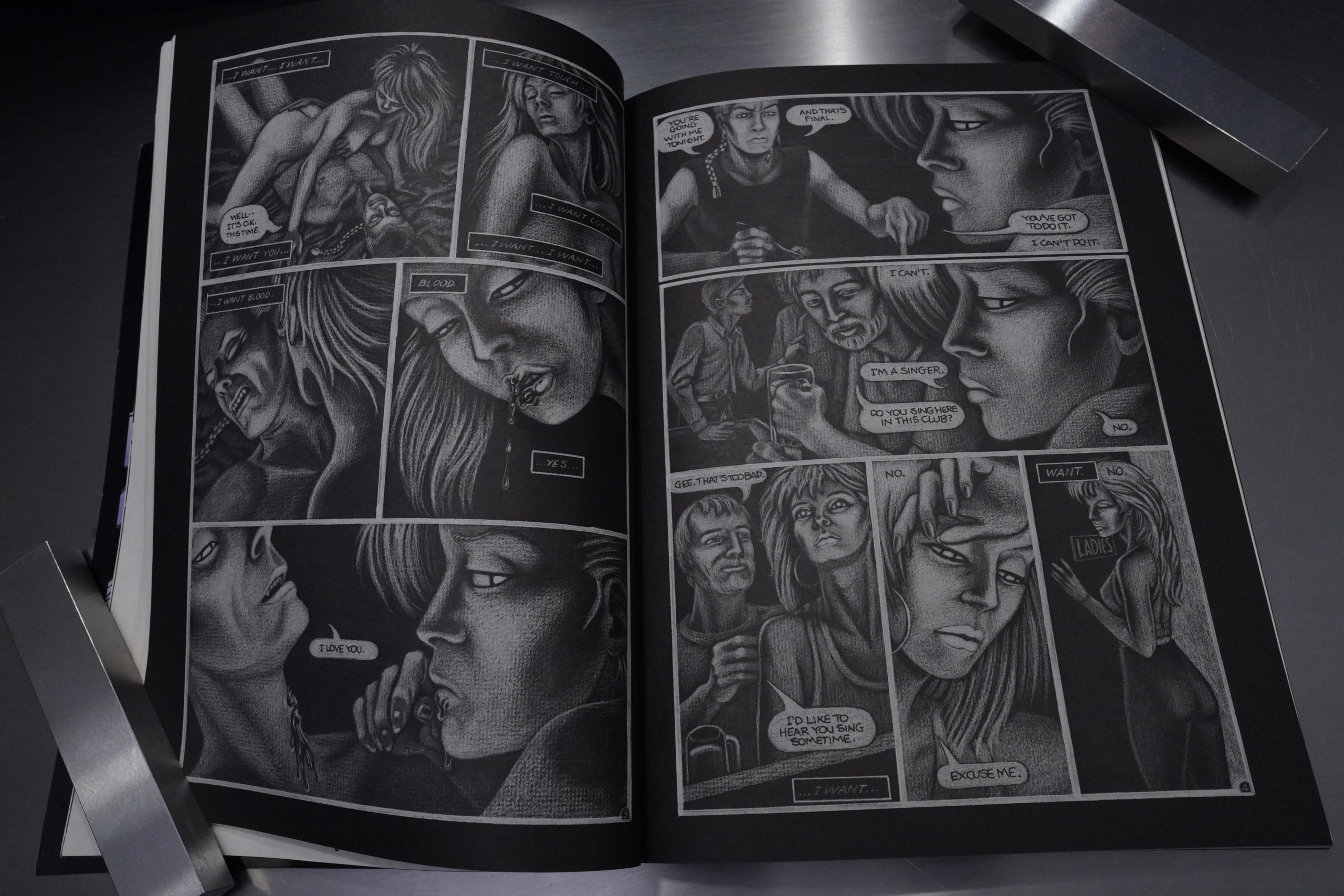
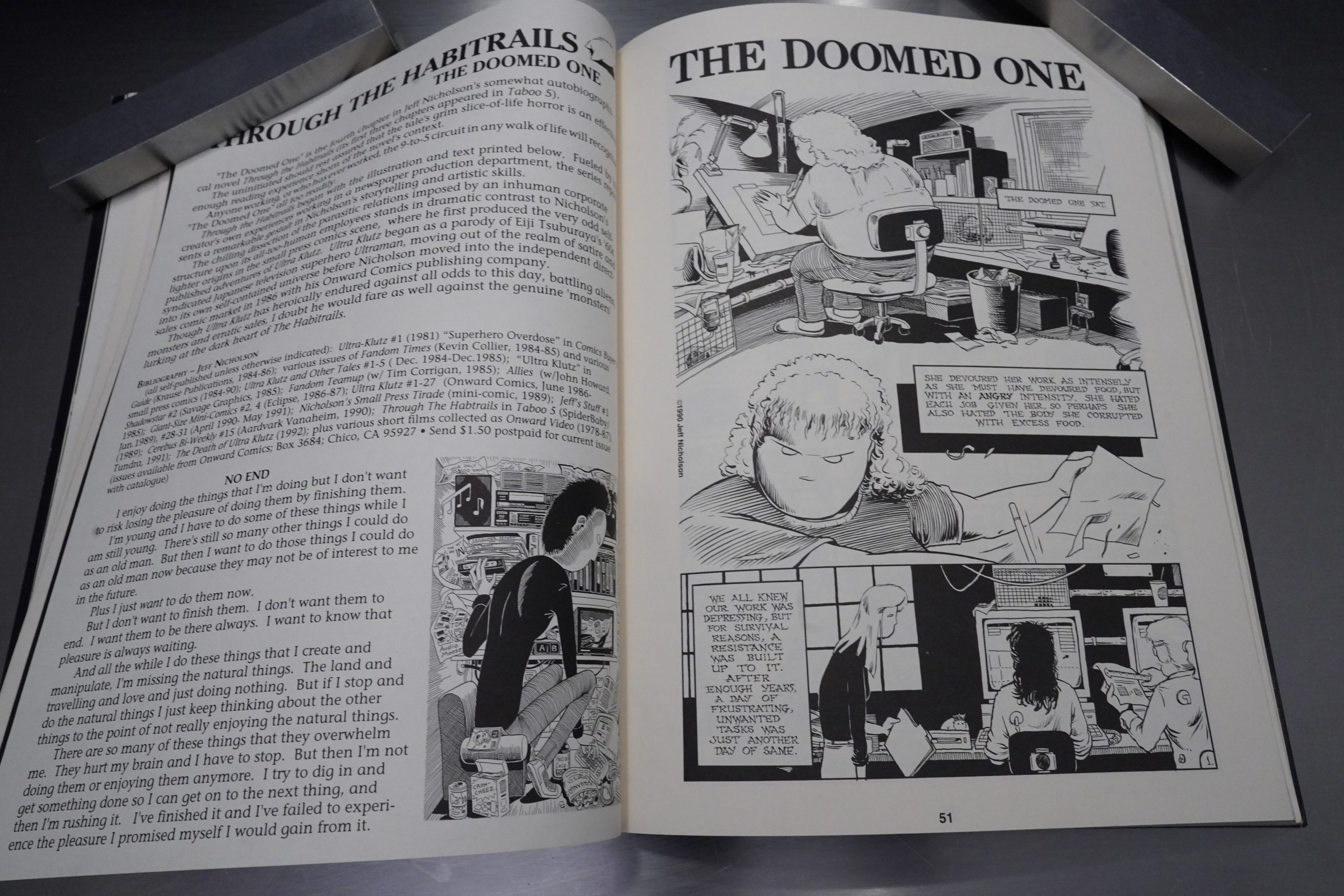
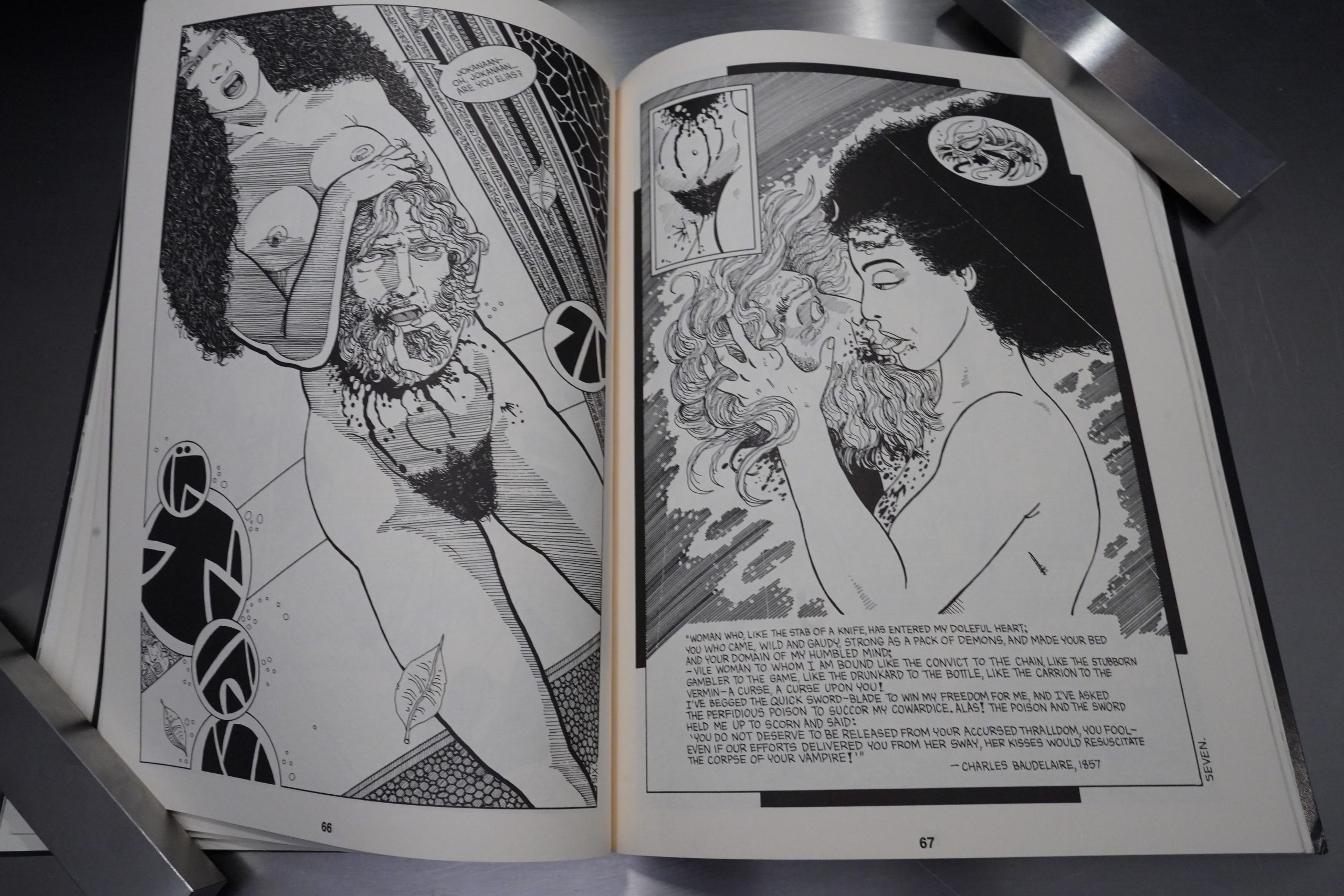
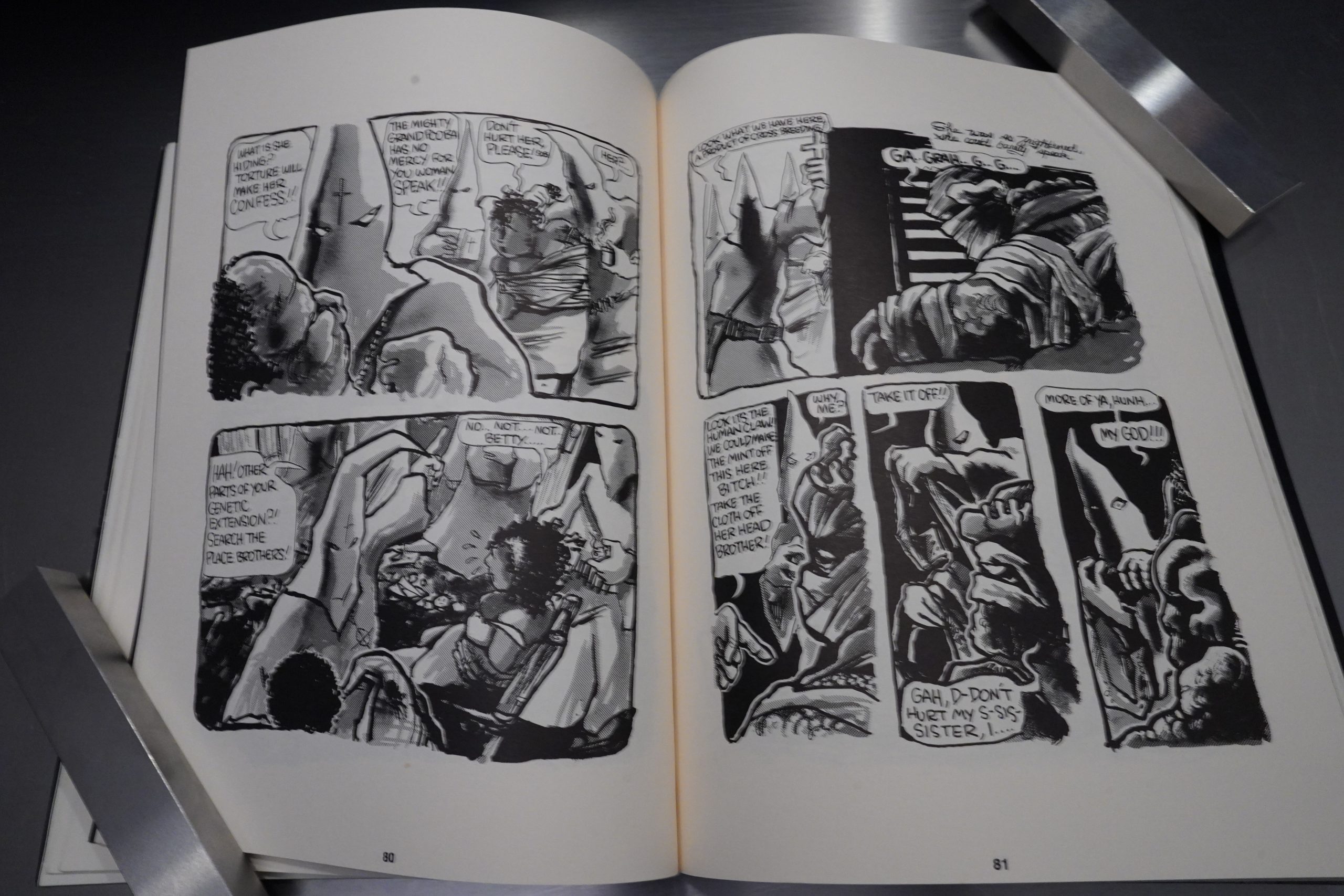
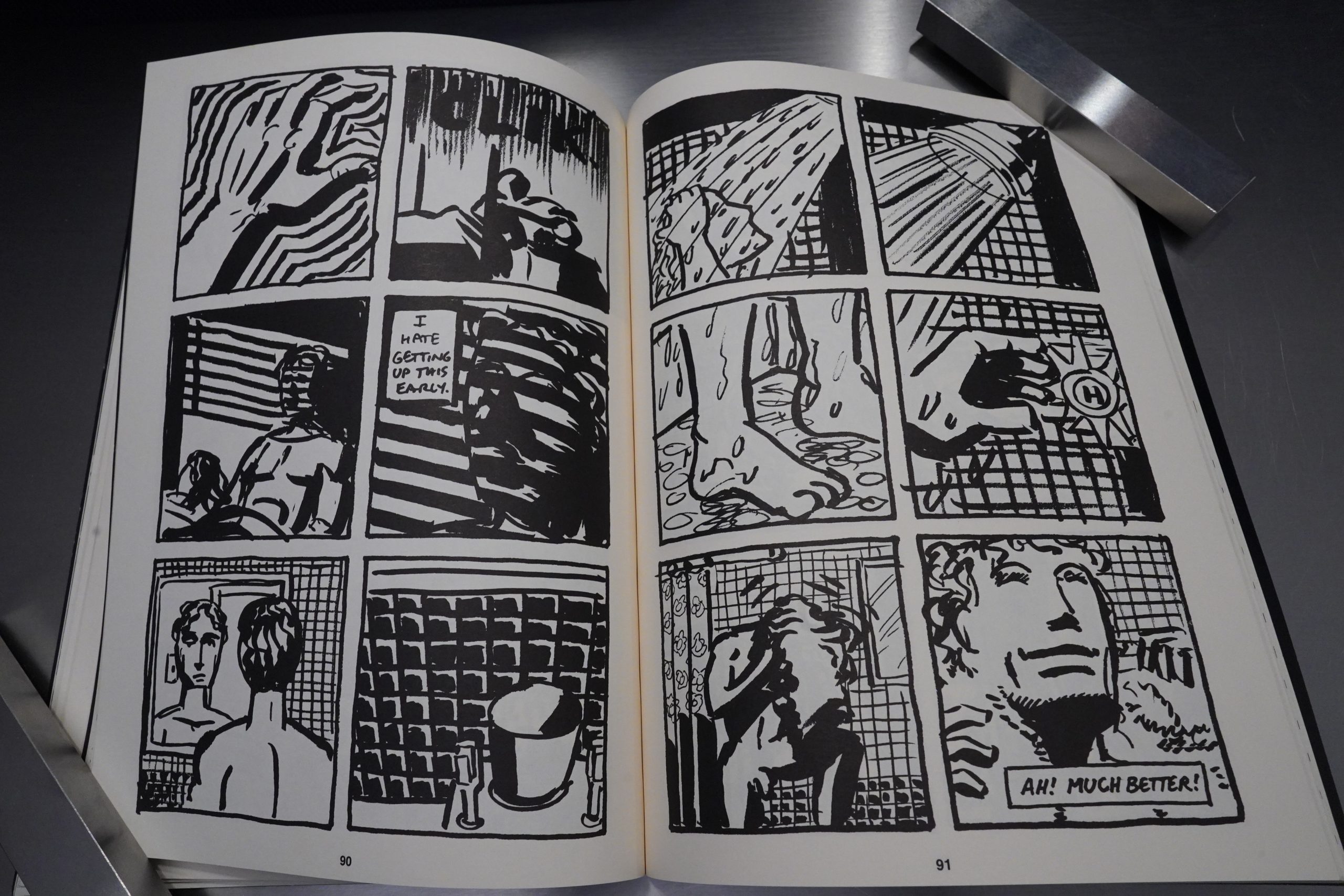
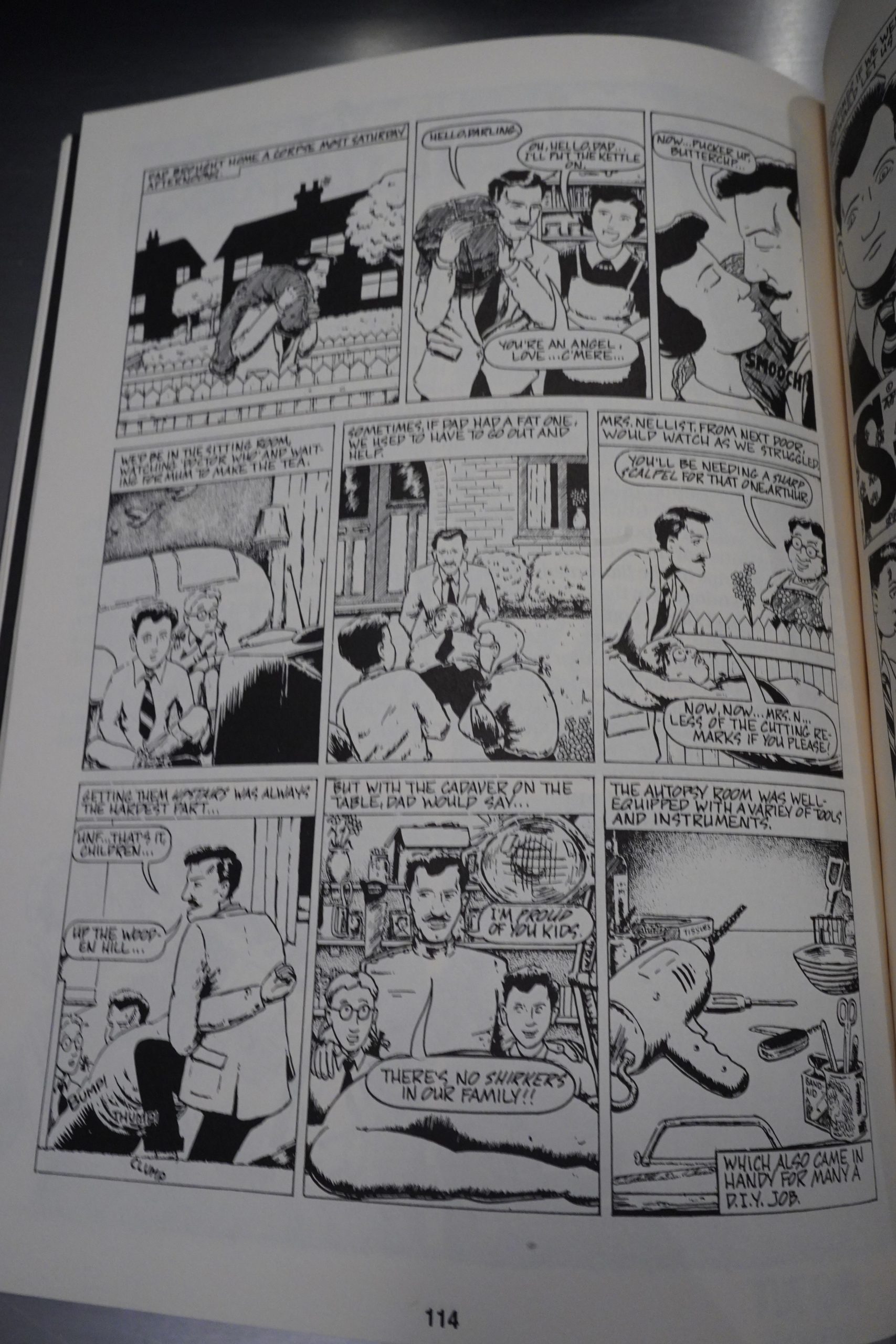
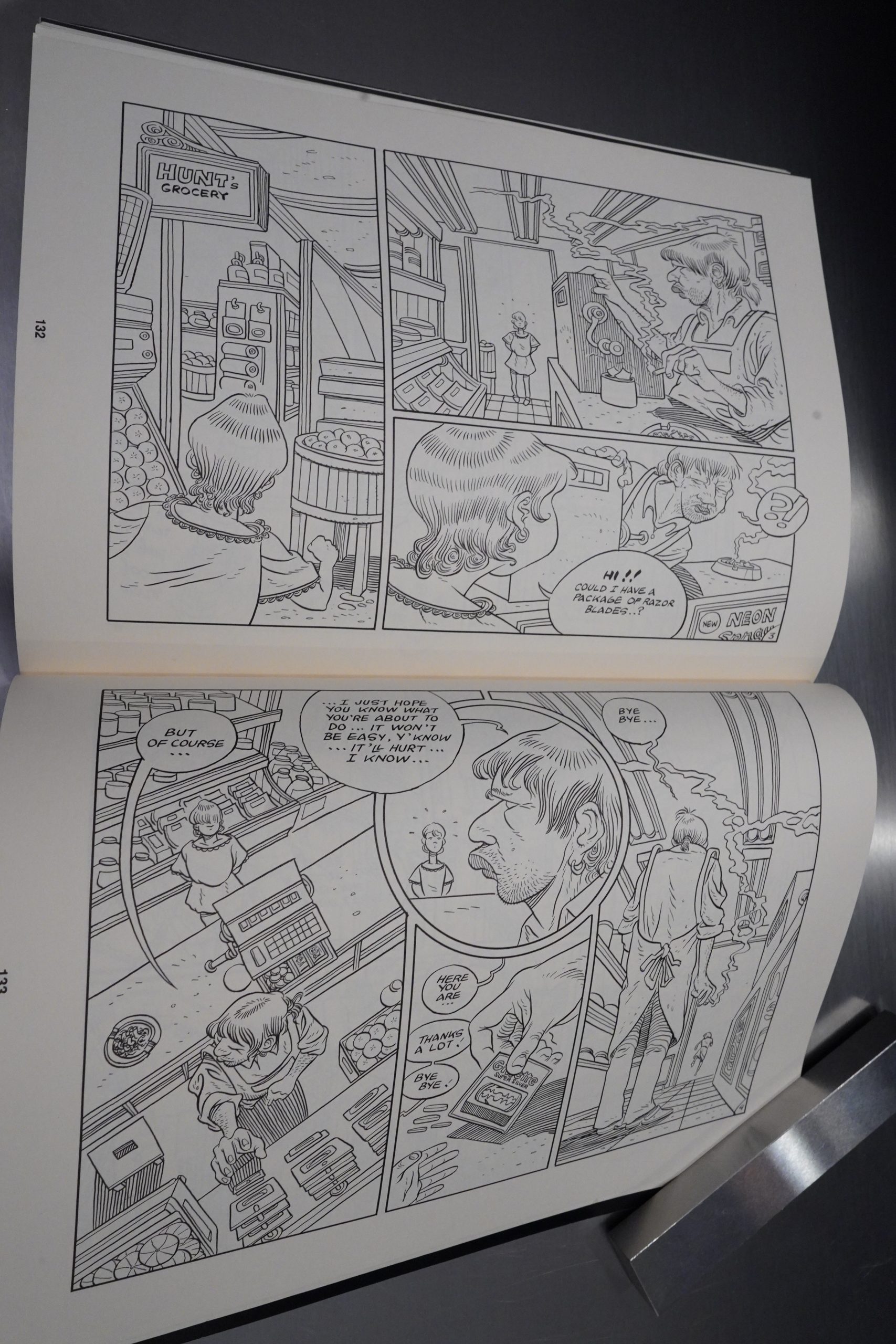
You are completely right about Especial. Bissette felt like every issue of Taboo had to be anchored by From Hell, and the next part was running late, so he put out an in-numbered issue to get the material he did have out.